life extension
description: scientific and medical research aimed at extending the human lifespan
154 results

100 Plus: How the Coming Age of Longevity Will Change Everything, From Careers and Relationships to Family And
by
Sonia Arrison
Published 22 Aug 2011
Dorff, “Becoming Yet More Like God: A Jewish Perspective on Radical Life Extension,” in Religion and the Implications of Radical Life Extension, ed. Derek F. Maher and Calvin Mercer (New York: Palgrave Macmillan, 2009), 69. 6 Sherry E. Fohr, “Karma, Austerity, and Time Cycles: Jainism and Radical Life Extension,” in Religion and the Implications of Radical Life Extension, ed. Maher and Mercer, 82. Jainism is an Indian religion that teaches nonviolence and austerity. 7 Ronald Cole-Turner, “Extreme Longevity Research: A Progressive Protestant Perspective,” in Religion and the Implications of Radical Life Extension, ed. Maher and Mercer, 59. 8 Ibid., 60. 9 Phone interview with Lawrence Iannaccone, April 1, 2010. 10 Peter Berger, “Epistemological Modesty: An Interview with Peter Berger,” Christian Century, October 29, 1997, 972–978. 11 Carl Sagan, The Varieties of Scientific Experience: A Personal View of the Search for God, ed.
…
Cameron and Amy Michelle DeBaets, “Be Careful What You Wish For? Radical Life Extension Coram De: A Reformed Protestant Perspective,” in Religion and the Implications of Radical Life Extension, ed. Maher and Mercer, 44. 58 Ghulam Ahmed Parvez, cited in Aisha Y. Musa, “A Thousand Years, Less Fifty: Toward a Quranic View of Extreme Longevity,” in Religion and the Implications of Radical Life Extension, ed. Maher and Mercer, 127–128. 59 Musa, “A Thousand Years, Less Fifty,” 128. 60 Livia Kohn, “Told You So: Extreme Longevity and Daoist Realization,” in Religion and the Implications of Radical Life Extension, ed. Maher and Mercer, 87. 61 Ibid., 95. 62 Ibid., 96. 63 Ibid. 64 Lawrence R.
…
They were thought to possess strong rejuvenation properties because of their ability to shed their skin.43 Such powers led respected thinkers to recommend medicines made from snakes, but sometimes such attempts at extending life went badly wrong. In 1633, the wife of a well-regarded Royal Society fellow died from drinking “viper wine,” and she was not the only one to have suffered in a life-extension experiment.44 Philosopher and author Francis Bacon (no relation to Roger) became deeply interested in life extension. Like Aristotle before him, Bacon thought that aging was due to a shifting in a spiritlike essence in the body, but he deviated from the Greek philosopher’s path by thinking that the human body could be repaired.45 Bacon theorized that to extend life, the human spirit or flame could not escape the body but had to be kept cool enough so that the heat from this flame didn’t damage the person from inside.
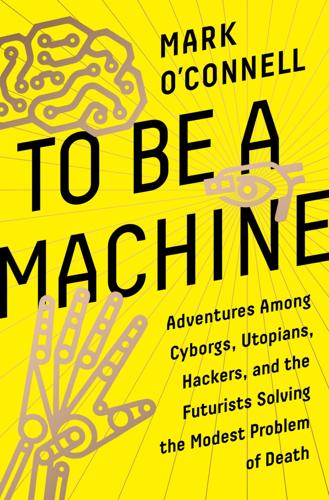
To Be a Machine: Adventures Among Cyborgs, Utopians, Hackers, and the Futurists Solving the Modest Problem of Death
by
Mark O'Connell
Published 28 Feb 2017
The more I learned about transhumanism, the more I came to see that, for all its apparent extremity and strangeness, it was nonetheless exerting certain formative pressures on the culture of Silicon Valley, and thereby the broader cultural imagination of technology. Transhumanism’s influence seemed perceptible in the fanatical dedication of many tech entrepreneurs to the ideal of radical life extension—in the PayPal cofounder and Facebook investor Peter Thiel’s funding of various life extension projects, for instance, and in Google’s establishment of its biotech subsidiary Calico, aimed at generating solutions to the problem of human aging. And the movement’s influence was perceptible, too, in Elon Musk’s and Bill Gates’s and Stephen Hawking’s increasingly vehement warnings about the prospect of our species’ annihilation by an artificial superintelligence, not to mention in Google’s instatement of Ray Kurzweil, the high priest of the Technological Singularity, as its director of engineering.
…
(You would not by any means be the first person to think here of Pascal’s Wager.) “Personally,” said Max as we made our way through the patient care bay toward the exit, “I’m hoping to avoid having to be preserved. My ideal scenario is I stay healthy and take care of myself, and more funding goes into life extension research, and we actually achieve longevity escape velocity.” He was referring here to the scenario, projected by the life extension impresario Aubrey de Grey, a scientific advisor at Alcor, whereby for every year that passes, the progress of longevity research is such that average human life expectancy increases by more than a year—a situation that would, in theory, lead to our effectively outrunning death.
…
Among the ideas he had popularized (through, among other channels, a widely consumed 2005 TED talk) was something referred to as “longevity escape velocity.” This was the notion that the pace of technological advancement in the area of life extension would eventually increase to the point that, for every year that passes, average human life expectancy increases by more than a year—at which point, the theory goes, we put a comfortable distance between ourselves and our own mortality. Over the past century or so, life expectancy had been increasing at the rate of about two years per decade, but the optimistic expectation within the life extension movement was that we would soon reach a point where the ratio flipped—thereby, as de Grey put it, “effectively eliminating the relationship between how old you are and how likely you are to die in the next year.”
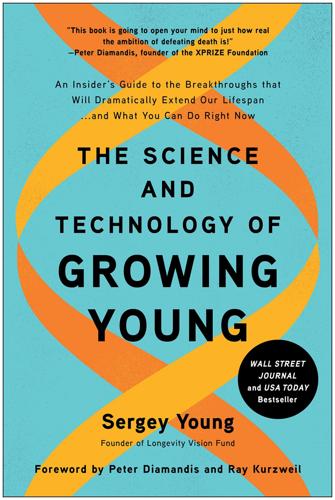
The Science and Technology of Growing Young: An Insider's Guide to the Breakthroughs That Will Dramatically Extend Our Lifespan . . . And What You Can Do Right Now
by
Sergey Young
Published 23 Aug 2021
But for the most part, The Science and Technology of Growing Young is told through the stories of the amazing people and ideas I have discovered in my quest to help one billion people live to see one hundred. I am convinced that the future will hold some form of extreme longevity. That may come in the form of radical life extension to 150 or 200 years. That may come in the form of “technical immortality,” where a new definition of life is preserved infinitely. It may even be genuine biological immortality, where human beings will have the choice to continually extend their lives or not. But I believe that radical life extension will happen, and relatively soon. But before we jump into that exciting future, let’s take a closer look at what we really mean by longevity. CHAPTER 2 DEFINING LONGEVITY The Three Dimensions of Longevity Impact and the Two Horizons of the Longevity Revolution “Aging may not have to proceed in one single direction.”
…
t=2257. 5Rodale Books, “New book released—Fantastic Voyage: Live Long Enough to Live Forever,” Kurzweil Web Page, last modified November 17, 2004, https://www.kurzweilai.net/fantastic-voyagebook-announcement. Chapter 3 1Joseph Liu, “Living to 120 and Beyond: Americans’ Views on Aging, Medical Advances and Radical Life Extension,” Pew Research Center Web Page, August 6, 2013, https://www.pewforum.org/2013/08/06/living-to-120-and-beyond-americans-views-on-aging-medical-advances-and-radical-life-extension/. 2Gallagher, James. “Fertility Rate: ‘Jaw-Dropping’ Global Crash in Children Being Born.” BBC News, BBC, 14 July 2020, www.bbc.com/news/health-53409521. Chapter 4 1Rayner, Claire. “Alex Comfort.” The Guardian, Guardian News and Media, 28 Mar. 2000, www.theguardian.com/news/2000/mar/28/guardianobituaries. 2Aubrey de Grey, Meeting with author in San Francisco in November 26, 2019. 3Sinclair, David A., and Matthew D.
…
First—Do Not Die Breaking the “Sound Barrier” of Lifespan Turning Back Time, and Growing Young The Near Horizon of Longevity: Living to Be 150 Years Old The Far Horizon of Longevity: Living to Be 200 Years Old—or More The Current Day: How to Live Long Enough to Live Forever CHAPTER 3: The Longevity Revolution—The Three Most Popular Myths About Longevity, and the Four Technological Shifts Blowing Them Apart Myth 1: “Living More Means Living Less” Myth 2: “Longevity Is Dangerous and Selfish” Myth 3: “Life Extension Is Not Really Possible” The Genetic Engineering Breakthrough The Regenerative Medicine Breakthrough The Health-Care Hardware Breakthrough The Health Data Intelligence Breakthrough CHAPTER 4: What Is Aging, Anyway?—The Colorful Theories of What Causes Aging, and Why They May Not Even Matter Theories of Aging Entering a New Era of Aging The Hallmarks of Aging Age Is in the Eye of the Epigenome Technology as Timekeeper Age Is Just a Number THE NEAR HORIZON OF LONGEVITY CHAPTER 5: DIY Diagnostics—How Wearable, Portable, Embeddable, and Ingestible New Technologies Will Deliver Early Diagnosis and Radically Reduce Disease and Death Diagnosis Is in a Deep Crisis Diagnostics Become Noninvasive and Highly Affordable Diagnostics Go DIY A Look into the (Near) Future of DIY Diagnostics Data Are at the Center of Diagnostics CHAPTER 6: Precision Medicine—How Health Data and Artificial Intelligence Are Turning the Practice of Sick Care into the Science of Health Care Getting Personalome AI to the Rescue The Promise of Precision The Doctor Won’t See You Now The Power of Virtual Connection Your Data or Your Life The Health-Care Landscape It Is A-Changin’ CHAPTER 7: Engineering Our Genetic Code—How Human Genome Sequencing Is Paving the Way for Radical New Technological Advances in Health Care and Longevity Sequencing the Human Genome Making CRISPR Work of Gene Editing Altering the Genes Inside Your Body’s Cells Could This Be the End of Cancer?
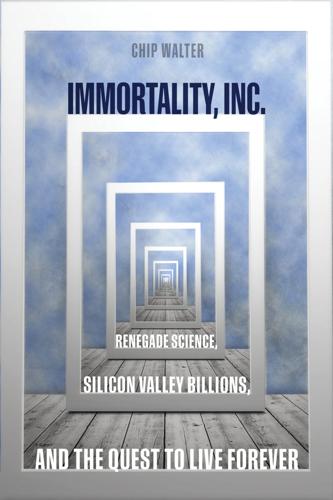
Immortality, Inc.
by
Chip Walter
Published 7 Jan 2020
William Briggs, Human Longevity, Inc. Amalio Telenti, Human Longevity, Inc. Riccardo Sabatini, Human Longevity, Inc. David Karow, Human Longevity, Inc. Heather Kowalski, Human Longevity, Inc./The J. Craig Venter Institute Max More, Alcor Life Extension Foundation Hugh Hixon, Alcor Life Extension Foundation Aaron Drake, Alcor Life Extension Foundation Diane Cremeens, Alcor Life Extension Foundation J. Craig George, North Slope Borough Department of Wildlife Management Joon Yun, Palo Alto Investors, LLC Jason Pontin, MIT Technology Review Herbert Boyer, Genentech, Inc. David Masci, Pew Research Center Carolyn Funk, Pew Research Center BOOKS Botstein, David.
…
Masci, David, and Funk, Carolyn. “Living to 120 and Beyond: Americans’ Views on Aging, Medical Advances and Radical Life Extension.” Pew Research Center, August 6, 2013. pewforum.org/2013/08/06/living-to-120-and-beyond-americans-views-on-aging-medical-advances-and-radical-life-extension. ———. “To Count Our Days: The Scientific and Ethical Dimensions of Radical Life Extension.” Pew Research Center, August 6, 2013. pewforum.org/2013/08/06/to-count-our-days-the-scientific-and-ethical-dimensions-of-radical-life-extension. McCracken, Harry, and Lev Grossman. “Google vs. Death: How CEO Larry Page Has Transformed the Search Giant Into a Factory for Moonshots.”
…
Graham, Megan Smith, and Rochelle Buffenstein. “Naked Mole-Rat Mortality Rates Defy Gompertzian Laws by Not Increasing With Age.” eLife 7 (2018): e31157. elifesciences.org/articles/31157. Shermer, Michael. “Radical Life-Extension Is Not Around the Corner-Can Science and Silicon Valley Defeat Death?” Scientific American, October 1, 2016. scientificamerican.com/article/radical-life-extension-is-not-around-the-corner. Sifferlin, Alexandra. “How Silicon Valley Is Trying to Hack Its Way Into a Longer Life.” Time, February 16, 2017. Simon, Stacy. “Cancer Statistics Report: Death Rate Down 23% in 21 Years.”

The Singularity Is Nearer: When We Merge with AI
by
Ray Kurzweil
Published 25 Jun 2024
Or their own children? Applying Nanotechnology to Health and Longevity As I discussed in my life extension book Transcend,[93] we are now in the later stages of the first generation of life extension, which involves applying the current class of pharmaceutical and nutritional knowledge to overcoming health challenges. This has been an evolving process that constantly applies new ideas, and it is the basis for the regimen I’ve followed for my own health in recent decades. In the 2020s we are starting the second phase of life extension, which is the merger of biotechnology with AI. This will involve developing and testing breakthrough treatments in digital biology simulators.
…
Both our natural intuition and a backward-looking view of history suggest that the next twenty years of advances will be roughly like the last twenty, but this ignores the exponential nature of the process. Knowledge that radical life extension is close at hand is spreading, but most people—both doctors and patients—are still unaware of this grand transformation in our ability to reprogram our outdated biology. As mentioned earlier in this chapter, the 2030s will bring another health revolution, which my book on health (coauthored with Terry Grossman, MD) calls the third bridge to radical life extension: medical nanorobots. This intervention will vastly extend the immune system. Our natural immune system, which includes T cells that can intelligently destroy hostile microorganisms, is very effective for many types of pathogens—so much so that we would not live long without it.
…
And if they were to absorb the ongoing improvements of life in all its dimensions, as elaborated on in chapter 4, most such afflictions would be alleviated. That is, extending human life would also mean vastly improving it. To imagine how life extension improves quality of life, it’s helpful to think back to a century ago. In 1924 life expectancy in the United States averaged about 58.5 years, so babies born that year were statistically expected to die in 1982.[101] But medicine saw so many improvements during that interval that many of these individuals lived into the 2000s or 2010s. Thanks to this life extension, they got to enjoy retirements during an age with cheap air travel, safer cars, cable television, and the internet.

The Transhumanist Reader
by
Max More
and
Natasha Vita-More
Published 4 Mar 2013
Even in the tragic case of Terry Schiavo a commentator not generally noted for his progressive views – President Bush – stated that it is best to “err on the side of life.” Yet those who doubt the benefits of life extension argue that condemning 100,000 people every day to an unnecessarily (as it will eventually be) early death on the basis of their age is a policy that needs no more justification than an uncertainty regarding whether life extension will be good for us. In responding to the suggestion that Kass’s “wisdom of repugnance” actually constitutes a strong argument for life extension, Hurlbut has noted that “Young children love their grandparents. They don’t find them repulsive. They see in them the beauty of the generative spirit, of the nurturing mind.”
…
Concluding Thoughts We could start off asking the question: What might be concerns of artistic works and design-based practices that approach human enhancement and life extension? Addressing this question would imply that possible questions from artistic practices are different than the questions tackled by science. It also implies that there are borders/boundaries that need to be mediated. Another question might be: If human–computer interaction is now a developed field of study, and bioart has become a promising field within the arts curriculum, is there potential that human enhancement and life extension might follow suit? Possibly. Relatedly, one might ask: Is there a rapport between aesthetics and enhancement which makes enhancement superficial and artificial, rather than being aligned with the notion of the beauty of nature and natural?
…
In fact, the areas on which I think he is right are so key to the arguments involved that I feel he is genuinely susceptible to persuasion of the merits of extreme life extension, albeit not of many other aspects of modern or anticipated biomedical modifications of our natural lives. It is seldom effective to overstate one’s disagreements, nor to overlook one’s areas of agreement, with someone whose views one would like to alter – and Kass’s influence has been so great that even a softening of his opposition to such work would have considerable policy consequences. The most straightforward way to explain what I like about Kass’s views on life extension is to refer not to their most high-profile exposition, the chapter “Ageless Bodies” from the President’s Council report (2003), but rather to two of Kass’s earlier publications.
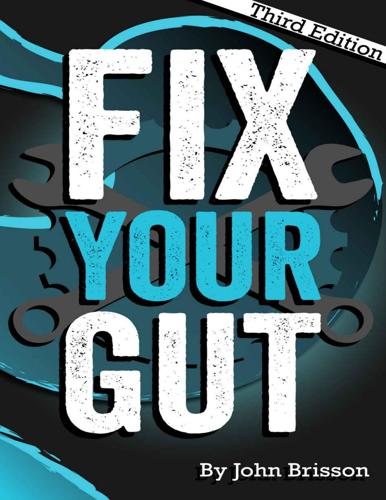
Fix Your Gut: The Definitive Guide to Digestive Disorders
by
John Brisson
Published 12 Apr 2014
NOW has a free online university through their website that helps consumers learn more about the supplements they are taking. Number 4 Company: Life Extension Life Extension is one of the oldest US-based supplement companies and manufactures their products in Florida. They are a great supplement company offering a lot of niche supplements, as well as great proprietary supplements. Life Extension does a lot of research when it comes to their supplements more than any other supplement company in the United States does! They occasionally put fillers in their products, but they maintain a high standard of excellence. I recommend that everyone sign up for the Life Extension free magazine. It is full of great information and studies.
…
Enzymedica Digestive Enzyme Gold – take one capsule with every meal daily. Thorne Research B complex– take one capsule daily, do not use if you are an overmethylator. Pure Encapsulations zinc carnosine – take one capsule with a meal, twice daily. Do not wear tight clothing or tight belts. Melatonin Life Extension extended release – take 3-10 mg before bed daily. If all else fails to relieve LES issues: Jarrow 5-HTP – follow supplement bottle recommendations, and supplement no longer than two weeks. Calcium citrate, in theory, should strengthen the LES when it encounters it if you drink it in powder form mixed with water.
…
Jarrow R-lipoic acid - one capsule, twice a daily with meals. Magnesium malate - 600 mg total daily. Enzymedica Digestive Enzyme Gold - take one capsule with every meal. Thorne Research B complex - one capsule daily, do not use if you are an overmethylator. Pure Encapsulations zinc carnosine - one capsule with meals, twice daily. Melatonin Life Extension extended release - take three mg at night daily. If all else fails to provide relief: Jarrow 5-HTP - follow supplement recommendations on the bottle. Only take for two weeks at most. Follow SIBO protocol (Ch. 9) if bacteria are present. Consider a low residue diet. Consider using spicy food or ginger to increase gastric emptying.
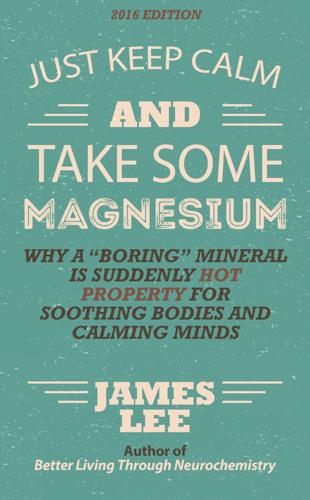
Just Keep Calm & Take Some Magnesium - Why a "Boring" Mineral Is Suddenly Hot Property for Soothing Bodies and Calming Minds
by
James Lee
Published 10 Feb 2014
When people think of anti-aging, they think of oxidative stress, antioxidants, expensive face creams and the like. However this is far too narrow a definition for anti-aging as I see it. I prefer to use the term life-extension, which is more descriptive of what it is I am looking to achieve with this book. Oh, and in the interests of disclosure, this book contains no secret tips on how to keep your skin looking its best – there are more than enough books on that already. Life extension is not just about eating broccoli and lathering Crème de la Mer on your face each night. It’s also about playing the odds. Each poor decision you make regarding your health accumulates.
…
Who is actually older – the 80 year old who can run a marathon and write a novel or a 30 year old with type-2 diabetes that sits on the couch all day because of a bad back and muscle soreness? As part of this thinking we need to broaden our definition of anti-aging far beyond the concept of life-extension. I think a better target would be “life-extension + life-optimization”. Despite this, some researchers believe that by targeting one, you naturally target the other. The latest issue of the Public Policy & Aging Report (PP&AR), titled The Longevity Dividend: Geroscience Meets Geropolitics, states that the best way to achieve improved longevity and quality of life is by targeting the slowing down of the process of biological aging rather than targeting the individual diseases separately.
…
For example, imagine that you smoke a pack a day of cigarettes ever each, drink a six pack of beer each night, drink a liter of Coca Cola each day while you work, take cocaine on weekends with your buddies, ride a high-powered motorbike everywhere (sometimes without a helmet), go skydiving each weekend, surf in an area notorious for great white sharks, have a high-stress job, rarely eat fruit or vegetables and eat a diet based primarily around junk food. How long do you think you will live? Each of your poor diet and lifestyle choices is like playing a game of Russian roulette. One day there will be a bullet in the chamber. So life extension is about a holistic plan that incrementally decreases your odds of dying by misadventure or developing a preventable disease. This is all about reducing risk, not about guaranteeing anything. Sometimes people can become fatalistic when they hear of the health fanatic that dropped dead at 40 with a heart attack.

Death Glitch: How Techno-Solutionism Fails Us in This Life and Beyond
by
Tamara Kneese
Published 14 Aug 2023
A Facebook memorial, a preserved cancer blog, a digital estate plan, or an inherited smart home: such items are hardly the same as uploading one’s consciousness, but they do serve as conduits between the living and the dead. Data provide a platform for sacred communion. For the majority of people who cannot afford top-shelf life extension treatments and elixirs—such as Peter Thiel’s reported interest in parabiosis, in this case consuming the blood of the young to remain youthful himself—digital immortality might be the only available route to living forever.77 There is a chasm between people who can afford actual life extension technologies (in the United States, this includes things like basic healthcare) and those who can train free chatbots to act in their stead. Breakdown as Method Because of the pernicious problem of platform temporality, many of the websites and links that form the body of my research have now vanished, with my screenshots and pulled quotations acting as their only physical records apart from scattered captures from the Internet Archive’s Wayback Machine.
…
This is why it is so hard to take the future personally, especially the longer future, because that world is suffused with our absence. Its very life emphasizes our hapless death.”82 Brand acknowledges that some people are living longer, referring to Bruce Sterling’s science fiction work Holy Fire, which examines the possibilities afforded by radical life extension. For Brand, life extension also leads to greater responsibility, as increasing life spans will change the structure of the world. That responsibility, however, is based on sexual reproduction and the continuation of kinship lines, not on speculative technologies like mind uploading. His investment is in monumental smart objects like the Clock of the Long Now, the GitHub open-source code vault, and the digitized Manual for Civilization.
…
Technologists fantasize about how smart systems will know us better than we know ourselves, keeping in sync with our whims and perhaps fulfilling our desires even after we die. For some transhumanists, this includes achieving immortality through chatbots and avatars or through more extreme forms of life extension and mind uploading. But all too often, interactions with virtual assistants are exasperating for users during life, let alone after death; the varied failures of smart technologies gave birth to the Internet of Shit.6 Aside from being wary of cringy miscommunications in public spaces, people live in fear of Siri or Fitbits accidentally revealing overheard personal details, from infidelities to murders.7 Smart objects promise to entangle the most intimate interactions with technology that never forgets.
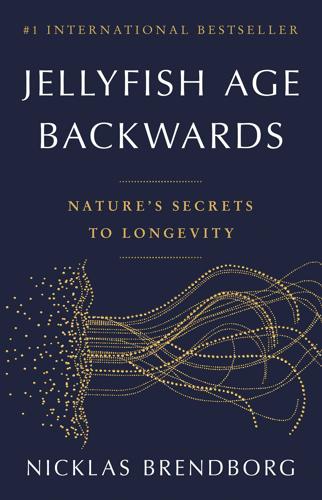
Jellyfish Age Backwards: Nature's Secrets to Longevity
by
Nicklas Brendborg
Published 17 Jan 2023
One clue is that female mammals are almost always smaller than their male counterparts. Among humans, men’s bodies are fifteen to twenty per cent larger, and on average women live a few years longer. In the few species of mammal where males and females are equally sized, like hyenas, males and females have roughly equal lifespans. We’ve yet to meet the animal that life-extension researchers hold dearest of all. Our anti-ageing all-star originates in East Africa, but is nowhere to be seen in the vast savannah landscape. Dig a few inches underground, though, and this tiny animal can be found scampering away through the miles-long tunnels it’s constructed. The naked mole-rat, as this creature is called, is not a favourite among scientists due to its looks.
…
In a Danish study of 65,000 people, those with shorter telomeres had a higher mortality rate and a higher rate of age-related diseases, such as cardiovascular diseases and Alzheimer’s. So, should we try to elongate our telomeres? Scientists haven’t tried this officially – but someone outside the normal bounds of academia has. In 2015, an American woman travelled to Colombia hoping to launch a life-extension revolution. Liz Parrish, as she is called, is neither a mad scientist nor a rich weirdo. In many ways, she is your average suburban mum. While working on stem cell advocacy, Parrish learned about the powers of telomerase. Scientists showed her how mice with long telomeres will be bouncing around full of youthful energy while similarly aged normal mice will sit in the corner, old and frail.
…
When you choose to spend over thirty years on a research project and do precisely two different studies, Murphy’s Law dictates that they’ll have to give conflicting results. And that’s exactly what happened. In the first study, the answer was yes – calorie restriction extended the lifespan of the rhesus monkeys. In fact, one of the monkeys ended up setting the species record for longevity. In the second study, however, there was no particular life extension, although the calorie-restricted monkeys did seem to be healthier while alive. The conflicting results make it hard to conclusively say whether monkeys fed fewer calories live longer. And we probably shouldn’t anticipate that a few million dollars will be set aside for a new experiment with an end date in the middle of the century.

Radicals Chasing Utopia: Inside the Rogue Movements Trying to Change the World
by
Jamie Bartlett
Published 12 Jun 2017
Like every techno-utopian, Zoltan appears to flit with misleading ease between science and fiction, taking any promising piece of research as proof of victory. The three main transhumanist technologies that excite transhumanists like Zoltan are life extension, cryonic freezing and mind uploading. Each of them is advancing quickly. But they are also highly speculative. Radical life extension seeks to use a variety of medical advances—tissue rejuvenation, regenerative medicine, gene therapy, molecular repair—to slow and eventually stop the process of ageing. Ageing, after all, is simply an accumulation of damage to cells, tissues and molecules, and so it stands to reason there are molecular and cellular solutions.
…
Transhumanism is a growing community of thousands of people who believe that technology can make us physically, intellectually, even morally better; that we can and should use technology to overcome the limits imposed by our biological and genetic heritage—especially mortality—and thereby exceed the constraints of the human condition. Like most transhumanists, Zoltan believes that death is a biological quirk of nature, something we should not accept as inevitable. Transhumanists work on a dazzling array of cutting-edge technologies to that end, everything from life extension, anti-ageing genetic research, robotics, artificial intelligence, cybernetics, space colonisation, virtual reality and cryonics. For the transhumanists, there is no ‘natural’ state of man. We’re always changing and adapting, and embracing technology is simply the next step along the evolutionary cycle.
…
Although the quest for immortality arguably starts with the very first recorded piece of literature, The Epic of Gilgamesh, a 4,000-year-old poem about Gilgamesh’s quest for the secret of eternal life, transhumanism’s modern roots are found in the ideas of early twentieth-century science-fiction writers such as Isaac Asimov and the biologist Julian Huxley (brother of Aldous), who coined the term ‘transhuman’ to mean ‘beyond human’ in his 1951 book Knowledge, Morality and Destiny.2 Huxley, an agnostic on religious matters, thought that man’s natural evolution was of ever higher degrees of complexity, towards the ‘fullest realisation of his own inherent possibilities’, even if that meant transcending humanity. As science and technology started to have a profound effect on society in the 1960s and 1970s, those ‘inherent possibilities’ started to stretch. Organisations—often inspired by Huxley’s or Asimov’s writing—were founded to promote life extension and various types of radical futurist thinking. By the mid-1980s small groups of self-described transhumanists started meeting formally in California to discuss if and how technology might change human existence. In 1990—the year of the first gene-therapy trials, the first designer babies, and the World Wide Web—Max More set out a coherent philosophy of the movement in an influential paper called ‘Transhumanism: towards a futurist philosophy’.

The Mysterious Mr. Nakamoto: A Fifteen-Year Quest to Unmask the Secret Genius Behind Crypto
by
Benjamin Wallace
Published 18 Mar 2025
GO TO NOTE REFERENCE IN TEXT signed up with Alcor when he was twenty: Andrew Fenton, “Roger Ver’s Next Life: Cryonics Meets Crypto,” Magazine by Cointelegraph, April 28, 2021. GO TO NOTE REFERENCE IN TEXT Vitalik Buterin had donated crypto to life extension organizations: Kelsie Nabben, “Crypto Leaders Are Obsessed with Life Extension. Here’s Why,” Magazine by Cointelegraph, August 11, 2021. GO TO NOTE REFERENCE IN TEXT Brad Armstrong made the largest gift yet to Alcor: “Unprecedented $5 Million Contribution to Cryonics Research!,” Alcor, announcement, May 15, 2018.
…
At the meeting, Romana Machado, who was both a software developer for Apple’s handheld Newton device and a “glamor model” who went by Cypherella (Playboy, November 1985), debuted Stego, a piece of free software she’d written that let you hide a message in an image. Machado was also a member of a group called the extropians, with which Szabo became deeply involved too. Extropians were devoted to transhumanism, or extreme life extension. This encompassed everything from smart drugs to artificial intelligence to the Singularity, that moment in the future when humans could be uploaded to the cloud. Szabo called it “Future Rapture.” Extropianism stood for expansion of all sorts. The extropian T-shirt read, “Forward, Upward, Outward,” and a number of group members took sunny, techno-optimist nicknames like Jay Prime Positive, Tom Morrow, Max More, and David Victor de Transcend.
…
“They had better drugs, no question,” Doug Barnes, who belonged to both groups, recalled, and “were certainly better looking, more fit.” The chance for geeks to hang out with pretty girls “was part of our brand,” Tom “Morrow” Bell, one of the group’s cofounders, echoed. The list of group interests was a syllabus for the future leaders of twenty-first-century Silicon Valley: life extension, space colonization, homeschooling, biohacking, consciousness-uploading, AI, self-sovereignty, seasteading, digital money, antistatism, transhumanism, polycentric law, prediction markets, digital nomads (their term was tech nomads), and memetics, among other things. A remarkable number of members were or would become influential.
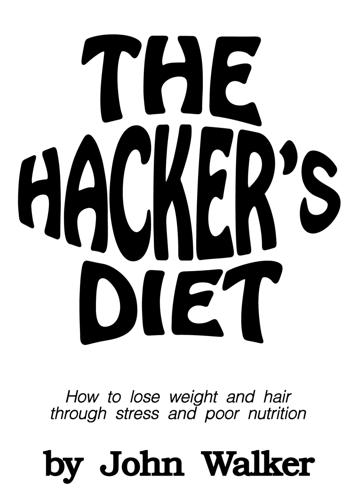
The Hacker's Diet
by
John Walker
Food and Feedback Helpings, extra Serving size: helpings don't help Henry IV of France Accomplish more Heywood, John Better health Hippocrates Live longer Homer Late night, hungry, and alone Hunger Breaking down (fat) is hard to do, Late night, hungry, and alone Illness When you're sick Ingredients Ingredients Juice Juice Kentucky Fried Chicken Kentucky Fried Chicken Ketones Fatty Metabolite and the Ketones Least squares Calculating best fit trends Life extension Living longer, Live longer Linear regression Calculating best fit trends Liquid, consumption during diet Drink lots of liquids Liquid, daily throughput Input/Output Management Managing problems Manipulation Motivation and manipulation Manual calculation, calorie deficit Calculating calorie deficit Manual calculation, charting Making weight charts Manual calculation, daily trend Calculating daily trend Manual calculation, diet forecast Forecasting weight loss Manual calculation, feedback models Calculating feedback models Manual calculation, life extension Forecasting life extension Manual calculation, moving averages Calculating moving averages Manual calculation, trend fitting Calculating best fit trends Manual calculation, weekly loss Calculating weight loss rate McDonald's McDonald's Meals, planning Planning Meals Meals, schedule How many meals, and when?
…
In addition, exercise carried all the unpleasant connotations of high school calisthenics, or the equivalent indignity of more modern, yet equally regimented, forms of workouts. But is there a flaw in this argument after all? Indeed there is. The premises are correct, but the conclusion doesn't account for the fact that regular exercise will, in all likelihood, allow you to live longer. Let's look at the numbers. This “Life Extension Worksheet” is provided as an Excel worksheet. You may want to load LIFEXT.XLS and plug in your own numbers to compare with mine. Directions for calculating increased lifespan by hand are given in the Pencil and Paper chapter. So, if you're 40 years old, and you exercise 15 minutes a day from now until you turn 65, you'll have spent a total of about a quarter of a year exercising in those 25 years.
…
So, if you're 40 years old, and you exercise 15 minutes a day from now until you turn 65, you'll have spent a total of about a quarter of a year exercising in those 25 years. But, if by exercising you manage to live 3 years longer, you're ahead by a total of two and three quarters years by age 65—1000 days. Your increased life span works out to an additional 172 minutes per day from age 40 through 65. Even after spending 15 minutes exercising, the life extension you can expect from getting into shape gives you what amounts to two and half more hours per day to do whatever you enjoy most! Even if you live only one additional year through physical fitness, you'll still end up with 270 more days by exercising. Of course, we're talking percentages here; you could be run over by a truck tomorrow.
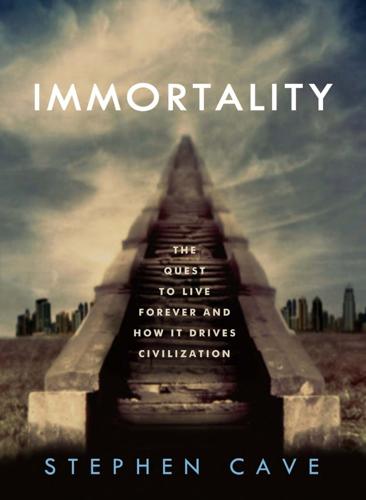
Immortality: The Quest to Live Forever and How It Drives Civilization
by
Stephen Cave
Published 2 Apr 2012
Another enthusiastic and readable immortalist is Ray Kurzweil, as reflected in his many books and articles on the subject, most notably Fantastic Voyage: Living Long Enough to Live Forever (with Terry Grossman, Rodale, 2004), Transcend: Nine Steps to Living Well Forever (also with Terry Grossman, Rodale, 2009) and The Singularity Is Near: When Humans Transcend Biology (Viking, 2005). The Immortality Institute, an organization dedicated to promoting radical life extension, has also published a collection of articles on the science and philosophy of the immortalists (including by Kurzweil and de Grey) called The Scientific Conquest of Death: Essays on Infinite Lifespans (Libros en Red, 2004). At the time this book went to print, this collection was also available to download for free from imminst.org/book. A philosophical defense of radical life extension is offered by the work of John Harris, for example in Enhancing Evolution: The Ethical Case for Making People Better (Princeton University Press, 2007), whereas those altogether opposed to such attempts are well represented by Francis Fukuyama in his book Our Posthuman Future: Consequences of the Biotechnology Revolution (Profile Books, 2002).
…
Bryan Appleyard’s aforementioned How to Live Forever or Die Trying and Jonathan Weiner’s Long for This World: The Strange Science of Immortality (HarperCollins, 2010) both give good (somewhat skeptical) layman’s accounts of the modern life-extension movement’s aims and leading personalities. The demographer who calculated that curing cancer would add only three years to our lives was S. Jay Olshansky, and the pessimistic view of the possibility of radical life extension can be found in his book (with Bruce A. Carnes) The Quest for Immortality: Science at the Frontiers of Aging (W. W. Norton, 2001). An excellent overview of the science of life, death, aging and immortality can be found in The Living End by the gerontologist Guy Brown (Palgrave Macmillan, 2007).
…
It therefore begins with the basics, the things that all humans need to keep going: food and drink, shelter and defenses. As societies develop, they refine the provision of these essentials, through collaborative efforts, specialization of labor and passing on of skills. At its core, a civilization is a collection of life-extension technologies: agriculture to ensure food in steady supply, clothing to stave off cold, architecture to provide shelter and safety, better weapons for hunting and defense, medicine to combat injury and disease. But whereas most people are satisfied with applying these technologies to themselves, their families or their villages, the First Emperor had a much grander vision.

Team Human
by
Douglas Rushkoff
Published 22 Jan 2019
Piece by piece, or maybe all at once, we become what transhumanists argue is the next stage of evolution: some hybrid of person and machine, or maybe an entirely digital species. Along the way, though, we take on an increasingly mechanistic understanding of our personhood. Ironically, transhumanism is less about embracing the future than fixing the human experience as it is today. Medical and life extension interventions seek only to preserve the person who is alive right now. Cryonics seeks to freeze the human form in its current state in order to be reanimated in the future. Uploading one’s mind simply transfers the human brain, or a perfect clone of it, as is, into a more durable substrate. In some ways, transhumanism is a reactionary response to the sorts of changes inherent in nature, a defiant assertion of the individual against its own impermanence.
…
The screen is encroaching on the eye, from TVs to computer monitors to phone screens to smart watches to VR goggles to tiny LEDs that project images onto the retina to neural implants that communicate directly with the optic nerve. With each leap in human–machine intimacy, resolution increases, and our utility value is improved along some measurable metric. This is the mindset encouraged by wristbands that count our heartbeats and footsteps under the pretense of improved health or life extension. Health, happiness, and humanity itself are all reducible to data points and subject to optimization. We are all just numbers: the quantified self. Like a music recording that can be reduced to code and stored in a file, the quantified human can also be reduced to bits, replicated infinitely, uploaded to the cloud, or installed in a robot.
…
The internet’s tremendous social and intellectual potential was surrendered to short-term market priorities, turning a human-centered medium into a platform for manipulation, surveillance, and extraction. The more we see the human being as a technology to be enhanced, the greater the danger of applying this same market ethos to people, and extending our utility value at the expense of others. Life extension becomes the last-ditch attempt of the market to increase our available timeline as consumers—and consumers willing to spend anything for that extra few years of longevity. Sure, many of us would accept a digital implant if it really worked as advertised. Who wouldn’t want some painless enhancements, free of side effects?

Longevity: To the Limits and Beyond (Research and Perspectives in Longevity)
by
Jean-Marie Robine
,
James W. Vaupel
,
Bernard Jeune
and
Michel Allard
Published 2 Jan 1997
The extended life span is due to a three-fold slowing in the exponential rate of mortality increase (Johnson 1990). Four other mutations lead to significant extension of adult life span in C. elegans. spe-26 mutants result in life extensions of about 65 % for the hermaphrodite and the mated male (Van Voorhies 1992; Murakami and Johnson 1996), although recent observations (Gems and Riddle 1996) suggest that the life extension may be artifactual and result from inappropriate comparisons with wild type. daf-2 mutants result in a more than Identifying and Cloning Longevity-Determining Genes in the Nematode 159 two-fold extension of mean life span (Kenyon et al. 1993), and this extension is blocked by the action of daf-16.
…
Several hundred laboratories across the world use C. elegans to study development, behavior, and physiology. C. elegans reproduces by self-fertilization, yet has a facultative male, which makes it extremely easy to identify mutations, even those that affect life span (Klass 1983; Duhon et al. 1996). For analysis of life extension and other life history traits, the lack of inbreeding depression is extremely important (Johnson and Wood 1982; Johnson and Hutchinson 1993). Moreover, because of its small genome size (10 8 base pairs) and genetic sophistication, C. elegans has been chosen as a model organism for the Human Genome Project.
…
Larsen et al. (1995) showed that daf-23 doubles the life expectancy, and also showed that daf-2 interacts with daf-12 to cause an almost four-fold enhancement of life prolongation. Wong et al. (1995) reported that several alleles of a new gene, elk-I, which have altered the normal course of the cell cycle and of development, also have a increased life span. The several unpublished cases of additional life-extension loci suggest that the total number of gerontogenes in C. elegans may be near 10. Physiological Role of These Gerontogenes All of the mutations mentioned above, with the exception of age-I, also alter some other aspect of the normal development or physiology of the nematode (Table 1). spe-26 mutants are male sterile, indicating a defective step in fertilization that turns out to be at the point of spermatid formation (Varkey et al. 1995).

The Contrarian: Peter Thiel and Silicon Valley's Pursuit of Power
by
Max Chafkin
Published 14 Sep 2021
If you believed that the decline of organized labor was bad for America, and Thiel somehow maneuvered the conversation in that direction, you knew enough to change the subject to an area of potential common ground—life extension, for instance. Thiel had begun donating to the Methuselah Foundation, a nonprofit dedicated to the idea of curing aging, which it claimed mainstream science was ignoring; some Clarium staffers, including Thiel, were customers of Alcor Life Extension Foundation, the cryonics center. In terms of work that would be recognizable as such, well, there wasn’t much. Most days they would clear out a little around 3 p.m.
…
Abraham, Jack, 169 Abramowitz, Marc, 221 Abrams, Dan, 229 Accenture, 312 Access Hollywood, xi, 242, 244 Accidental Billionaires, The (Mezrich), 159 Adamson, Chris, 16 Advocate, 243, 244 Affirm, 151, 331 Afghanistan, 146, 148–49 African Americans, 176–78, 186 see also racism aging and death, see life extension AIDS, 32, 34 Airbnb, xiii, 189, 190, 309 Air Force, U.S., 235 Alcor Life Extension Foundation, 101 Alford, Peggy, 298 Alibaba, 262 Al Qaeda, 113, 146 bin Laden’s killing, 151–55, 215 Altman, Sam, 269–70, 331 alt-right, 197, 202–4, 229, 231, 233, 242, 255, 270–72, 278, 282, 304, 333 see also white supremacists, white nationalists Amazon, 55, 56, 259, 261–62, 286–87 COVID pandemic and, 309 America-Lite (Gelernter), 252 American Civil Liberties Union, 111, 154 American Enterprise Institute, viii American Express, 221, 298 American Spectator, 42 American Thunder, 98–99 Anderson, Martin, 15 Andreessen, Marc, 46–48, 171, 298, 308 Andregg, William, 138, 167–68, 191 Anduril, 151, 285, 286, 290, 309, 333 Angelou, Maya, 265 Anonymous, 150 Anslow, Louis, 172, 270 antitrust law, 83, 85, 212, 261, 274, 281, 300 Anton, Michael, 283, 288 apartheid, 5–6, 18–19, 24, 176, 178 Apollo program, 143, 145 Apple, 8, 75–76, 124–25, 145, 163, 259, 260, 263, 309, 334 Arab Spring, 275 Ardern, Jacinda, 306 Army, U.S., 146–49, 216–17, 234–35, 258–59, 284 Army Times, 216 Arpaio, Joe, 236 Asimov, Isaac, 8 Asparouhov, Delian, 331 AT&T, 223 Atlantic, 135, 191, 212, 244 Atlas, Scott, 316 Atlas Shrugged (Rand), 53 Axios, 323 Ayyadurai, Shiva, 229, 233 Baffler, 176, 192 Baio, Scott, 237 Baked Alaska, 255 Banister, Cyan, 297 Banister, Scott, 49 Bank of America, 150 Bannon, Steve, xi–xii, 219, 223, 236, 237, 241, 242, 246, 249, 250, 251, 254–56, 257, 260, 262, 265, 269, 271, 272, 300, 304, 314, 328 Barrack, Thomas, 237 Barron’s, 102, 129 Bartiromo, Maria, 283 Bass, Jules, 10 Beck, Glenn, viii, x, 217 Beenz, 56, 68, 72 Behnken, Bob, 310 Bennett, Bill, 26, 198, 261 Benton, Jesse, 181, 354n Berico, 150 Bezos, Jeff, vii, xii, 231, 257, 259–62 Biddle, Sam, 229 Biden, Hunter, 303, 316 Biden, Joe, 303, 304, 319, 320, 328, 332, 333 Big Short, The (Lewis), 132 Billpoint, 56, 65, 76, 79, 90 Bingham, Eli, 151 bin Laden, Osama, 146 killing of, 151–55, 215 Black Lives Matter, 197, 199, 202, 304, 316 Blacks, 176–78, 186 see also racism Bliss, Nishanga, 7, 10–11 blitzscaling, 76–77, 81 Bloom, Allan, 30 Bloomberg, 104, 233, 304 Bloomberg Businessweek, 119 Bollea, Terry (Hulk Hogan), xv, 182, 195–97, 201, 227–34 Bolton, John, 247–48, 288 Bono, 76 Book, Norman, 24, 53 Boomer, Ross, 199 Bosworth, Andrew, 246 Botha, Roelof, 69–72, 87–88, 108 Bounds, Ryan, 37 Bowden, Mark, 152–53 Bowles, Erskine, 298 Bozell, David, 245 Brand, Stewart, 144 Brant, Peter, 228 Brant, Peter, II, 228 Breitbart, 203, 219, 231, 242, 282, 304, 332 Breivik, Anders, 176 Brin, Sergey, xii, 259, 263 Brinkley, Alan, 45 Broaddrick, Juanita, 243 Brooks, David, 170 Brooks, Michael, 287 Brown, Michael, 187, 199–200 Buckley, Christopher, xvi Buckley, William F., xvi, 17, 33 Burke, Edmund, 25 Burnham, John, 204–5 Bush, Billy, 242 Bush, George H.
…
Though Gawker was still as critical as ever—“Thiel is spinning so much bullshit,” Valleywag complained in late 2014, referring to Thiel’s argument about a slowdown in innovation—the rest of the press had mostly acceded to the Hollywood view of the man. The Washington Post featured him in a series of Q&As with people who were “shaking up philanthropy,” focusing on his support of research into life extension. “I’ve always had this really strong sense that death was a terrible, terrible thing,” he said. “I think that’s somewhat unusual.” He added that he hoped his work to extend the human lifespan would be his legacy. At the moment, Thiel’s investment firm, Founders Fund, was throwing money behind the hottest Silicon Valley trend: the “sharing economy.”

Ageless: The New Science of Getting Older Without Getting Old
by
Andrew Steele
Published 24 Dec 2020
Moody et al., ‘Recombinant manganese peroxidase reduces A2E burden in age-related and Stargardt’s macular degeneration models’, Rejuvenation Res. 21, 560–71 (2018). DOI: 10.1089/rej.2018.2146 ageless.link/z7dgq9 This work is described quite accessibly in a video from the Life Extension Advocacy Foundation conference 2019: Kelsey Moody, ‘Macular degeneration talk at Ending Age-Related Diseases 2019’ (Life Extension Advocacy Foundation, YouTube, 2019) ageless.link/fjekaq There’s already a drug called Remofuscin … F. Yuan et al., ‘Preclinical results of a new pharmacological therapy approach for Stargardt disease and dry age-related macular degeneration’, ARVO 2017 E-Abstract (2017) ageless.link/ojsizw … get rid of their toxic stockpiles Another example is under development by a company called Underdog Pharmaceuticals, who hope to use sugars called cyclodextrins to remove oxidised cholesterol from atherosclerotic plaques.
…
Klass’s results seemed to confirm this thinking: mutating a few genes in a worm couldn’t extend its life, other than by the back-door route of depriving it of food. He ended up quitting academic science in frustration, but his colleague Tom Johnson took up the quest with remarkable tenacity. Johnson was hoping that the worms’ life extension was real, and that he could use it to double down on the existing dogma and prove that ageing was controlled by many different genes. He knew that these mutation-inducing chemicals typically introduced about twenty errors in each worm’s DNA, so it was quite possible that the long-lived worms possessed a string of genetic alterations, some positive, some negative, and all ripe for investigation.
…
He managed to produce some worms which ate as much as normal, but still had long lifespans. DR ruled out, he bred some of these long-lived and well-fed worms with N2s. To his astonishment, the worm-children produced by this union had normal lifespans. The simplest explanation for this observation was that a single gene was responsible for the life-extension observed.* If there were many genes involved, it was highly unlikely that the entire effect would vanish in the first generation – you’d expect the lifespan of the cross-bred worms to be somewhere in between N2 and the long-lived mutants. Then, breeding the long-lived mutants with each other didn’t enhance lifespan further – suggesting that they all shared either the same or a very similar genetic mutation.
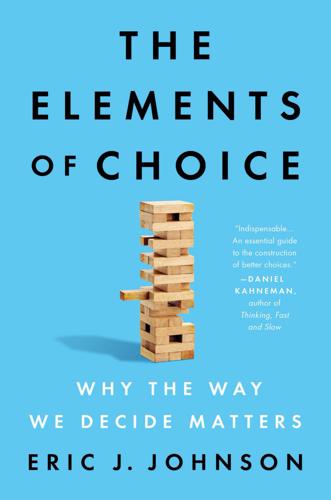
The Elements of Choice: Why the Way We Decide Matters
by
Eric J. Johnson
Published 12 Oct 2021
The advance directive given to them by the researchers first asked what their goal for care was: life extension or comfort care. For a third of the patients, the directive had a comfort-care default, indicated by a prechecked box. A second group had no preselection, and the third group had the life-extension goal already checked. Comfort care was selected 77 percent of the time when it was the default, 66 percent of them time when no option was preselected, and only 43 percent of the time when life extension was the default. Similar results were seen for choices involving specific interventions, like having a feeding tube.
…
Comfort care, which emphasizes minimizing pain and invasive procedures, was selected by the majority of patients in the Halpern-led study when there was no default. But if you don’t make a choice, that is not what happens in reality. Unless the patient or their immediate family says otherwise, the patient will be treated as if they had chosen life extension. In other words, it is the default option, and they will receive those treatments. The design of most of the commonly used advance directives seems to bias people toward life extension. For example, “I want to have life support” is the first option on one commonly used document. Assuming patient autonomy and ignoring the influence of choice architecture has a significant impact on suffering, cost, and dignity.
…
When people are gravely ill, they can choose interventions that could extend their lives, but these therapies are intrusive and unpleasant, and the time added to your life often comes with the price of being put on a ventilator or having a feeding tube inserted. Grouped together, these treatments are called life-extension care. The alternative is called comfort care. The latter involves declining many invasive interventions and focusing on managing pain and ensuring comfort. Ideally, these decisions should involve the patient and be made in advance, in the form of a living will, or what doctors call an advance directive.
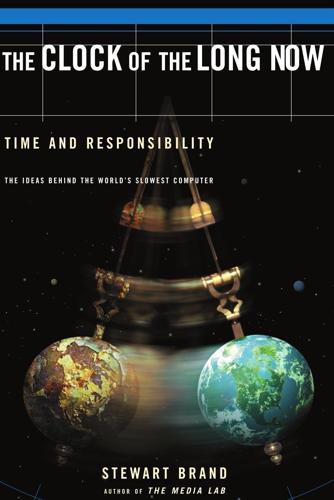
Clock of the Long Now
by
Stewart Brand
Published 1 Jan 1999
Living long enough to know your great-grandchildren has become the norm, even with delayed childbearing. Among the things that the new elders are doing with their power—and their accumulated wealth—is directing ever more sophisticated research toward life extension. I have heard biotech scientists seriously ask one another, off the record, “What if we cure death?” Whether or not effective immortality actually comes, its prospect is now in sight, and that itself begins to change things. The best science fiction on life extension is Bruce Sterling’s Holy Fire (01996). In its deliberately stable world dominated by the “medical-industrial complex,” one character explains, “When you live a really long time, it changes everything.
…
People complain about overwhelming masses of information on the Web, but one of its inventors, Tim Berners-Lee, comments, “To be overloaded by the existence of so much on the Web is like being overloaded by the mass of a beautiful countryside. You don’t have to visit it, but it’s nice to know it’s there. Especially the variety and freedom.” The Internet may be showing the way to live with an infinite amount of past in infinite detail, and still encourage freedom to innovate without the need of violent revolution. Add in drastic life extension, due soon, and you get quite a different world, one that might say about our world: “Can you imagine what it was like when people and programs had to die, whether they wanted to or not? No wonder it took so long for culture to get anywhere. Everything and everyone was starting over all the time—the same dumb mistakes over and over again.
…
The toughest problem will be building software that will forgive us our trespasses and trespass not against us. There is no real glimmer yet how to approach the question but also no reason to give up on it. As for computer professionals routinely thinking and acting with long-term responsibility, that may come gradually as a by-product of the Year 2000 comeuppance, of life extension, of environmental lessons, and of globalization (island Earth). At issue here is how to address the management of digital continuity over time, how to shorten the digital dark age. Pure information can have astonishing longevity. In 1090 C.E. the Chinese genius Su Sung built a monumental water-driven mechanical clock for his emperor.

The Long Boom: A Vision for the Coming Age of Prosperity
by
Peter Schwartz
,
Peter Leyden
and
Joel Hyatt
Published 18 Oct 2000
You'll have even more incentive because you will benefit from the positive long-term effects. The reverse holds true as well. People will be less apt to maintain an I-got-mine mentality and rape the planet of natural resources or leave a mess of pollution for the people coming later. Life extension is a development that will reinforce the more environmentally friendly mentality that the world needs. Life extension is completely in sync with the Long Boom. 203 TecNrMolocjy EMIRATES NATURE NANOTEch's ENckjAME All stories need to start somewhere, and the nanotechnology story starts with Richard Feynmaa, the world-famous physicist, giving an after-dinner talk at his hometown campus, the California Institute of Technology, on December 29, 1959, There, he addressed a national society of experimental physicists in a speech called "There's Plenty of Room at the Bottom."
…
The Human Genome Project—the cracking of the human genetic code—was completed a full five years ahead of its original schedule. The first practical genetic therapy was successfully completed on several hemophilia patients and appears to have effected a cure. This development could pave the way for many other genetic therapies. Advanced Cell Technology made a possible breakthrough in life extension by creating clones from the cells of an adult cow. These cows have cells that do not seem to deteriorate, and so they have a high likelihood of living much longer than normal. Meanwhile, more than 500 new biotech therapies have moved into the late stages of testing and are poised to enter the market in the next five years.
…
In many ways networked computers are the great enablers of the other technologies that are to come. But developments in biotechnology—that is, manipulation at the genetic and molecular level—are going to create a revolution similar to the digital revolution we're in now. Biotechnology will transform medicine and health care, leading to many wonders, including life extension to more than 120 years. The fuel cell and other new energy technologies are already proving that the world can lessen its dependence on oil as the primary energy source and can rely instead on the much more environmentally benign hydrogen. The fuel cell will soon replace the internal combustion engine— transforming the global auto and oil industries, which are already starting to prepare for the transition.
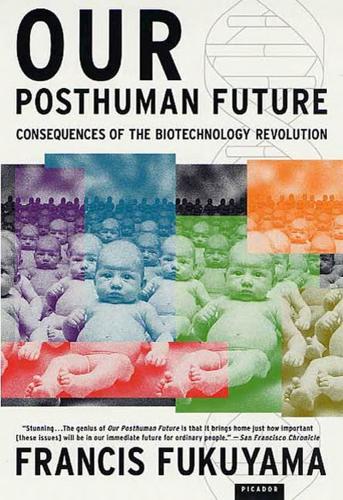
Our Posthuman Future: Consequences of the Biotechnology Revolution
by
Francis Fukuyama
Published 1 Jan 2002
The SIR2 gene represses genes that generate ribosomal wastes that build up in yeast cells and lead to their eventual death; low-calorie diets restrict reproduction but are helpful to the functioning of the SIR2 gene. This may provide a molecular explanation for why laboratory rats fed a low-calorie diet live up to 40 percent longer than other rats.7 Biologists such as Guarente have suggested that there might someday be a relatively simple genetic route to life extension in humans: while it is not practical to feed people such restricted diets, there may be other ways of enhancing the functioning of the SIR genes. Other gerontologists, such as Tom Kirkwood, assert flatly that aging is the result of a complex series of processes at the level of cells, organs, and the body as a whole, and that there is therefore no single, simple mechanism that controls aging and death.8 If a genetic shortcut to immortality exists, the race is already on within the biotech industry to find it.
…
With life expectancies only in the 40s or 50s for most of human history, societies could rely on normal generational succession to take care of this problem. Mandatory retirement ages came into vogue only in the late nineteenth century, when increasing numbers of people began to survive into old age.d Life extension will wreak havoc with most existing age-graded hierarchies. Such hierarchies traditionally assume a pyramidal structure because death winnows the pool of competitors for the top ranks, abetted by artificial constraints such as the widely held belief that everyone has the “right” to retire at age 65.
…
If they don’t, generational warfare will join class and ethnic conflict as a major dividing line in society. Getting older people out of the way of younger ones will become a significant struggle, and societies may have to resort to impersonal, institutionalized forms of ageism in a future world of expanded life expectancies. Other social effects of life extension will depend heavily on the exact way that the geriatric revolution plays itself out—that is, whether people will remain physically and mentally vigorous throughout these lengthening life spans, or whether society will increasingly come to resemble a giant nursing home. The medical profession is dedicated to the proposition that anything that can defeat disease and prolong life is unequivocally a good thing.
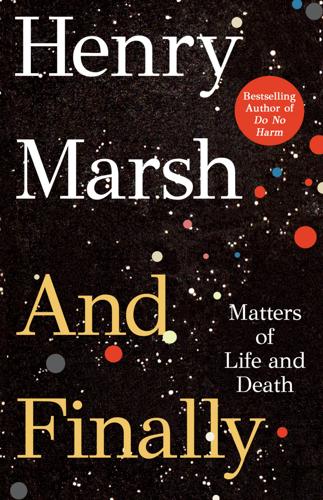
And Finally
by
Henry Marsh
And although my fear of death now takes the form of fear of dying, I suspect that beneath this there is still a deep, irrational fear of death itself, of nothingness, of having no future. So much of present time is spent thinking about future time – either with anxiety or happy anticipation – that the thought of having only the present left, with no future to come, is frightening. Driven by this fear of having no future, enthusiasts for life extension, who call themselves transhumanists, see the genetic basis of lifespan as grounds for great optimism that death will be overcome. Death, they argue, is no longer inevitable – just as a salamander can grow a new limb after amputation, or a lizard a new tail, it should be possible, with suitable technological advances, for us to regenerate ourselves endlessly.
…
The Nobel Prize-winning stem-cell scientist Shinya Yamanaka showed that almost all specialised cells can be reprogrammed backwards to become what are called induced pluripotent cells. These are cells very similar to the original precursor stem cells that produced the specialised cells that Yamanaka started with. Enthusiasts for life extension see Yamanaka’s technique as the route to eternal life. Research to date in mice, using this technology, tends to produce tumours called teratomas instead of long-lived mice, but we are only at the beginning of this kind of research. There are recent reports which suggest this problem can be overcome.
…
The cells of a whale are no larger than the cells of a mouse, so whales have many millions more cells than mice, and yet whales do not suffer more cancer than smaller animals. Indeed, they suffer less cancer. There are many theories that attempt to explain this paradox, and the enthusiasts for life extension see it as evidence that there is nothing fixed about lifespan, at least as regards cancer. The problem, however, is that the mechanisms for suppressing cancer seem, in some way, to be closely related to ageing – that ageing is the price we pay for avoiding cancer when we are young and busy reproducing ourselves.
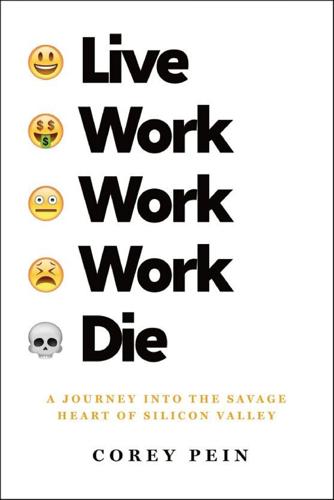
Live Work Work Work Die: A Journey Into the Savage Heart of Silicon Valley
by
Corey Pein
Published 23 Apr 2018
Thiel’s support for technophilic extremists did not stop with Anissimov. The billionaire was, for example, among the most important clients of an outfit called the Alcor Life Extension Foundation, which promised to freeze the dead for later resuscitation. Max More, an Alcor employee and self-proclaimed guru of “extropian” futurism, had given a presentation on “cryonics as a bridge to an indefinitely extended life” at the same BIL conference where Thiel donee Curtis Yarvin appeared. The bearded British life extension researcher Aubrey de Grey spoke at BIL that year about his work in “anti-aging bioscience.” De Grey whiled away most of his days at the Thiel-funded, Mountain View–based SENS Research Foundation, a nonprofit organization also dedicated to the quixotic cause of achieving human immortality.
…
BIL’s programs were characteristically packed with California oddities, and in 2012 there were so many “sex positive” talks—covering everything from “orgasmic meditation” to polyamory and sex tips for “geeks, introverts and self-identified Aspies”—that a dedicated “boiler room” was set aside for them. BIL’s bread and butter, however, was the typical stuff of Silicon Valley pipe dreams: indefinite life extension, the Singularity, genetic engineering, and space travel. Amid some evident kooks lurked a sizable contingent of aerospace engineers and executives, including Virgin Galactic CEO and former NASA chief of staff George T. Whitesides. BIL was, in short, a who’s who of free-market techie futurism.
…
The trick will be to survive a few more decades, until the inventions of atom-scaled medical nanobots and digital backups of human consciousness. “We have the means right now to live long enough to live forever,” Kurzweil writes. “But most baby boomers won’t make it.” This led to his other scammy obsession—life extension. To help his own rapidly aging generation survive until the arrival of the technological tipping point when they might upload their memories and personalities to a Google cloud server—around 2045, he figures—he promotes a program of diet, exercise, and unproven life-extending supplements. If all else fails to ward off the Reaper, one can always have one’s body or brain frozen for later resuscitation, a process known as cryonics, which Kurzweil endorses as a last resort.
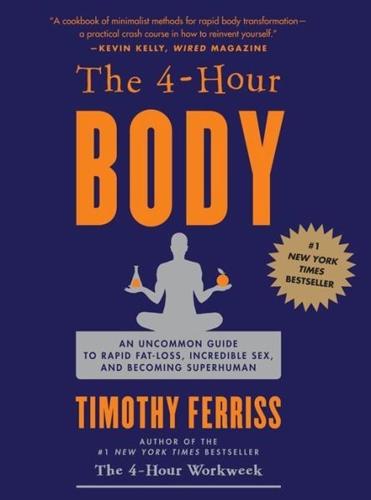
The 4-Hour Body: An Uncommon Guide to Rapid Fat-Loss, Incredible Sex, and Becoming Superhuman
by
Timothy Ferriss
Published 1 Dec 2010
TAKE A COLD BATH ONE HOUR PRIOR TO BED. The Japanese have longer average lifespans than most other nationalities, including Americans, whom they beat by more than four years. One explanation researchers have proposed is that the regular ofuro, or hot bath at bedtime, increases melatonin release and is related to mechanisms for life extension. Paradoxically, according to one of the Stanford professors who taught the sleep biology class I took circa 2002, cold is a more effective signaler (aka zeitgeber, or “time giver”) for sleep onset. Perhaps the ofuro effect was related to the subsequent rapid cooling? Not eager to kill my swimmies with hot baths, I opted for direct cold.
…
ON LONGER AND BETTER LIFE LIVING FOREVER Vaccines, Bleeding, and Other Fun There is nothing in biology yet found that indicates the inevitability of death. —Richard Feynman, co-recipient of 1965 Nobel Prize in Physics Not life, but good life, is to be chiefly valued. —Socrates This will be the shortest chapter on life-extension ever written. Let it begin, as all good short chapters do, with a story of two monkeys: Canto and Owen. Housed at the University of Wisconsin, these two rhesus monkeys are as close to identical as possible, with one exception. Canto is on a diet. Specifically, his calories are restricted to 30% less than normal.
…
It’s the difference between the guy who got the marbleized rib-eye and the guy who got the oh-so-lean filet. Or between the guy who got a Château Grand Pontet St. Emilion with his brie and the guy who got water. As Edgar notes in King Lear, “Ripeness is all.” You don’t get to ripeness by eating apple peel for breakfast.… When life extension supplants life quality as a goal, you get the desolation of Canto the monkey. Living to 120 holds zero appeal for me. Canto looks like he’s itching to be put out of his misery.… We don’t understand what the mind secretes. The process of aging remains full of enigma. But I’d bet on jovial Owen outliving wretched Canto.… Laughter extends life.

The Singularity Is Near: When Humans Transcend Biology
by
Ray Kurzweil
Published 14 Jul 2005
Having done that, we have the ability to find the ideas to confront and resolve each such problem . ·We can apply the enormous leverage provided by the acceleration of technology. A notable example is achieving radical life extension through "a bridge to a bridge to a bridge" (applying today's knowledge as a bridge to biotechnology, which in turn will bridge us to the era of nanotechnology).4 This offers a way to live indefinitely now, even though we don't yet have all the knowledge necessary for radical life extension. In other words we don't have to solve every problem today. We can anticipate the capability of technologies that are coming—in five years or ten years or twenty—and work these into our plans.
…
We have seen comparable mistakes during earlier paradigm shifts—for example, during the early railroad era (1830s), when the equivalent of the Internet boom and bust led to a frenzy of railroad expansion. Another error that prognosticators make is to consider the transformations that will result from a single trend in to day's world as if nothing else will change. A good example is the concern that radical life extension will result in overpopulation and the exhaustion of limited material resources to sustain human life, which ignores comparably radical wealth creation from nanotechnology and strong AI. For example, nanotechnology-based manufacturing devices in the 2020s will be capable of creating almost any physical product from inexpensive raw materials and information.
…
These will usher in what I referred to earlier as Epoch Five, the beginning of the Singularity. We are in the early stages of the "G" revolution today. By understanding the information processes underlying life, we are starting to learn to reprogram our biology to achieve the virtual elimination of disease, dramatic expansion of human potential, and radical life extension. Hans Moravec points out, however, that no matter how successfully we fine-tune our DNA-based biology, humans will remain "second-class robots," meaning that biology will never be able to match what we will be able to engineer once we fully understand biology's principles of operation.2 The "N" revolution will enable us to redesign and rebuild—molecule by molecule—our bodies and brains and the world with which we interact, going far beyond the limitations of biology.

Artificial You: AI and the Future of Your Mind
by
Susan Schneider
Published 1 Oct 2019
I first learned of transhumanism while an undergraduate at the University of California at Berkeley, when I joined the Extropians, an early transhumanist group. After poring through my boyfriend’s science fiction collection and reading the Extopian listserv, I was enthralled by the transhumanist vision of a technotopia on Earth. It is still my hope that emerging technologies will provide us with radical life extension, help end resource scarcity and disease, and even enhance our mental lives, should we wish to enhance. A FEW WORDS OF WARNING The challenge is how to get there from here in the face of radical uncertainty. No book written today could accurately predict the contours of mind-design space, and the underlying philosophical mysteries may not diminish as our scientific knowledge and technological prowess increase.
…
Philosophers call the characteristics that a thing must have as long as it exists “essential properties.” Now let’s reconsider the transhumanist’s trajectory for enhancement. It is portrayed as a form of personal development. However, even if it brings such goodies as superhuman intelligence and radical life extension, it must not involve the elimination of any of your essential properties. What might your essential properties be? Think of yourself in first grade. What properties have persisted that seem somehow important to your still being one and the same person? Notice that the cells in your body have now changed, and your brain structure and function have altered dramatically.
…
Bostrom (2014, p. 109). 16. Seung (2012). 17. Hawkins and Blakeslee (2004). 18. Schneider (2011). 19. Baars (2008). 20. Clarke (1962). CHAPTER EIGHT: IS YOUR MIND A SOFTWARE PROGRAM? 1. This quote is from The Guardian (2013). 2. Harmon (2015a, p. 1). 3. See Harmon (2015a); Alcor Life Extension Foundation (n.d.). 4. Crippen (2015). 5. I’m grateful to Kim Suozzi’s boyfriend, Josh Schisler, for a helpful email and telephone conversations about this (August 26, 2018). 6. Harmon (2015a). 7. Harmon (2015a). 8. Harmon (2015a). 9. Schneider (2014); Schneider and Corabi (2014). For an overview of different steps of uploading, see Harmon (2015b). 10.
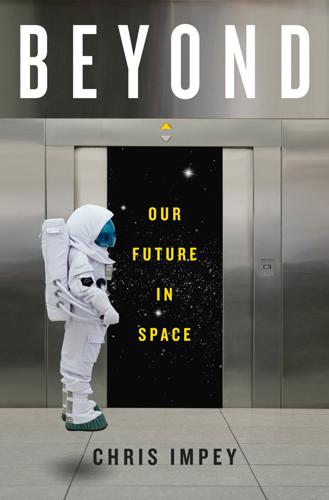
Beyond: Our Future in Space
by
Chris Impey
Published 12 Apr 2015
Another variant of the singularity takes current efforts to fight disease and projects them into radical life extension, where technology helps us overcome all our mental and physical limitations. Ray Kurzweil has been the most eloquent proponent of this future. He’s a founder of the Singularity University, where the tech world’s movers and shakers pay tens of thousands of dollars for short courses on the cutting edge in AI and nanotechnology. Critics have mocked the idea of the singularity as the “rapture of the nerds,” and they’ve noted that only the wealthy will benefit from radical-life-extension technology. The goal of researchers like Kurzweil is simple: immortality.
…
By the age of fourteen, his mother had died and he had given up formal schooling. A reclusive teenager, he moved to Moscow so he could spend long hours at a local library, where he studied physics and astronomy. At the library he was influenced by Nikolai Fyodorov, a futurist who advocated radical life extension and immortality and who thought that the future of humanity lay in space. He also stumbled on the works of Jules Verne and became inspired by Verne’s tales of space travel. Tsiolkovsky’s family recognized his talent but worried that he was studying obsessively and forgetting to eat. When he was nineteen, his father brought him back home and helped him get a teaching credential so he could earn a living.
…
Once they learn how to miniaturize them, biohackers will implant themselves with medical sensors that can talk to a smartphone and a device that will let fingers “see” by echolocation.31 This goes beyond sensory extension to the creation of entirely new senses. The philosophical movement that forms an umbrella for cybernetics and cyborgs is called transhumanism. Transhumanism is a worldwide cultural and intellectual movement that seeks to use technology to improve the human condition. Radical life extension is one aspect, as is the enhancement of physical and mental capabilities. Two prominent transhumanists are Nick Bostrom, a University of Oxford philosopher who has assessed various risks to the long-term survival of humanity, and Ray Kurzweil, the engineer and inventor who popularized the idea of the singularity, a time in the not-too-distant future when technology will enable us to transcend our physical limitations.
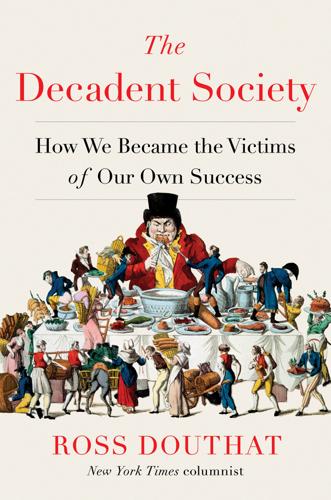
The Decadent Society: How We Became the Victims of Our Own Success
by
Ross Douthat
Published 25 Feb 2020
Meanwhile, we also hype the changes that are supposedly just around the corner: the alternative energy revolution that’s always poised for takeoff; the genetic engineering breakthrough that will deliver designer babies any day now; the dramatic artificial intelligence leap forward that will either usher in utopia or end with our extermination at the hands of some misanthropic Skynet; the radical life-extension hack that will either add fifty years to our lifespans or enable us to upload ourselves into virtual immortality; the “new study” that offers hope for curing Alzheimer’s or Parkinson’s or cancer; the robots that are supposedly about to take over all our jobs. Even the stars are making a comeback: I’m writing this paragraph with a copy of Bloomberg BusinessWeek beside me that hypes the new Silicon Valley–funded space race.
…
But a society being fundamentally transformed by automation would have sharp productivity growth, of the kind we used to have and briefly enjoyed in the Internet’s first flower, rather than the productivity stagnation afflicting both the United States and Europe. For all the bright talk about radical life extension, too, recent medical progress has come primarily in the fight against rare conditions that affect small populations, rather than big killers such as cancer, heart disease, and Alzheimer’s. Obviously, if you’re a parent of a child with cystic fibrosis, for which a long-awaited treatment just arrived, or a mother whose baby was just saved from a congenital defect by surgery in the womb, or an Iraq War veteran with a miraculous-seeming prosthetic, the progress that we have experienced is amazing, and the fields that generate them are obviously not decadent.
…
Maybe we have simply been in a kind of bottleneck for the last few generations, achieving important scientific breakthroughs that don’t (yet) translate into society-altering changes. At a certain point, we’ll clear the bottleneck, and it will become clear that our era was a necessary prelude to renewed acceleration—eventually giving us self-driving cars courtesy of a finally profitable Uber, a Mars colony courtesy of the Elon Musk–Jeff Bezos space race, and radical life extension courtesy of Google’s longevity lab or some other zillionaire who can’t imagine shuffling off this mortal coil. All of this could happen on a scale that would be world altering without having the truly utopian scenarios come to pass. Terraforming Mars and becoming a multiplanetary species may be unattainable for now—but just going to Mars would be a bigger leap for mankind than anything we’ve accomplished since Neil Armstrong.
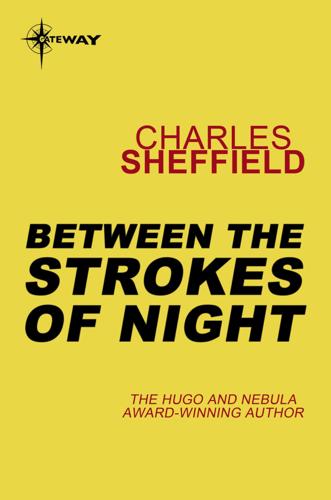
Between the Strokes of Night
by
Charles Sheffield
Published 28 Apr 2013
The pattern in every one is the same: discovery of S-space; exploitation of S-space, as a means of subjective life extension and interstellar space travel; and then, after a shorter or longer period, the realization that S-space existence, sufficiently continued, brings with it physical decline and finally death. As a means of seeking immortality, S-space is a blind alley.” “Immortality!” It was not clear how many people said the word, but it lingered as a murmur around the chamber. “Let us say, potential immortality. No one knows the maximum attainable life-span of an intelligence, but this we do know: maximal life extension is impossible for an embodied form that uses S-space, T-state, or any of their variations.
…
He seemed uneasy, and lacking in confidence. “I read it wrong. I thought the reason for being here in Gulf City was safety from outside interference, and control of S-space. The whole advantage of being an ‘Immortal’ was presented to us as increased subjective life span — but now I wonder about that.” “You are right to do so. We have life-extension methods available, ones that came out of S-space research and allow increased life span in normal space. And probably they will let the subject enjoy life more keenly, too. But you can’t solve the problem thrown at us by the Kermel Objects unless you can work on it for a long time. That means Gulf City, and it means S-space.”
…
No one knows the maximum attainable life-span of an intelligence, but this we do know: maximal life extension is impossible for an embodied form that uses S-space, T-state, or any of their variations. Ultimately, time consumes flesh. Maximal life extension requires conversion to immaterial form.” “Pure spirit,” Emil Garville said softly. “Use that word if you wish. Stabilized fields is a name we would prefer. In any case, your own species faces a choice: material existence, which offers immortality only in the form of offspring; or a move to immaterial form, where we believe that the duration of existence of individual consciousness may be unlimited. “Now.” The body of Judith Niles sat up straighter in its chair. “We have given you as much information as we think it wise for you to have.

12 Bytes: How We Got Here. Where We Might Go Next
by
Jeanette Winterson
Published 15 Mar 2021
There’s a new kind of quasi-religious discourse forming, with its own followers, its creed, its orthodoxy, its heretics, its priests, its literature, its eschatological framework. Even its own Singularity. It’s AI. * * * Our new AI religion has what all religions have. Believers: the Singularity disciples, the Transhuman evangelists (there’s even a Mormon group), the Biohax converts, the life-extension enthusiasts, the start-up brain-uploaders, the science labs printing 3D body parts, the stem-cell researchers who will ‘match’ your perfect body ideal – so many, so different, yet all of these sharing a Gnostic unorthodoxy of loosely overlapping ideas anchored to the central, but updating text of accelerating change, inside and outside the human body.
…
Ray Kurzweil, ‘Breakfast with the FT’, April 2015 Ray Kurzweil, Director of Engineering at Google, Futurist and AI guru, hopes to be alive for long enough to see lifespan, including his own lifespan, dramatically increase. He takes around 100 supplements a day, to maintain his health, and to slow the ageing process – these supplements are not a smash-and-grab from the pharmacy; they are tailored for his body by a physician. In case he does run out of time, Kurzweil has signed up to the Alcor Life Extension Foundation in Scottsdale, Arizona. Alcor is a cryopreservation institute. If you are interested in the details, their website is excellent: www.alcor.org. Cryonics aims to pause death by vitrification. Once a person is pronounced legally dead, there is enough time, says Alcor, providing their team is ready and waiting, to empty your body of fluids, then vitrify it.
…
They were sci-fi, not science. Cryopreservation is still regarded with scepticism by most medical establishments – even though cryonics is used to freeze embryos. Alcor moves the preservation principle to the end of life, not its beginning. An embryo, though, is not a whole body, or a brain. Life-extension theory is moving towards brain-only preservation, because if technology really does succeed in preserving and returning a brain kept in cold storage, or in scanning the contents of a brain before biological death, then by that time the merger of science and tech will be so advanced that building a new body, with or without biological components, will be no more of a challenge than organ transplant is today.
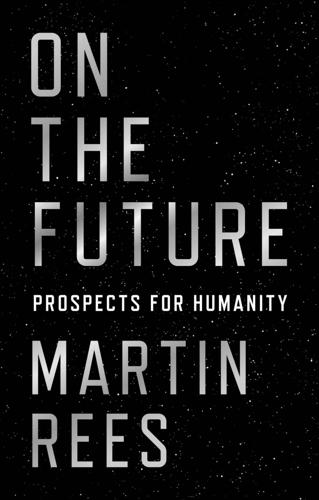
On the Future: Prospects for Humanity
by
Martin J. Rees
Published 14 Oct 2018
But there’s one unprepossessing creature, the naked mole rat, which may have some special biological lessons for us; some live for more than thirty years—several times longer than the lifespan of other small mammals. Any major breakthrough in life extension for humans would alter population projections in a drastic way; the social effects, obviously huge, would depend on whether the years of senility were prolonged too, and on whether the age of women at menopause would increase with total lifespan. But various types of human enhancement via hormonal treatment may become possible as the human endocrine system is better understood—and some degree of life extension is likely to be among these enhancements. As with so much technology, priorities are unduly slanted towards the wealthy.
…
See also robots air traffic control, 108 Alcor, 81–82 Aldrin, Buzz, 138 aliens, intelligent: communicating through shared mathematical culture, 160, 168; with different perception of reality, 160, 190; early history of speculation on, 126–27; Earth’s history seen by, 1–2; likelihood of, 154–56, 162; possibly pervading the cosmos, 8, 156; search for, 156–64. See also planets; SETI (search for extraterrestrial intelligence) Allen, Woody, 178 ALMA radio telescope in Chile, 207 AlphaGo, 86–87, 88, 106, 191 AlphaGo Zero, 87 Alzheimer’s disease, failure of drugs for, 212 Ambrosia, life-extension start-up, 80 Anders, Bill, 120 Anderson, Philip, 176 Andromeda galaxy, 178 animal research, ethics of, 221 Anthropocene, 3, 31 antibiotic resistance, 72 antimatter, 169 Apollo programme, 120, 137, 139, 144, 145 Archimedes, 165 Arkhipov, Vasili, 18 Armstrong, Neil, 120, 138 arts and crafts, resurgence of, 98 Asilomar Conference, 74–75 assisted dying, 70–71 asteroid impact: collapse in global food supplies and, 216; existential disaster compared to, 114; on Mars, sending rock to Earth, 129; nuclear destruction compared to, 15, 18; planning for, 15–16, 43; as rare but extreme event, 15, 76 asteroids: establishing bases on, 149; travel to, 148 astrology, 11 atoms: aliens composed of, 160; complexity and, 172–74; as constituents of all materials, 165–66, 168; hard to understand, 195; number in visible universe, 182; quantum theory of, 166, 205 Bacon, Francis, 61 battery technology, 49–50, 51 Baumgartner, Felix, 149 Baxter robot, 106 Before the Beginning (Rees), 186 The Beginning of Infinity (Deutsch), 192 Bethe, Hans, 222 The Better Angels of Our Nature (Pinker), 76 Bezos, Jeff, 146 big bang: birth of universe in, 124; chain of complexity leading from, 164, 214; conditions in particle accelerator and, 111; intelligent aliens’ understanding of, 160; physical laws as a given in, 197–98; possibly not the only one, 181, 183, 184–85 (see also multiverse) Bill & Melinda Gates Foundation, 224 biodiversity: loss of, 32–33, 66; our stewardship of, 35 bio error, 73, 75, 77–78 biofuels, 32, 52 biohacking, 75, 78, 106 biotech: benefits and vulnerabilities of, 5, 6; concerns about ethics of, 73–75; concerns about safety of, 73, 74, 75, 76, 116, 218; responsible innovation in, 218, 225; threat of catastrophe due to, 76, 109–10; unpredictable consequences of, 63.
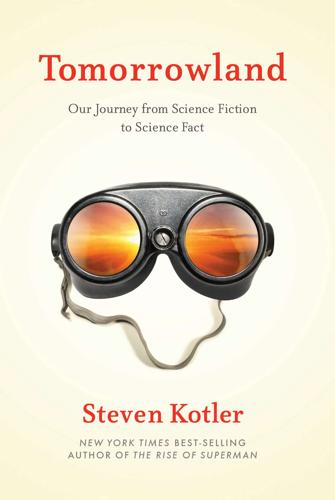
Tomorrowland: Our Journey From Science Fiction to Science Fact
by
Steven Kotler
Published 11 May 2015
ISBN-13: 9781477827949 ISBN-10: 1477827943 Cover design by Dave Stanton / Faceout Studio Author photograph by Ryan Heffernan For my mother and father Contents Start Reading The Future Is Here: AN INTRODUCTION PART ONE: THE FUTURE IN HERE Bionic Man: THE WORLD’S FIRST BIONIC MAN 1 2 3 4 5 6 7 8 The Genius Who Sticks Around Forever: THE SCIENCE OF MIND UPLOADING 1 2 3 4 Extreme States: THE BIOLOGY OF SPIRITUALITY 1 2 3 4 5 Evolution’s Next Stage: THE FUTURE OF EVOLUTION 1 2 3 4 5 Vision Quest: THE WORLD’S FIRST ARTIFICIAL VISION IMPLANT 1 2 3 4 5 6 7 8 PART TWO: THE FUTURE OUT THERE Reengineering the Everglades: THE WORLD’S FIRST TERRAFORMING PROJECT 1 2 3 4 5 6 Buckaroo Banzai: THE ARRIVAL OF FLYING CARS 1 2 3 4 Meltdown or Mother Lode: THE POSSIBILITIES OF NUCLEAR ENERGY 1 2 3 4 5 6 Space Diving: THE FUTURE OF SPORT 1 Building a Better Mosquito: THE WORLD’S FIRST GENETICALLY ENGINEERED CREATURE 1 2 3 4 The Great Galactic Gold Rush: THE BIRTH OF THE ASTEROID MINING INDUSTRY 1 2 3 PART THREE: THE FUTURE UNCERTAIN The Psychedelic Renaissance: THE RADICAL WORLD OF PSYCHEDELIC MEDICINE 1 2 3 4 5 6 7 8 9 10 11 Sympathy for the Devil: THE TROUBLED SCIENCE OF LIFE EXTENSION 1 2 3 4 5 6 The Final Frontier: THE POLITICS OF STEM CELLS 1 2 3 4 5 6 Hacking the President’s DNA: THE CONSEQUENCES OF PLAYING GOD 1 2 3 4 5 6 7 8 9 The God of Sperm: THE CONTROVERSIAL FUTURE OF BIRTH 1 2 3 4 5 6 Acknowledgments About the Author Index Sure this is magic, but not necessarily fantasy.
…
In less time than it took to drink a cup of coffee, a paradigm had shattered — science fiction had become science fact. On the way home, I started to wonder about other paradigms. After all, if private spaceships were possible, what about all the other sci-fi mainstays? What about bionics? Robotics? Flying cars? Artificial life? Life extension? Asteroid mining? What about those more ephemeral topics: the future of human evolution, the possibilities of downloadable consciousness? I made a long list — and that list defined large parts of the next two decades of my career. Tomorrowland is the result of that journey. The pieces in this book come from an assortment of major publications — the New York Times, Wired, Atlantic Monthly, to name a few — and all were penned between 2000 and 2014.
…
Here we’ll cover everything from on-world paradigm shifts, like the birth of the world’s first genetically engineered insect, to off-world paradigm shifts, like the birth of the asteroid mining industry. Finally, in The Future Uncertain, we’ll examine the gray areas, those explosive collisions between science and culture — for example, the use of steroids for life extension or the use of synthetic biology for the creation of bioweapons — where lines are being crossed and controversy reigns, and no one is certain what tomorrow brings. This last bit is no small thing. All of the technologies described in this book are disruptive technologies, though not as we traditionally define the word.

The Dark Net
by
Jamie Bartlett
Published 20 Aug 2014
Today there are around 6,000 members from more than 100 countries – an eclectic mix of self-confessed technology geeks, scientists, libertarians, academics and activists like Zoltan (who describes himself as a writer, activist and campaigner all-in-one). Together they work on a dazzling array of cutting-edge technology. Everything from life extension, anti-ageing, robotics, artificial intelligence (Marvin Minsky, considered one of the inventors of artificial intelligence, is a prominent transhumanist), cybernetics, space colonisation, virtual reality and cryonics. But most transhumanist technology focuses on life extension, and technological upgrades to the brain and body. It’s the possibility of a tech-powered ‘great leap forward’ that excites transhumanists like Zoltan, who believes the possible benefits of near- and medium-term technology are too important to ignore.
…
Zoltan tells me he is planning a number of publicity stunts in the next couple of years to bring the movement to a wider audience. This includes marching with a group of robots and a large coffin to Union Square in San Francisco to protest against what he sees as a lack of government investment in life-extension science. Many transhumanists are ‘biohackers’ – who, like Anders, experiment with introducing new technology into their own body directly. In 2013, transhumanist Richard Lee became the first person to have implanted a headphone in his ear. In 2012, in Essen, Germany, Tim Cannon, a tranhumanist biohacker, implanted a small computer and wireless battery inside his arm.
…
Whether it was anarchist Bitcoin programmers, trolls, extremists, pornographers or enthusiastic self-harmers, all were more welcoming and pleasant, more interesting and multifaceted, than I’d imagined. Ultimately, the dark net is nothing more than a mirror of society. Distorted, magnified and mutated by the strange and unnatural conditions of life online – but still recognisably us. * * * fn1 Anders will be frozen at the Alcor Life Extension Foundation in Arizona, which charges a total of $200,000 ($215,000 for UK residents) for Whole Body Cryopreservation. fn2 I cannot say that Zerzan was unwilling to engage with the transhumanists. When he learned that I’d been communicating with Zoltan, he sent him the following, unsolicited message: I understand that you are in contact with Jamie Bartlett regarding his book project, dealing with the internet and technology more generally.

More Everything Forever: AI Overlords, Space Empires, and Silicon Valley's Crusade to Control the Fate of Humanity
by
Adam Becker
Published 14 Jun 2025
But the linkage of space with immortality predates the tech billionaires and the modern transhumanist movement. In the 1970s, Timothy Leary was asking people if they “would like to live in space and live forever.” Inspired in part by O’Neill, he promoted “Space Migration, Intelligence Increase, and Life Extension,” anticipating the Extropians by over a decade.2 The L5 Society’s newsletters frequently featured ads related to life extension and cryonics.3 Even cryonics itself was originally tied to space: Robert Ettinger, the physics instructor who started the modern cryonics movement with his 1964 book The Prospect of Immortality, was inspired by “The Jameson Satellite,” a short story by Neil R.
…
.… I enjoy being human but I am not content.”41 More (born Max O’Connor) was one of the founders of the “Extropian” movement, named “as a metaphorical opposite” of entropy, the physical measure of disorder and decay, which the Extropians declared “the supreme enemy of human hope.”42 More, along with Tom Morrow (born Tom Bell) started Extropy magazine (originally subtitled Vaccine for Future Shock) in 1988. The first issue declared that the magazine would cover subjects like “artificial intelligence, cognitive science and neuroscience, intelligence-increase technologies, life extension, cryonics and biostasis, nanotechnology, spontaneous orders, space colonization, economics and politics (especially libertarian), science fiction and reviews of science fiction, intelligent use of psychochemicals, extropic psychology, mindfucking, extropic moral and amoral theories, extropic scientific developments, memetics, [and] aesthetics.”43 More and Morrow also founded the Extropy Institute in 1992, which led in short order to something ultimately more influential than their magazine: an email list for Extropians.
…
That meeting, “Engines of Creation 2000: Confronting Singularity,” billed itself as “the Burning Man of ideas on our technological future. It’s the TED of 2020, held today.” Attendees included Drexler, Peterson, Hanson, and “smart contracts” inventor Nick Szabo (who is today widely speculated to be the creator of Bitcoin). Subjects to be discussed included “nanotechnology, life extension, patent abuse, nanoweapons, abundance, uploading, transparency, space expansion, [and] AI.”29 At that meeting, Yudkowsky talked with internet entrepreneurs Brian and Sabine Atkins. He had met them through the Extropian list, and by the time of the meeting, the three were already planning to create a new research nonprofit.
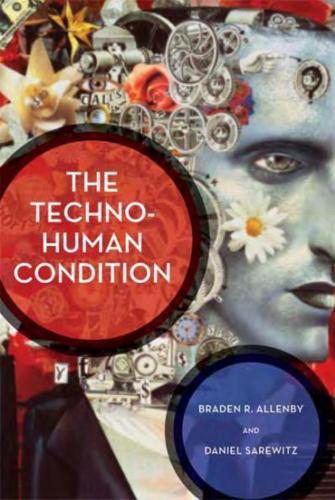
The Techno-Human Condition
by
Braden R. Allenby
and
Daniel R. Sarewitz
Published 15 Feb 2011
"Engineering and aging," IEEE Spectrum 41 (2004), no. 9: 10, 31-35. For much more on this controversial possibility, see de Grey 204 Notes to Chapters 4 and 5 2004. Aubrey D. N. J. de Grey is a well-known and controversial advocate of what might be called the "radical human life extension" school. Whether life extension is possible, and if so when it will be available, and how long lives will eventually be, remain highly contentious within the relevant research communities. Interestingly, other science and policy communities, such as those associated with sustainability, are generally not attending to these possibilities, despite their obviously challenging implications.
…
The net result is that it becomes necessary to design toward better military productivity, with productivity measured as mission accomplishment per soldier lost. This is one reason why the U.S. Defense Advanced Research Projects Agency is a major funder of research on how to keep soldiers in peak physical condition longer (which is dual-use research insofar as it also provides the scientific and technical basis for radical life-extension technologies). The substitution of military robots for people is an exact parallel to the substitution of capital for labor early in the Industrial Revolution. Robots, in other words, are another expression of the search for efficiency. So yes, LARs will accomplish the Level I function of saving soldiers' lives.

Schismatrix Plus
by
Bruce Sterling
Published 1 Jan 1995
She believed he must be very old, from one of the first generations of Shapers. Their genetic engineering had been limited and they could scarcely be told from original human stock. He must be almost a hundred years old. To be so old, yet look so young, meant that he had chosen sound techniques of life extension. He dated back to an era before Shaperism had reached its full expression. Bacteria still swarmed through his body. Kitsune never told him about the antibiotic pills and suppositories she took, or the painful antiseptic showers. She didn’t want him to know he was contaminating her. She wanted everything between them to be clean.
…
The history of the Fortuna Miners’ Democracy was a simple one. Fortuna was a major asteroid, over two hundred kilometers across. In the first flush of success, the original miners had declared their independence. As long as the ore held out, they did well. They could buy their way out of political trouble and could pay for life-extension treatments from other more advanced worlds. But when the ore was gone and Fortuna was a mined-out heap of rubble, they found they had crucially blundered. Their wealth had vanished, and they had failed to pursue technology with the cutthroat desperation of rival cartels. They could not survive on their outmoded expertise or sustain an information economy.
…
He was sixty-eight. The demortalization clinic was in the outskirts of Goldreich-Tremaine, part of the growing cluster of inflatable subbles. The tube-linked bubbles could mushroom or vanish overnight, a perfect habitat for Black Medicals and other dubious enclaves. Mechanists lurked here, hunting Shaper life-extension while evading Shaper law. Supply and demand had conjured up corruption, while Goldreich-Tremaine grew lax with success. The capital had overreached itself, and cracks in the economy were papered over with black money. Fear had driven Lindsay to this point: fear that things might fall apart and find him weak.

Thinking Machines: The Inside Story of Artificial Intelligence and Our Race to Build the Future
by
Luke Dormehl
Published 10 Aug 2016
Fedorov imagined evolution as a process centred around intelligence and our quest to achieve it. Man, he argued, was the culmination of natural history, and should use whatever reason and morality it has available to guide the hand of natural selection. This led to an interest in the use of scientific methods to bring about not just radical life extension and physical immortality, but also the idea that we might eventually restore to life everyone who has ever died. Where would all of these newly immortal beings live? In space and under the sea, of course, which Fedorov envisioned being colonised by the human race. Like Google’s democratised, data-driven approach to life as we know it, Fedorov stated: ‘Everyone must be learning and everything be the subject of knowledge and action.’
…
However, if scientists remove the optic glands of females brooding their eggs, they discovered that the octopus abandons its eggs, resumes feeding and growing, and survives for roughly twice the length of an unmodified octopus. Already we carry out not dissimilar operations on humans for the purposes of life extension, whether it be removing dangerous tumours or giving people potentially life-saving transplants of vital organs. As one might expect from a person who had spent their career investigating intelligence, Minsky was of the opinion that minds were more complicated. He wrote: As a species we seem to have reached a plateau in our intellectual development.
…
Not all such projects are taking place in the public sector, however. One of the more unusual and ambitious brain-science projects of the past few decades was announced by Russian billionaire Dmitry Itskov in 2011. Given the name the 2045 Initiative, Itskov’s project is a nonprofit dedicated to the goal of life extension. In its own words, the 2045 Initiative aims to ‘create technologies enabling the transfer of an individual’s personality to a more advanced non-biological carrier, and extending life, including to the point of immortality’. Like the BRAIN initiative, Itskov’s project breaks down into multiple stages.

This Chair Rocks: A Manifiesto Against Ageism
by
Ashton Applewhite
Published 10 Feb 2016
Much as we fear illness, healthy aging and chronic disease can and do coexist in a multitude of olders. There’s no clear divide between between mobility and immobility, or independence and helplessness. Binaries serve us badly. So, as ever, does age denial. A panacea that would somehow stop our biological clocks, the holy grail of life-extension science and “anti-aging” medicine, is even less likely than a cure for cancer. The goal is to stay healthy, not to “stay young.” Longevity is a bonus. One manifestation of age denial is that it keeps many people from making lifestyle choices that pay off in the long run. As composer and musician Eubie Blake famously put it, “If I’d known I was going to live this long, I’d have taken better care of myself.”
…
Every week seems to herald an “anti-aging” breakthrough on the horizon: the possibility of using stem cells to rejuvenate tissue, or mobilizing nanobots to patrol the body and repair cell damage, or lengthening telomeres, to name a few. (Telomeres are stretches of DNA at the end of chromosomes that shorten naturally with age each time a cell divides.) Leading the pack are the proponents of radical life extension who think that advances in biotechnology will soon be able to slow down or turn back the biological clock, and that my generation can anticipate living far longer than our parents. Many proponents believe that what biomedical researcher Aubrey de Grey calls “longevity escape velocity” is within reach: the point at which, for every year that passes, life expectancy will increase by one year, making lifespans infinite.
…
New York Times, July 8, 2008. 34 Gretchen Reynolds, “Exercise to Age Well, Whatever Your Age,” New York Times, January 29, 2014. 35 “Dr. Mark Lachs—‘Treat Me Not My Age,’” Annuity News Now, uploaded to YouTube November 15, 2010. 36 “Living to 120 and Beyond: Americans’ Views on Aging, Medical Advances and Radical Life Extension,” Pew Research Religion & Public Life Project, August 6, 2013. 37 “Aging Through The Eyes of A Doctor,” The Today Show, Feb 17, 2011. 38 Cruikshank, Learning to Be Old, 37. 39 Ibid, p. 42. 40 Paula Span, “A Workout for the Mind,” New York Times, October 20, 2014. 41 Karin A. Ouchida and Mark S.

What We Owe the Future: A Million-Year View
by
William MacAskill
Published 31 Aug 2022
Here he was not unique; for thousands of years in China, immortality on earth was a popular aim.67 One history of Chinese chemistry describes dozens of substances and potions for eternal life tested by emperors and their alchemists throughout much of this period.68 In the last century, many authoritarian or totalitarian rulers were interested in or actively pursued life extension.69 Stalin expressed an interest in the topic, and according to one Soviet defector, this prompted scientists to make life extension “a central subject of Soviet medical research.”70 North Korea’s Kim Il-sung set up a longevity centre devoted to keeping him alive and received blood transfusions from citizens in their twenties in an attempt to live longer.71 Nursultan Nazarbayev, the authoritarian ruler of Kazakhstan between 1990 and 2019, tasked Kazakh scientists with “the prolongation of life.”
…
Amazon CEO Jeff Bezos and PayPal cofounder Peter Thiel have both invested in San Francisco–based Unity Biotechnology, a company whose mission is to prevent aging.73 In 2013, Google launched the company Calico, which also aims to combat aging, with more than a billion dollars in funding.74 Ambrosia, a California start-up, charges its elderly customers $8,000 for injections of two and a half litres of blood plasma harvested from teenagers.75 Even if aging cannot be cured in our lifetime, some people plan to punt the problem to the future by paying for cryonics: having their body or severed head frozen in the hope that resurrection will be possible with future technology. Whole-body cryopreservation with the Alcor Life Extension Foundation costs $220,000; it costs less than half that if one merely preserves one’s head.76 Some entrepreneurs hope to abandon meat-based bodies altogether and live on in digital form through computer emulation of their brains. Nectome, a Y Combinator–funded start-up that preserves brains with the hope that future generations will scan and upload them, counts Silicon Valley entrepreneur Sam Altman as a customer.
…
See also GDP income inequality, happiness inequality and, 204–205 inconsistencies in moral worldviews, 67–68 India fertility rate and economic growth, 94 quality of life survey, 199–201 the risks of global conflict, 115 individual actions, the power of, 245–246 industrial development aftermath of Roman decline, 124 carbon concentrations, 24 economic growth rates, 82 effect on wellbeing, 206–207 as efflorescence, 144 fossil fuel consumption and depletion, 138–141 history of humanity, 12–13 postcatastrophe reliance on preindustrial technology, 131–134 sugar and cotton cultivation, 64 upward trend in wellbeing, 207–208 Industrial Revolution economic doubling, 82 fossil fuel depletion, 138–139 global economic growth, 26, 144 impact of the contingency of moral norms, 70 population-technology feedback loop, 153 postcatastrophe recovery, 133 technological development in Europe, 124, 126 upward trend in wellbeing following, 207–208 inequality Easterlin paradox, 201–202 global inequalities, 215 happiness and income inequalities, 204–205 in the total view of wellbeing, 183 inequality, happiness, 204–205 infrastructure, postcatastrophe state of, 130–131, 134 inheritance: cultural evolution, 58–59 innovation automating with AGI, 81, 144 in clean energy, 25 declining rate of, 150–151, 153, 155 Islamic Golden Age, 143 stagnation, 158, 161–162 taking action for the future, 227–228 intelligence, human-level, 57–58 Intergovernmental Panel on Climate Change (IPCC), 24, 39–40, 42 International Energy Agency, 134–135 intuition of neutrality, 171–173, 176–177 invertebrates, 191, 213 investing in the future, 24 Iroquois Confederacy, 11 Ishii, Shiro, 112 Islamic Golden Age, 143, 158 ITN (importance, tractability, neglectedness) framework, 256–257 Jamaican Christmas Rebellion (1831–1832), 69 Japan bioweapons programme, 111–112 the bombing of Hiroshima and Nagasaki, 126–128 Jerome (saint), 123 Jews and Judaism: the persistence of values, 78 Jones, Chad, 150 Kaufman, Chaim, 64 Kennedy, John F., 37, 128 Khmer Rouge, 60 Kim Il-sung: life extension efforts, 84–85 Korea, division of, 40–41 Kremer, Michael, 152 labour force countering the slowing rate of technological progress, 155–156 economic stagnation, 150 increasing scientific research efforts, 152 women’s participation, 53, 61–62 See also slavery Large Hadron Collider, 151 Lay, Benjamin, 49–51, 72 Learn How to Increase Your Chances of Winning the Lottery (Lustig), 203 learning more, to positively influence the future, 226–227, 235–237 Legalism (China), 76–78 Levy, David, 106 Lewis, Joshua, 199 LGBTQ+ individuals moral views on the status of, 53 transmission of cultural traits, 95 life, evolution of, 117–119 life expectancy among hunter-gatherer societies, 207 changes over time, 205(fig.)
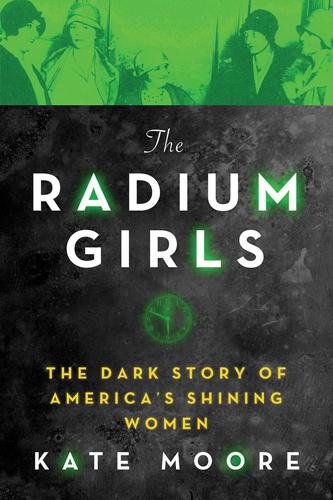
The Radium Girls
by
Moore, Kate
Published 17 Apr 2017
Though Viedt had managed to hire an extra six girls, it wasn’t enough; the executives still had to address the “psychological and hysterical situation”9 that was now unfolding in the studio. So, while it waited for Drinker to begin his study, the firm organized its own examinations of the current team of dial-painters, conducted by the Life Extension Institute. The girls were tested confidentially—but the reports were shared with the firm. “The individuals concerned,” Viedt wrote Roeder, “do not know that we have these copies…information given in them is very confidential and they might object to our having them.”10 Though the institute found some girls had infected teeth, it concluded that their ailments “did not reflect any specific occupational influence.”11 Roeder wrote contentedly to Viedt that the results were “just as I anticipated.”12 Viedt, however, who was more involved in operations at the studio, was not so reassured.
…
“The individuals concerned,” Viedt wrote Roeder, “do not know that we have these copies…information given in them is very confidential and they might object to our having them.”10 Though the institute found some girls had infected teeth, it concluded that their ailments “did not reflect any specific occupational influence.”11 Roeder wrote contentedly to Viedt that the results were “just as I anticipated.”12 Viedt, however, who was more involved in operations at the studio, was not so reassured. “I do not feel quite as optimistic about this matter as you do,” he wrote to his boss. “While the Life Extension Institute have made a report, I do not believe that this will satisfy our various operators and that we must wait for Dr. Drinker’s final report in order to really convince them that there is no injurious element.”13 Roeder then added his own two cents. “We should create an atmosphere in the plant of competence,” he wrote decidedly to Viedt.
…
It was radium that had killed Irene, and Helen, and so many more… It was radium, the Drinkers said, that was the problem. The doctors enclosed a table of their test results of the workers and, crucially, analyzed them. “No blood [from the USRC employees],” they wrote, “was entirely normal. These same findings were noted in previous reports by the Life Extension Institute, but the Institute did not appear to have been aware of their meaning.” While some employees registered marked changes in their blood, other results were noted to be “practically normal.”21 But not one worker had wholly normal blood; not even a woman who had been with the firm for only two weeks.

The Fast Diet: Revised and Updated: Lose Weight, Stay Healthy, Live Longer
by
Mimi Spencer
Published 18 Dec 2014
He lost weight on each one of them, and then within a few months put it all back on, and more. Then, at the beginning of 2012, I was approached by Aidan Laverty, editor of the BBC science series Horizon, who asked if I would like to put myself forward as a guinea pig to explore the science behind life extension. I wasn’t sure what we would find, but, along with producer Kate Dart and researcher Roshan Samarasinghe, we quickly focused on calorie restriction and fasting as a fruitful area to explore. Calorie restriction is pretty brutal; it involves eating an awful lot less than a normal person would expect to eat, and doing so every day of your – hopefully – long life.
…
Index 4:3 pattern 1, 2 6:1 maintenance 1, 2, 3, 4, 5 adaptation 1 adherence 1, 2 agave 1 age to start fasting 1, 2 ageing Byetta 1 cognitive ability 1, 2, 3 research 1, 2, 3, 4, 5, 6 alcohol 1, 2 allergies 1 almonds 1, 2 alternate day fasting (ADF) as booster method 1 problems 1, 2 research 1, 2, 3, 4, 5 Alzheimer’s disease 1, 2 see also carbo hydrates; dementia amputation 1 amyloid 1 anabolic response 1 animal research Alzheimer’s disease 1 brain derived neurotrophic factor (BDNF) 1 cancer 1 eating patterns 1 fasting 1, 2, 3 fertility 1 longevity 1 animals, wild 1 antidepressants, natural 1 antioxidants 1, 2, 3, 4 appetite excess 1, 2 regulation 1, 2, 3, 4 apples 1, 2, 3, 4 apps 1 aromas 1 arthritis 1 Asian coleslaw 1 asparagus, stir fry with prawns 1 asthma 1, 2, 3, 4 athletes 1, 2 Atkins diet 1, 2 attention see mindfulness attitude changes 1, 2, 3 aubergines calorie content 1 Goan curry 1 warm salad with chickpeas and Halloumi 1 autoimmune diseases 1 autophagy 1, 2 awareness 1, 2, 3 Babraj, Dr John 1 bacon and butterbean soup 1 bananas 1, 2 BBC 1 BDNF see brain derived neurotrophic factor beauty industry 1 bedtime 1 beef calorie content 1 Madras beef with a tomato and red onion salad 1 skinny spag bol 1 steak and Asian coleslaw 1 Thai steak salad 1 beer 1 benefits, generally 1, 2 see also health improvements berries 1, 2 betacarotene 1 bingeing 1, 2, 3 bitterness 1 blindness 1 blood pressure see also hypertension alternate day fasting 1 four day fast 1 monitoring 1 personal experiences 1 blood sugar 1, 2, 3, 4, 5 see also insulin blood tests 1, 2 blueberries 1 BMI see body mass index body-consciousness 1 body fat percentage 1, 2 body image 1 body mass index (BMI) calculation 1, 2 initial level 1 Mosley, Dr Michael 1 reduction 1 boiling vegetables 1 bolognese, skinny 1 boredom 1 bouillon 1 brain ageing 1, 2, 3 energy sources 1 research 1, 2, 3, 4 brain derived neurotrophic factor (BDNF) 1, 2, 3, 4 brassicas 1 bread 1, 2 breakfast cereals 1, 2, 3 eggs 1 Fast Days 1, 2 glycaemic index (GI) 1 importance 1 low GI 1 protein-rich 1 breaking the fast 1 breast cancer 1, 2, 3 breast feeding 1 broccoli 1, 2, 3 bulgar 1, 2 busyness 1, 2, 3 butter 1, 2, 3 butterbean and chorizo hotpot 1 butternut squash, baked with courgette and tomato 1 Byetta 1 cabbage 1 Caesar salad 1 caffeine 1, 2 Calabrese, Edward 1 calcium 1 calorie content chart 1 drinks 1 labels 1, 2 portion sizes 1, 2, 3 calorie intake Fast Days 1, 2, 3 worldwide trend 1 calorie restriction (CR) 1, 2 Cambridge Diet 1 cancer development 1 fasting 1, 2, 3, 4 growth factors 1 human research 1 insulin-like growth factor 1 (IGF-1) 1, 2, 3, 4 insulin resistance 1 Laron syndrome 1 risk reduction 1, 2 stem cells 1 tumours 1 vitamin supplements 1 car analogy 1, 2 carbohydrates blood sugar 1, 2, 3 Fast Days 1 glycaemic index (GI) 1 reduction 1 cardiovascular disease see heart disease carotenoids 1 carrots 1, 2, 3, 4 cashews 1 catecholamines 1 cell mutation 1 cellular repair 1, 2 cereals 1, 2, 3 cerebrospinal fluid 1 challenges 1, 2 chat rooms 1, 2 cheating 1 cheese 1, 2, 3 mushrooms with mozzarella, Pecorino and spinach 1 warm aubergine salad with chickpeas and Halloumi 1 chemotherapy 1, 2, 3, 4 chicken 1, 2 Dijon chicken dippers with peas 1 spiced chicken with warm lentils and roasted garlic 1 stir fry 1 super-fast Thai green curry 1 chickpeas calorie content 1 curry 1 warm aubergine salad with chickpeas and Halloumi 1 children 1, 2, 3 chilli flakes 1 chilli, vegetarian 1 chocolate 1 cholesterol alternate day fasting 1, 2 blood levels 1, 2, 3 eggs 1 grazing 1 personal experiences 1 reduction 1 tests 1 chorizo, hotpot with butterbeans 1 CHRONies (Calorie Restrictors on Optimal Nutrition) 1 citrus fruit 1, 2, 3 coconut 1 coffee 1, 2 cognitive ability 1, 2, 3, 4 Cohen, Leonard 1 coldness 1 coleslaw, Asian 1 comfort foods 1, 2, 3 compliance alternate day fasting 1 conventional diets 1 first weeks 1 practicality 1 snacks 1 compulsive eating 1 concentration 1, 2 confectionary 1, 2 consecutive day fasting 1 see also four day fast constipation 1 consumption levels, non-Fast Days 1 cooking tips 1 cordials 1 courgettes, baked butternut with courgette and tomato 1 couscous 1, 2, 3 curry chickpea 1 Goan aubergine 1 Madras beef with a tomato and red onion salad 1 red lentil tikka masala 1 super-fast Thai green chicken 1 dairy products 1, 2, 3, 4 Dart, Kate 1 dates 1, 2 dehydration 1, 2, 3 delayed gratification 1 dementia see also Alzheimer’s disease brain derived neurotrophic factor (BDNF) 1 diabetes 1 drug therapies 1 fasting 1, 2, 3 risk factors 1 walking 1, 2 denial 1 see also willpower dermatitis 1 dhal 1 diabetes Byetta 1 complications 1 doctor consultation 1 family history 1 Laron syndrome 1 meal pattern research 1 risk factors 1, 2, 3 risk reduction 1, 2 Type 1 1 worldwide trend 1 diaries 1, 2 diet drinks 1 diets current standard advice 1 fads 1, 2 failure 1, 2, 3, 4, 5 high-fat 1, 2, 3 high-fructose 1 high-protein 1 low-carbohydrate 1 low-fat 1 Mediterranean 1 digestion 1, 2, 3 Dijon chicken dippers with peas 1 diseases, risk reduction 1, 2 disinhibition effect 1 dissatisfaction 1 distraction 1, 2, 3, 4, 5 doctor consultation diabetes 1 obesity 1 statins 1 warfarin 1 doctors’ viewpoints 1 dressings 1 The Drinking Man’s Diet 1 drinks 1, 2, 3, 4, 5 drug therapies 1 Dublin study, fast diet 1 DXA scan (dual energy X-ray absorptiometry) 1, 2 Eat Fast, Live Longer 1, 2 eating disorders 1 eating patterns 4:3 1, 2 breakfast 1 evolutionary 1, 2, 3 Fast Days 1, 2, 3, 4, 5, 6 habit 1, 2, 3 non-Fast Days 1 normal expectation 1 personal experiences 1, 2, 3 recent changes 1 research evidence 1, 2 Ecuador 1 eczema 1, 2 edamame 1 eggs 1, 2, 3 huevos rancheros 1 mushroom and spinach frittata 1 scrambled 1, 2 electric shock therapy 1 emotion confusion 1 endurance training 1 energy levels 1, 2, 3, 4, 5, 6 English breakfast, Fast Day 1 evolution fasting 1, 2, 3 hippocampus 1 memory 1 natural eating pattern 1, 2 repair genes 1 excess appetite 1, 2 exercise see also high intensity training benefits 1 Fast Days 1, 2, 3, 4 pedometer 1 personal experiences 1 physical response 1 with prolonged fasting 1 research evidence 1, 2, 3, 4, 5 strength training 1 time required 1 external cues 1 Facebook 1 faintness 1, 2 faith 1 family support 1, 2 famine 1 fashion industry 1 Fast Days busyness 1, 2, 3 calorie level 1, 2, 3 hours 1 meal pattern 1, 2, 3, 4, 5 weekly patterns 1, 2 Fast Diet potential 1 Fast Exercise 1 see also high intensity training fasting alternate day 1, 2, 3 animal research 1, 2, 3 definition 1 evolution 1, 2 four-day 1, 2 health benefits 1 hippocampus 1 IGF-1 1 prolonged 1, 2 research evidence 1, 2, 3, 4, 5, 6 two-day 1, 2 fasting glucose levels 1, 2, 3 fasting window 1, 2 fat burning exercise 1 fasting 1, 2 gender differences 1 iFast 1 meal pattern 1 naringenin 1 noradrenaline 1 process 1, 2 fat intake 1 fat levels on Fast Days 1 fat-soluble vitamins 1 fat storing gender differences 1 insulin 1, 2 triglycerides 1 fat, visceral 1, 2 fatigue 1 fats, calorie content 1 fatty acids 1 fear 1 fennel 1 fertility 1 ferulic acid 1 fibre 1, 2, 3, 4 first day 1, 2, 3 fish 1 calorie content 1 mackerel 1 masala salmon with spiced spinach 1 pesto salmon 1 smoked haddock 1 tuna 1, 2 flavour boosts 1, 2 flavour improvement 1 flexibility 1, 2, 3, 4 focus 1, 2 food fixation 1 food industry marketing 1, 2 food preference changes 1, 2, 3, 4 food preparation 1 food weighing 1 four day fast 1, 2 free radicals 1 friend not foe 1 friends 1, 2, 3 frittata, mushroom and spinach 1 fruit antioxidants 1 benefits 1 calorie content 1 glycaemic index (GI) 1 research evidence 1, 2 skins 1 fruit bars 1 fruit juice 1 fullness 1, 2 game meat 1 garlic 1, 2 gastric reflux 1 gender differences 1 genes 1, 2, 3 Genesis Breast Cancer Prevention Centre, Wythenshawe 1, 2 Germans 1 glucose levels carbohydrates 1, 2 fasting test 1, 2, 3 four day fast 1, 2 grazing 1 intermittent fasting (IF) 1 monitoring 1 normal levels 1 glucose metabolism 1 gluttony 1 glycaemic index (GI) 1, 2 glycaemic load (GL) 1 glycogen 1, 2 goals 1, 2 Goan aubergine curry 1 gout 1 grains 1 grapefruit 1, 2 grapes 1, 2 grazing 1, 2, 3, 4 see also snacks green beans 1 green tea 1 green vegetables 1, 2, 3, 4, 5 growth factors 1 see also insulin-like growth factor 1 growth hormone receptor 1 guilt 1, 2 habit 1, 2, 3, 4 habituation 1 haddock, smoked 1 hair 1 Harvie, Dr Michelle 1, 2, 3, 4 HDL (high density lipoprotein) 1, 2 headaches 1, 2 health improvements fasting 1, 2, 3, 4, 5, 6 maintenance model 1 Mosley, Dr Michael 1 motivation 1 personal experiences 1, 2, 3, 4, 5, 6, 7 heart disease risk factors 1, 2, 3, 4 risk reduction 1, 2, 3 hedonic eating 1 herbal teas 1 herbs 1, 2, 3 high-fat diet 1, 2, 3 high-fructose diet 1 high intensity training (HIT) 1, 2, 3 hippocampus 1, 2 history 1 HIT see high intensity training Horizon, BBC 1, 2, 3 hormesis 1, 2 hormones 1, 2, 3 Horne, Dr Benjamin 1 hot chocolate 1 hotpot, butterbean and chorizo 1 Howell, Prof Tony 1 huevos rancheros 1 human research alternate day fasting 1, 2 cancer 1 intermittent fasting (IF) 1 Laron syndrome 1 two day fast 1 hummus 1, 2 hunger pangs adaptation 1, 2 decreasing levels 1 distraction 1, 2, 3, 4 emotion confusion 1 fear 1 learned reactions 1 mood 1 passing 1, 2 personal experiences 1, 2 waiting 1 hydration 1, 2, 3 hyperphagia 1 hypertension 1 see also blood pressure iFast 1, 2 IGF-1 see insulin-like growth factor 1 immune system 1 impotence 1 impulsive snacking 1 inflammation gout 1 high protein diets 1 research evidence 1, 2, 3 skin conditions 1, 2 visceral fat 1 initial health measuring 1, 2 Mosley, Dr Michael 1, 2, 3, 4 Spencer, Mimi 1 insalata caprese 1 instinct 1, 2, 3 insulin 1, 2, 3 see also blood sugar insulin-like growth factor 1 (IGF-1) four day fast 1, 2 function in the body 1 healthy range 1 high-protein diet 1 protein 1 reduction 1, 2 tests 1 insulin resistance 1, 2, 3, 4 insulin sensitivity 1, 2, 3, 4 Intermountain Heart Institute, Utah 1 iron 1, 2 Italian diet 1 juice 1 junk food 1, 2 Kahleova, Dr. 1 kale 1 ketchup 1 ketone bodies 1 Laron mice 1 Laron syndrome 1 lattes 1, 2, 3, 4 Laverty, Aidan 1 LDL (low density lipoprotein) 1, 2, 3, 4 learned reactions 1 legumes 1, 2, 3 lemons 1 lentils 1 red lentil tikka masala 1 spiced chicken with warm lentils and roasted garlic 1 spiced dhal 1 life extension see longevity lifestyle choices 1 liminoids 1 lipolysis 1, 2 liver 1, 2, 3, 4, 5 long term plan 1 longevity animal models 1 benefits 1 diabetes effect 1 research evidence 1, 2 start of fasting 1 Longevity Institute, University of Southern California 1 Longo, Professor Valter 1, 2, 3, 4, 5, 6, 7 low-fat diet 1 low-fat foods 1 lunar fasting 1 lung function 1 lycopene 1, 2, 3 mackerel 1, 2 maintenance model 1, 2, 3, 4, 5 mandolin 1 marketing pressure 1, 2 Mars bars 1 masala salmon with spiced spinach 1 Mattson, Professor Mark 1, 2, 3, 4, 5, 6, 7 meal patterns see eating patterns meal-replacement shakes 1 meals daily number 1 focus 1, 2 frequency 1, 2 intermittent fasting 1 size 1 meat 1, 2, 3 media interest 1 medical conditions 1, 2, 3 medication interference 1 Mediterranean diet 1 memory hippocampus 1, 2 junk food 1 online tests 1 men body fat percentage 1 exercise 1 fasting 1 fasting day calories 1 menstrual cycle 1 mental attitude see mood metabolic changes food choices 1 HIT exercise 1 mood 1 research evidence 1, 2, 3, 4 metabolic syndrome 1 mice 1, 2 milk calorie content 1, 2 Fast Days 1 fat content 1 glycaemic index (GI) 1 protein levels 1 mindfulness 1, 2 miso soup 1, 2 mitochondria 1 Mohammed 1 mood brain derived neurotrophic factor (BDNF) 1 difficulties 1, 2 HIT exercise 1 hunger pangs 1 improvement 1, 2, 3 Mosley, Dr Michael background 1, 2 Fast Days 1, 2 father 1, 2 health improvements 1, 2, 3 HIT exercise 1 initial health 1, 2, 3, 4 motivation 1, 2, 3, 4 MRI scans 1, 2, 3 multivitamins 1, 2 muscles exercise 1, 2 fasting 1, 2 fat burning 1 glycogen storage 1 HIT exercise 1 protein synthesis 1 strength training 1 mushrooms 1, 2 frittata with spinach 1 with mozzarella, Pecorino and spinach 1 mussels, Thai mussels 1 naringenin 1 National Institute on Aging, USA 1, 2, 3, 4 neck size 1 nerve cells 1, 2 New Scientist 1 newspapers 1 NHS website 1 Nikolai of Zicha, Saint 1 no-carb Caesar salad 1 nobiletin 1 non-Fast Days 1, 2, 3, 4 non-stick pans 1 noodles 1 noradrenaline 1 nutritional requirements 1 nuts benefits 1 calorie content 1 Fast Days 1, 2 glycaemic index (GI) 1, 2 oats 1, 2, 3, 4 obesity breast cancer 1 fast diet benefits 1 grazing 1 worldwide trend 1 oils 1, 2 omega 3 fatty acids 1, 2 oranges 1, 2, 3 overeating 1, 2, 3 pancreas 1, 2 parental advice 1 pasta 1, 2 patience 1, 2 pears, spiced porridge 1 peas, Dijon chicken dippers with peas 1 pectin 1 pedometer 1 pesticides, natural 1 pho, Vietnamese prawn 1 phytochemicals 1, 2, 3, 4 pickles 1 Pilon, Brad 1 pineapple 1 pistachios 1 pizza, tortilla 1 PKA gene 1 planning 1, 2 poisons 1 polycystic ovary syndrome (PCOS) 1 polyphenols 1 popcorn 1 pork, Fast Day roast 1 porridge 1, 2 spiced pear 1 portion sizes 1, 2, 3, 4 positivity 1 potatoes 1, 2, 3 potential benefits 1, 2 see also health improvements Power, Dr Ray 1 praise 1, 2 prawns calorie content 1 stir-fry with asparagus 1 Vietnamese pho 1 pregnancy 1, 2, 3 preparation 1, 2 probiotics 1 processed foods 1 prostate cancer 1, 2 protective genes 1 protein calorie content 1 Fast Days 1, 2, 3, 4 function in the body 1, 2 ‘good’ 1 high-protein diets 1 insulin-like growth factor 1 1 recommended quantity 1, 2 ‘proximity principle’ 1 psoriasis 1, 2 psychology 1, 2 pulses 1, 2 quick no-cook meals 1 Quinn, Nora 1 quinoa 1, 2, 3 radiotherapy 1, 2 raisins 1, 2 Ramadan 1 rapamycin 1 raw food 1, 2 ready meals 1 realism 1 refined sugars 1, 2 religion 1, 2 repair genes 1, 2, 3, 4, 5 research evidence alternate day fasting 1, 2, 3, 4, 5, 6 Alzheimer’s disease 1 asthma 1 brain effects 1, 2, 3, 4 breakfast 1 calorie restriction (CR) 1 cancer 1, 2, 3 conventional diets 1, 2 diaries 1 diet drinks 1 Dublin study 1 exercise 1, 2, 3, 4, 5 fruit 1, 2 HIT exercise 1 immune system 1 inflammation 1, 2, 3 Laron syndrome 1 longevity 1, 2 meal patterns 1 metabolic changes 1, 2, 3, 4 mood 1 ‘proximity principle’ 1 soups 1 ‘starvation mode’ 1 two day fast 1 weight loss 1, 2 resentment 1 restrained eating 1, 2 reward 1 rheumatoid arthritis 1 rice 1, 2, 3 rice cakes 1 Russians 1 salad dressing 1 salads Fast Days 1, 2, 3 flavour boosts 1 insalata caprese 1 Madras beef with a tomato and red onion salad 1 no-carb Caesar 1 steak and Asian coleslaw 1 Thai 1 Thai steak 1 tuna, bean and garlic 1 warm aubergine with chickpeas and Halloumi 1 warm vegetable 1 Salk Institute for Biological Studies 1 salmon calorie content 1 masala salmon with spiced spinach 1 with pesto 1 Samarasinghe, Roshan 1 sandwiches 1 sashimi 1 satisfaction 1, 2, 3, 4 saucepans 1 scales 1 Scarsdale diet 1 scientific research see research evidence seafood prawn and asparagus stir fry 1 Thai mussels 1 Vietnamese prawn pho 1 seeds 1 self-awareness 1 ‘self eat’ 1 self praise 1, 2 shock 1 shopping list 1 Sikhism 1 single meal 1, 2 skin 1, 2, 3 skinny spag bol 1 sleep caffeine 1 Fast Days 1, 2, 3 four-day fast 1 personal experiences 1, 2 slim individuals 1 smells 1 smoothies 1, 2, 3 snacks see also grazing as eating pattern 1 Fast Days 1, 2, 3, 4 glycaemic index (GI) 1 habit 1, 2, 3 habitual 1 manufacturers 1 typical pattern 1 women 1 snoring 1, 2 social demands 1, 2, 3, 4 Somatomedin-C see insulin-like growth factor 1 soups appetite suppressant 1 bacon and butterbean 1 Fast Days 1, 2 miso 1 ready meals 1 research evidence 1 Vietnamese prawn pho 1 soy milk 1 Spencer, Mimi Fast Days 1 father 1 health improvements 1 initial BMI 1 previous diets 1 spiced dhal 1 spices 1, 2 spinach 1 masala salmon with spiced spinach 1 mushrooms with mozzarella, Pecorino and spinach 1 spiritual benefits 1 staples 1 start day 1, 2, 3 ‘starvation mode’ 1 statins 1 steak with Asian coleslaw 1 Thai salad 1 steaming 1, 2 stem cells 1, 2, 3 Stevia 1 stir-fry 1 stomach size 1 straight-to-the-plate ideas 1 strawberries 1, 2, 3, 4 strawberry smoothie 1 strength training 1 stress responses 1, 2 stroke 1, 2, 3, 4, 5 sugar 1, 2, 3, 4 super-foods 1 supplements 1, 2 support network 1, 2, 3 sustainability 1, 2 sweeteners 1 sweets 1, 2 tangerines 1, 2 targets 1, 2 teas 1 teeth 1 temptation 1, 2, 3, 4 Thai green chicken curry 1 Thai mussels 1 Thai salad 1 Thai steak salad 1 thirst 1, 2 thrifty hypothesis 1 time of fasts 1, 2 The Times 1 timetables 1 Timmons, Professor Jamie 1, 2 tiredness 1 TOFI (Thin on the Outside and Fat Inside) 1 tomatoes 1, 2, 3 baked butternut with courgette and tomato 1 butterbean and chorizo hotpot 1 huevos rancheros 1 Madras beef with a tomato and red onion salad 1 tortilla pizza 1 training research 1, 2 transit time, digestion 1 treats 1, 2 triggers, personal 1 triglycerides 1, 2, 3 tumour necrosis factor 1 tumours 1 tuna bean and garlic salad 1 seared 1 turkey 1 cumin-turkey burgers with corn on the cob 1 Twitter 1, 2 two day fast 1, 2 underweight individuals 1 urine 1 Varady, Dr Krista 1, 2, 3, 4 variety 1, 2, 3 vegetable bouillon 1 vegetables antioxidants 1 bitterness 1 calorie content 1 consumption levels 1 glycaemic index (GI) 1 leafy greens 1, 2, 3 ‘noodles’ 1 quantities 1 raw 1, 2 skins 1 starchy 1 steaming 1, 2 variety 1 warm salad 1 vegetarian chilli 1 venison 1 Vietnamese prawn pho 1 vinegar 1, 2 visceral fat 1, 2 vitamins 1, 2, 3, 4, 5, 6 waist measurement alternate day fasting 1 Fast Diet plus HIT 1, 2 healthy range 1 initial level 1, 2 method 1 personal experiences 1 reduction 1 research evidence 1 two-day fast 1 waist to height ratio 1 walking 1, 2, 3 warfarin 1 water 1, 2, 3 watercress 1 watermelon 1, 2 websites Fast Diet 1, 2, 3, 4 glycaemic index (GI) 1 NHS 1 weekends 1 weekly patterns 1, 2 weight loss eating patterns research 1 fast diet 1, 2, 3 fixation 1 personal experiences 1, 2 prolonged fasting 1 research evidence 1, 2, 3 stalling 1 targets 1 two-day fast 1 weekly variation 1 weight measurements 1, 2, 3, 4 weight training 1 wild animals 1 willpower 1, 2, 3, 4, 5 wine 1 withdrawal symptoms 1 women body fat percentage 1, 2 exercise 1 fasting 1 fasting day calories 1 yoghurt 1, 2, 3 YouTube 1 To find out more, and for the latest science updates and tools to help you through your Fast Days, go to fastdiet.co.uk.

An Optimist's Tour of the Future
by
Mark Stevenson
Published 4 Dec 2010
Sparrow cites the ‘gap’ some men feel by not being able to bear children (I’m not one of them) and wonders, if there is a demand for male pregnancy, should it be an option freely available if the technology can be made safe? I suddenly realise that for these assembled academics, the prospect of fundamental alterations of our biology (including radical life extension and human enhancement) is a given. They’re not talking about what happens if it becomes possible, they’re discussing what we might do when it’s an option. And this worries many transhumanist critics. Sparrow later tells me, ‘The implications of taking transhumanism seriously are so radical and implausible that I think we should be much less inclined to do so.’
…
I’m keen to understand where his optimism about transhumanist outcomes comes from, when so many people I mention the idea to visibly recoil. What drives him to bang the transhumanist drum in a world generally hostile to the idea? Throughout our talk, I pose this question in various guises, and Bostrom always answers in the same spirit – that, in his view, human life extension and enhancement will allow us not simply to live longer, but to enjoy living much more. When I ask, ‘What inspires and motivates you?’ he cites his reading, his colleagues, but also states ‘I guess through feeling and experiencing something in this life and thinking “why can’t it always be as good as that?”’
…
To overcome this, the transhumanist project is developing technologies that can enable us to become all that we are in potential, by changing not just the world around us but human biology as well.’ Well, it’s certainly more ambitious than getting a new kitchen. For him and many other transhumanists it’s not just ‘better than human,’ it’s also ‘have a better time than humans.’ And if you’re going to have a better time, why stop at seventy or eighty years? ‘Life extension is very central to me,’ he states. ‘First because for all the ordinary reasons we prefer to be alive rather than dead and, second, because if you think that the future might hold additional possibilities of radical enhancements of human capacity, the only way to get to experience that is to remain alive long enough, until those technologies have been developed.’
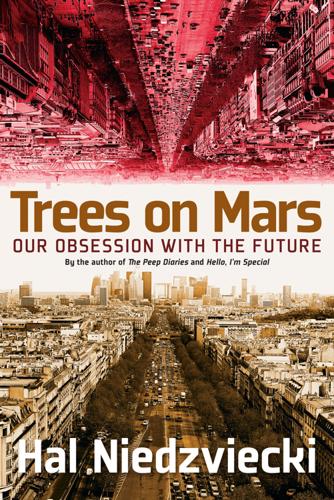
Trees on Mars: Our Obsession With the Future
by
Hal Niedzviecki
Published 15 Mar 2015
Late in 2013, the company announced that it was creating a new venture, Calico, “a new biotechnology company to fight the aging process and the diseases that accompany it.”30 This is part of the Kurzweil ideology too. Kurzweil takes around one hundred vitamins and supplements a day as he seeks to forestall death long enough to get to the singularity. Other technologists and Silicon Valley entities are also betting on life extension to get us there. Peter Thiel invested in and sat on the board of Halcyon Molecular, a company with the goal of eventually curing, or at least forestalling, aging. It closed down in 2012 after receiving roughly $20 million in investment funding. Thiel also gave $3.5 million to the Methuselah Foundation, an organization aiming to “reverse human aging” and he has supported a nonprofit called Humanity Plus, “dedicated to transhumanism—the transformation of the human condition through technology.”31 Like Kurzweil and so many others, he is spreading his ample supply of chips on both odd and even, black and red, figuring that at least one of those bets will pay off eventually.
…
“Bina and I were inspired to find a way for people to believe in God consistent with science and technology so people would have faith in the future.”35 The Time report, along with all the rest of the coverage, is respectfully incredulous: these people are nice, but nuts. But, in fact, Terasem is only seen as being on the lunatic fringe because they are putting a spiritual spin on what is an otherwise increasingly mainstream technological goal—virtual life extension via mind-machine meld. In 2013, Martine Rothblatt, who is also the founder of the biotechnology company United Therapeutics, was one of the speakers at Dmitry Itskov’s 2045 Global Future Congress in New York City. Clearly, her spiritual beliefs fit right into the tenor of the times. In fact, they neatly dovetail with the overall techno-utopian belief system revolving around “faith in the (technological) future.”
…
At the further fringes of prepperdom, there are militias that want to actively bring about the end-time, overthrow the government, end the corruption and forced enfeeblement of the citizenry. Again, I’m reminded of the Silicon Valley leaders, walling themselves off from the rest of society to focus on solving the problem of online media revenue management and mobile phone drink orders while pouring billions into dubious life extension schemes and envisioning the Bay Area seceding from California and the USA to become its own zone governed by the logic-infused fiat of data-empowered CEOs. At their core, both the technologists and the preppers have secular belief systems rooted in a sense of superiority over others. Both have a lifestyle of products and gatherings revolving around the endlessly arriving future.
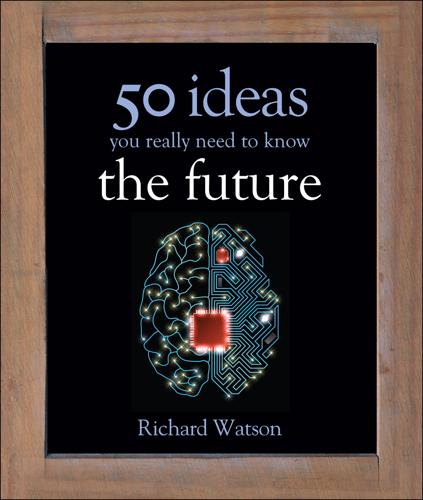
50 Future Ideas You Really Need to Know
by
Richard Watson
Published 5 Nov 2013
Others see it instead as increasingly inevitable. Physician, heal thyself. What if you are an aging surgeon and parts of your body are worn out? Options may include stem-cell therapy, the transplant of an artificial organ (a kidney grown in vitro), the printing of replacement teeth or bones using a fabricator, general life extension, some more hair, or perhaps some new fingers? This last idea may seem a little far-fetched, but if newts can repair themselves why not human beings? One way to do so might be to persuade cells to return to a younger state—in other words, trick the body into believing that it’s a young child once again.
…
the condensed idea We prefer our robots cuddly timeline 1950 I, Robot short stories by Isaac Asimov 1999 Sony’s Aibo dog 2000 Hasbro’s FurReal robotic pets 2004 WowWee’s Robosapien 2005 Cornell’s first self-replicating robot 2006 Amazing Allysen interactive doll 2016 Widespread use of agricultural robots 2030 98 percent of Korean homes contain a robot 35 Transhumanism Could emerging technologies enable individuals to radically extend life spans or even transcend the very idea of aging itself? As you might expect, transhumanism has annexed various philosophical ideas, especially in California, to become a kind of quasi religion or a quest for immortality. At one level transhumanism intersects with some fairly practical theories regarding life extension. For example, the adoption of a very low-calorie diet has been shown in some studies to significantly extend the life of mice and some say that the idea can be applied to people too. Developments in regenerative medicine (see Chapter 22) tap into some of these urges and impulses too, although beyond this, things can get a little weird.
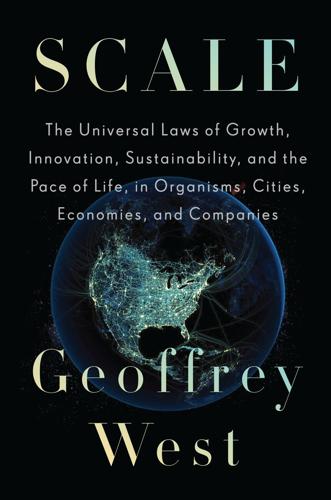
Scale: The Universal Laws of Growth, Innovation, Sustainability, and the Pace of Life in Organisms, Cities, Economies, and Companies
by
Geoffrey West
Published 15 May 2017
Among the more prominent ones are Larry Ellison, the founder of Oracle, whose foundation has spent hundreds of millions of dollars on aging research; Peter Thiel, a cofounder of PayPal, who has invested millions in biotech companies oriented toward solving the problem of aging; and Larry Page, a cofounder of Google, who started Calico (the California Life Company), whose focus is on aging research and life extension. And then there’s the health care mogul Joon Yun, who, though he didn’t make his fortune in classic high-tech, is based in Silicon Valley and is the sponsor of the $1 million Longevity Prize “dedicated to ending aging” through his foundation, the Palo Alto Institute. Although I remain quite skeptical that any of these will achieve any significant success, they are worthy efforts and a great example of American philanthropy at work, regardless of the motivation.
…
Just to get a sense of how exceptional this is, the next oldest verified person was the American Sarah Knauss, who lived more than three years fewer than Jeanne, dying at the age of 119 years and 97 days. The next super-champs of long life lived almost two years fewer than Sarah, while the oldest person still alive today is the Italian Emma Murano, who is “only” in her 118th year. The search for life extension can therefore be boiled down to two major categories: (1) The conservative challenge: how can the rest of us continue the upward march toward a longer life and approach the extraordinary achievements of Jeanne Calment and Sarah Knauss? (2) The radical challenge: is it possible to extend life span beyond the apparent maximum limit of approximately 125 years and live, for instance, to 225 years?
…
See aging and death Death and Life of Great American Cities, The (Jacobs), 253–54 de Beauvoir, Simone, 257–58 decay rate, 190–91 Deng Xiaoping, 389 determinate growth, 165–66 Detroit, 359 “developing” countries, 9, 185, 280 Dickens, Charles, 186, 223, 225, 226 diet caloric restriction, 205–7, 206 life extension and, 189 2,000 food calories a day, 13, 90, 234, 373 dimensionality of cities, 409 of companies, 409–10 dimensionless quantity, 76–77, 167 dinosaurs, 158–59 direct current (DC), 123–24 Dirksen, Everett, 233–34 discontinuities, 130, 139, 141 Discourses and Mathematical Demonstrations Relating to Two New Sciences (Galileo), 38–42 dissipation, 14, 41–42, 124–25, 199 DLD Conference, 340–41 DNA, 84, 99, 200, 309, 437 DNA damage theory of aging.
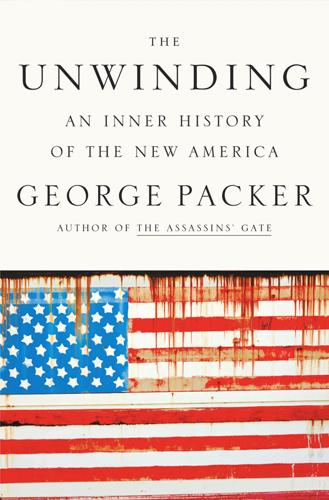
The Unwinding: An Inner History of the New America
by
George Packer
Published 4 Mar 2014
He wasn’t looking for industry experience but for people he knew, people who were incredibly smart, people who were like him, Stanford friends like Reid Hoffman, Stanford Review alums like David Sacks and Keith Rabois, and Confinity’s cramped, spartan offices above a bike shop soon filled with carelessly dressed, badly groomed men in their twenties (Thiel was one of the oldest at thirty-two), chess players, math whizzes, libertarians, without distracting obligations like wives and children or time-wasting hobbies like sports and TV (one applicant was turned down because he admitted to enjoying shooting hoops). Some employees lived on junk food at their desks, others were on life-extension calorie-restricted diets. The company took out an ad in The Stanford Daily: “Think kick-ass stock options in a cool start-up are worth dropping out of college? We are hiring right now!” It became the first company in the history of the world to offer cryogenics as part of its employee benefits package.
…
He refused to submit to what he called “the ideology of the inevitability of the death of every individual.” He saw it as a problem to be solved, and the sooner the better. With the current state of medical research, he expected to live to be 120—a sorry compromise, given the grand possibilities of life extension. But 150 was becoming thinkable, and immortality wasn’t out of the question. In his last years, Steve Jobs had given speeches about how motivated he was by the prospect of death, but Thiel didn’t agree. Death was very demotivating. It ended up having a depressing effect, it gave a desperate tone to things and imposed constraints on what people tried to achieve.
…
On the other hand, he shied away from investing in the area that would provide the most immediate help to struggling Americans—food and energy. Those were too regulated, too political. If there was something inegalitarian about his investments, every technological advance had an unequal component—you were doing the new thing, and the new thing could seldom be instantaneously transmitted to everybody. The starkest example was life extension: the most extreme form of inequality was between people who were alive and people who were dead. It was hard to get more unequal than that. The first people to live to be 150 would probably be rich—but Thiel believed that every technological breakthrough eventually improved the lives of most people, and anyway, none of it would happen if it were left to a popular vote
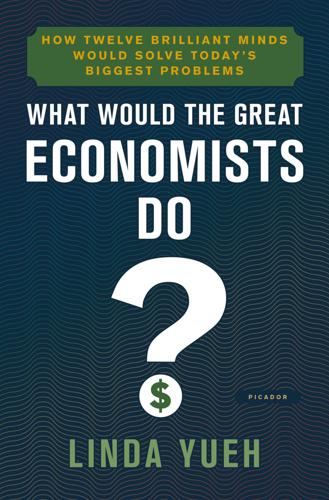
What Would the Great Economists Do?: How Twelve Brilliant Minds Would Solve Today's Biggest Problems
by
Linda Yueh
Published 4 Jun 2018
On occasion he would even enter hotel kitchens to give specific instructions to the chefs.9 He was to become well known throughout America as a health guru. In 1915 he c0-authored a book, How to Live, setting out basic rules of public hygiene. In total 400,000 copies were sold in the US and it was translated into ten languages. None of his economics writing was as successful. Fisher gave his royalties of $75,000 to the Life Extension Institute, an organization he co-founded two years earlier to promote healthy living and encourage frequent medical check-ups. Some of his associations were controversial. He was president of the American Eugenics Society and the Eugenics Research Association. His belief in eugenics was based on the maintenance and improvement of the human race.
…
emerging economies BRICs convergence hypothesis financial/currency crises and globalization and world GDP see also economic development challenges employment and automation China’s post-1949 system exploitation of workers and government spending and imperfect competition losses with imports and Robinson and skill-biased technical change temporary workers wages and levels of work incentive endogenous growth theories Engels, Friedrich The Condition of the Working Class in England and Marx see also Marx, Karl: Communist Manifesto (with Engels) Enlightenment European Scottish entrepreneurs/entrepreneurship in China and Schumpeter Equation of Exchange Equatorial Guinea Ermen & Engels eugenics euro area euro crisis European Central Bank (ECB) European Commission European Fund for Strategic Investments (EFSI) European Investment Bank (EIB) European Union austerity Capital Markets Union growth through investment Juncker Plan services sector single market Transatlantic Trade and Investment Partnership UK membership referendum exchange rates exchange rate mechanism (ERM) fixed see also gold: standard exploitation of workers ‘economic rents’ exports China duties UK US externalities factor-price equalization theorem factor reallocation Fairfax Financial Fannie Mae Fear the Boom and Bust Federal Deposit Insurance Corporation (FDIC) Federal Reserve and the 2008 financial crisis and Friedman and the Great Depression Fermi, Enrico financial accelerators financial crises 1857 crisis 1929 Great Crash 1990s real estate crash in Japan 2008 crisis banking panics currency crises see currency crises and development in emerging economies euro crisis and financial stability leading to low investment and Marx see also recession/depression financial services see also banks/banking financial stability Minsky’s hypothesis see also central banks; macroprudential policy Financial Times fiscal policy austerity see austerity government spending see government spending Keynes’ fiscal activism and public debt redistribution see redistribution Fisher, Antony Fisher, Ella Fisher, George Whitefield Fisher, Herbert Fisher, Irving and the backlash against globalization Booms and Depressions business cycle theory and central banks on combating deflation debt-deflation theory of depression distributive lag model doctoral thesis and the dollar and the Econometric Society and eugenics Fisher equation and gold How to Live imprint on economics and the Index Number Institute and the Index Visible Company life and times of and the Life Extension Institute The Making of Index Numbers mathematical economics and Minsky and the ‘money illusion’ The Nature of Capital and Income as presidential adviser and Prohibition The Purchasing Power of Money Quantity Theory of Money The Rate of Interest and Remington Rand The Stock Market Crash – and After and stocks The Theory of Interest wealth Why is the Dollar Shrinking?
…
joint-stock companies Jones, Homer Journal of Economic Perspectives Journal of Political Economy JPMorgan Juncker Plan Kahn, Richard Kant, Immanuel Keynes, John Maynard and the backlash against globalization and the Bloomsbury Group and Bretton Woods System and budget deficits counter-cyclical policies and crowding out on depression/recession The Economic Consequences of the Peace fiscal activism and Friedman The General Theory of Employment, Interest and Money and government spending on government’s role in economy and Hayek and investors Keynesian revolution legacy life and times of and Marshall and Niemeyer and paradox of thrift at Paris Peace Conference Prices and Production and public investment and Robbins Robinson and Keynes/Keynesian economics and Schumpeter and ‘socializing investment’ A Tract on Monetary Reform and the Treasury A Treatise on Money wealth Keynes, John Neville Khrushchev, Nikita Knight, Frank Kodak Korea North South Krugman, Paul Krupp Kuznets, Simon labour force growth labour productivity and work incentive laissez-faire landowners Lassalle, Ferdinand Latin America currency crisis (1981–82) see also specific countries League of Nations Lehman Brothers Lenin, Vladimir Leontief, Wassily Lewis, Arthur Lewis, Barbara (‘Bobby’) Life Extension Institute Linda for Congress BBC documentary London London School of Economics and Political Science London Stock Exchange Long Depression (1880s) Lopokova, Lydia Louis XIV LSE see London School of Economics and Political Science Lucas, Jr, Robert Ma, Jack (Ma Yun) Maastricht Treaty macroprudential policy see also central banks; financial stability Malaysia Malthus, Thomas Manchester Mandela, Nelson manufacturing additive (3D printing) automation in China and deindustrialization GDP contribution in UK German high-tech and industrialization see also industrialization Japan ‘manu-services’ ‘March of the Makers’ mass-manufactured goods and national statistics reshoring rolling back deindustrialization process and Smith trade patterns changed by advanced manufacturing US Mao Zedong Maoism ‘March of the Makers’ marginal utility analysis marginalism market forces/economy ‘Big Bang’ (1986) competition see competition and economic equilibrium see economic equilibrium emerging economies see emerging economies Hayek and the supremacy of market forces ‘invisible hand’ and laissez-faire and Marx 4 self-righting markets supply and demand see supply and demand Marshall, Alfred on approach to economics and the backlash against globalization and the Cambridge School and decentralization Economics of Industry and education’s role in reducing inequality and inequality and Keynes and laissez-faire legacy life and times of marginal utility analysis and Marx and poverty Principles of Economics and utility theory Marshall, Mary, née Paley Marx, Heinrich Marx, Henriette, née Pressburg Marx, Jenny, née von Westphalen Marx, Karl and agriculture and the backlash against globalization Capital and capitalism and China and class Communist Manifesto (with Engels) communist theories A Contribution to the Critique of Political Economy doctoral thesis The Eighteenth Brumaire of Louis Bonaparte and Engels journalism life and times of and Marshall and rate of profit and Ricardo and Russia on service sector workers surplus value theory and the Young Hegelians Marx, Laura Marx, Louise Marxism and the Austrian School and unemployment see also Marx, Karl Mason, Edward mathematical economics Mauritius May, Theresa Meade, James median income Menger, Carl mercantilist policies see also Corn Laws Merkel, Angela Mexico middle class China and economic growth and economic inequality and European revolutionaries income and industrialization and Keynes and Heinrich Marx as proportion of world population and Schumpeter social resentment US Mill, James Mill, John Stuart On Liberty Principles of Political Economy Minsky, Hyman Mises, Ludwig von Mitchell, Wesley mobile phones/smartphones monetarism see also Friedman, Milton monetary policy and Friedman tools see also quantitative easing (QE) see also central banks monopolies and Marx natural and Robinson and Schumpeter and Smith and Sraffa monopsony Mont Pelerin Society Morgenthau, Henry mortgage-backed securities (MBS) mortgage lending and the 2008 financial crisis sub-prime Myanmar Myrdal, Gunnar Napoleon I Napoleon III Napoleonic Wars national/official statistics China UK US national debt Austria and central banks China and creditors and debt forgiveness and deficits euro area and foreign exchange reserves and investment Japan major economies owed to foreigners and quantitative easing and Ricardian equivalent UK US Vietnam National Health Service (UK) National Infrastructure Commission (UK) Navigation Acts neoclassical economics convergence hypothesis ‘neoclassical synthesis’ New Neoclassical Synthesis see also Fisher, Irving; Marshall, Alfred; Solow, Robert Neoclassical Synthesis see also Samuelson, Paul New Classicists see also Lucas, Jr, Robert New Deal New Institutional Economics see also North, Douglass New Keynesians see also Stiglitz, Joseph New Neoclassical Synthesis New Rhineland News (Cologne) New Rhineland News: Review of Political Economy (London) new trade theory New York Herald New York Times New York Tribune Newcomb, Simon Newsweek Niemeyer, Sir Otto Nissan Nixon, Richard Nokia non-tariff barriers (NTBs) Nordhaus, William North, Douglass and the backlash against globalization and development challenges doctoral thesis The Economic Growth of the United States from 1790 to 1860 and institutions Institutions, Institutional Change and Economic Performance life and times of Nobel Prize path dependence theory and Smith North, Elizabeth, née Case North Korea Northern Rock Oak Ridge National Laboratory Obama, Barack Occupy movement oil industry Organisation for Economic Co-operation and Development (OECD) Osborne, George Overseas Development Institute (ODI) Oxford University Balliol College Paine, Thomas Paley, Mary Paris Peace Conference path dependence theory see also North, Douglass Peel Banking Act Philips, Lion Philips (electronics company) physical capital Physiocrats Pigou, Arthur Cecil Piketty, Thomas pin-making Pinochet, Augusto Ponzi finance populism Portugal poverty aid and development see economic development challenges eradication/reduction frictional and Marshall and Marx and median income people lifted from in South Africa productivity and agriculture ‘benign neglect’ of Britain’s productivity puzzle and computers and economic growth and education and factor reallocation and Germany and Hayek incentives and industry/industrial revolution and innovation and investment Japan and jobs labour see labour productivity and land low and Marshall moving into higher sectors of and pricing raising and Schumpeter and secular stagnation slow economic and productivity growth and the future and specialization and technology total factor productivity and trade and wages Prohibition protectionism agricultural see also Corn Laws Navigation Acts public-private partnerships public investment and Keynes public spending general government spending see government spending public investment see public investment squeeze see also austerity Puerto Rico quantitative easing (QE) Quantity Theory of Money see also Friedman, Milton; monetarism; Equation of Exchange Rand, Ayn RAND Corporation rate of profit rational expectations theory Reagan, Ronald recession/depression debt-deflation theory of depression Great Depression see Great Depression (1930s) Great Recession (2009) Greece ‘hangover theory’ of Hayek on and Keynes Long Depression (1880s) second recession (1937–38: recession within the Depression) in UK 1970s redistribution Regional Comprehensive Economic Partnership (RCEP) Reich, Robert reindustrialization Reisinger, Anna Josefina Remington Rand rent-seeking research and development (R&D) investment China Research in Motion (RIM) retail trade Rhineland News Ricardian equivalence Ricardo, David and the backlash against globalization and class comparative advantage theory and the Corn Laws Essay on the Influence of a Low Price of Corn on the Profits of Stock The High Price of Bullion international trade theory as a landlord life and times of as a loan contractor and Marx On the Principles of Political Economy and Taxation and Schumpeter and Smith wealth Ricardo, Priscilla Robbins, Lionel Robinson, Austin Robinson, James Robinson, Joan The Accumulation of Capital and the AEA and the backlash against globalization and communism Economic Philosophy The Economics of Imperfect Competition Essays in the Theory of Employment and imperfect competition Introduction to the Theory of Employment and Keynes and Keynesian economics life and times of and monopolies monopsony theory and Schumpeter and unemployment wage determination theory robotics Rodrik, Dani Rolls-Royce Roosevelt, Franklin D New Deal Russia 1905 Revolution and Lenin and Marx Samsung Samuelson, Paul and the backlash against globalization Economics factor-price equalization theorem Nobel Prize savings for capital investment and inflation and Keynes and the ‘paradox of thrift’ Say, Jean-Baptiste Schmoller, Gustav von Schumpeter, Anna, née Reisinger Schumpeter, Gladys, née Seaver Schumpeter, Joseph and the backlash against globalization as banker/investor Business Cycles and capitalism Capitalism, Socialism and Democracy ‘creative destruction’, innovation and ‘The Crisis of the Tax State’ and the Econometric Society economics and entrepreneurs on Fisher and Hayek History of Economic Analysis and Keynes legacy life and times of The Nature and Content of Theoretical Economics and perfect competition and Ricardo and Robinson Theory of Economic Development wealth Schumpeter, Romaine Elizabeth, née Boody Schumpeter Group of Seven Wise Men Schwartz, Anna Jacobson Schwarzenegger, Arnold Scottish Enlightenment Seaver, Gladys Ricarde see Schumpeter, Gladys secular stagnation self-interest services sector China and deindustrialization financial services see financial services global trade in services human capital investment invisibility of liberalization ‘manu-services’ and Marx move away from and national statistics output measurement productivity and innovation and Smith Trade in Services Agreement (TiSA) UK US shadow banking Shiller, Robert silver Singapore Skidelsky, Robert skill-biased technical change skills shortage small and medium-sized enterprises (SMEs) smartphones/mobile phones Smith, Adam and the backlash against globalization as Commissioner of Customs for Scotland economic freedom on ‘invisible hand’ of market forces and laissez-faire economics legacy life and times of and manufacturing and Marx and North and Physiocracy on rate of profit and rebalancing the economy and Ricardo and the services sector and state intervention The Theory of Moral Sentiments The Wealth of Nations social capital social networks social services socialism communist see communism vs welfare state capitalism Solow, Barbara (‘Bobby’), née Lewis Solow, Robert and the backlash against globalization with Council of Economic Advisers doctoral thesis economic growth model ‘How Economic Ideas Turn to Mush’ John Bates Clark Medal and Keynesian economics life and times of Nobel Prize Presidential Medal of Freedom and technological progress Sony Sorrell, Sir Martin South Africa South Korea Soviet Union and China Cold War collapse of see also Russia Spain specialization spontaneous order Sraffa, Piero stagflation Stanley Black & Decker state government regulation intervention in the economy laissez-faire STEM (science, technology, engineering and mathematics) workers sterling Stigler, George Stiglitz, Joseph stocks and Fisher and interest rates US railroad Strachey, Lytton Strahan, William Strong, Benjamin Sturzenegger, Federico Summers, Lawrence supply and demand see also market forces/economy: ‘invisible hand’ Sustainable Development Goals (SDGs) Taiwan Tanzania tariffs taxation and austerity devolved powers of flat for government deficit spending before Great Depression and inequality and investment Japan and Marshall negative income tax to pay off national debt Pigouvian tax progressive and Reagan redistribution through Schumpeter on Smith on Taylor, John Taylor, Overton H.

The Immortal Life of Henrietta Lacks
by
Rebecca Skloot
Published 2 Feb 2010
… SCIENTISTS GROW IMMORTAL CHICKEN HEART … DEATH PERHAPS NOT INEVITABLE Scientists said Carrel’s chicken-heart cells were one of the most important advances of the century, and that cell culture would uncover the secrets behind everything from eating and sex to “the music of Bach, the poems of Milton, [and] the genius of Michelangelo.” Carrel was a scientific messiah. Magazines called his culture medium “an elixir of youth” and claimed that bathing in it might make a person live forever. But Carrel wasn’t interested in immortality for the masses. He was a eugenicist: organ transplantation and life extension were ways to preserve what he saw as the superior white race, which he believed was being polluted by less intelligent and inferior stock, namely the poor, uneducated, and nonwhite. He dreamed of never-ending life for those he deemed worthy, and death or forced sterilization for everyone else.
…
“Scientists don’t like to think of HeLa cells as being little bits of Henrietta because it’s much easier to do science when you disassociate your materials from the people they come from. But if you could get a sample from Henrietta’s body today and do DNA fingerprinting on it, her DNA would match the DNA in HeLa cells.” Around the time Van Valen suggested HeLa was no longer human, researchers began exploring whether Henrietta’s cells might hold the key to human life extension—perhaps even immortality—and headlines once again claimed that scientists had found the fountain of youth. In the early 1900s, Carrel’s chicken-heart cells supposedly proved that all cells had the potential for immortality. But normal human cells—either in culture or in the human body—can’t grow indefinitely like cancer cells.
…
W Greider, “Telomeres Shorten During Ageing of Human Fibroblasts,” Nature 345 (May 31, 1990); C. W Greider and E. H. Blackburn, “Identification of Specific Telomere Terminal Transferase Activity in Tetrahymena Extracts,” Cell 43 (December 1985). For further reading on research into aging and human life extension, see Stephen S. Hall’s Merchants of Immortality. For a selection of HPV research involving HeLa cells, see Michael Boshart et al., “A New Type of Papillomavirus DNA, Its Presence in Genital Cancer Biopsies and in Cell Lines Derived from Cervical Cancer,” EMBO Journal 3, no. 5 (1984); R. A. Jesudasan et al., “Rearrangement of Chromosome Band nqi3 in HeLa Cells,” Anticancer Research 14 (1994); N.
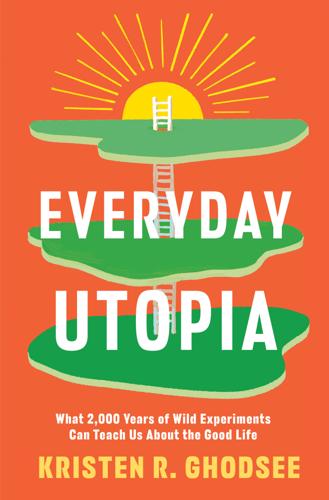
Everyday Utopia: What 2,000 Years of Wild Experiments Can Teach Us About the Good Life
by
Kristen R. Ghodsee
Published 16 May 2023
In academia, blue sky thinking underpins the discipline of geoengineering—scientists who hope to hack the earth’s weather systems in order to prevent the deleterious effects of climate change.17 The Cambridge University Center for Climate Repair suggests ocean greening, recycling CO2, refreezing the polar ice caps, and spraying aerosols of sulphate particles into the stratosphere to prevent solar radiation from reaching the planet.18 In Silicon Valley, a new breed of extreme dreamers, such as the Coalition for Radical Life Extension, is experimenting with ways to achieve human immortality.19 And those who study artificial life (in its hard, soft, and wet forms) push the boundaries of their imaginations to understand how sentience might evolve from complex systems.20 In the technology sector, entrepreneurs reap rewards when they “move fast and break things,” no matter what the costs to society as a whole.
…
More Scientists Now Say It Must Be an Option,” YaleEnviroment360, May 29, 2019, https://www.e360.yale.edu/features/geoengineer-the-planet-more-scientists-now-say-it-must-be-an-option; Pallab Ghosh, “Climate Change: Scientists Test Radical Ways to Fix Earth’s Climate,” BBC News, May 10, 2018, https://www.bbc.com/news/science-environment-48069663. 19 See the website for the Coalition for the Radical Life Extension: https://www.rlecoalition.com/about. 20 See the website for the International Society for Artificial Life: https://www.alife.org. 21 Maddy Savage, “Why Do Women Still Change Their Names?” BBC, September 23, 2020, https://www.bbc.com/worklife/article/20200921-why-do-women-still-change-their-names. 22 Lucy Robinson, “Whose Last Name Should You Give Your Baby?”
…
abortion, 94, 95, 152, 213 Abundance (Diamandis), 14 academia, academic studies, 37, 69–70 blue sky thinking and, 16 farming taught alongside, 121–22, 126–27 gender pay gap in, 20–21 valued above manual labor, 118, 121 Acts 2, 142, 154 Acts 4, 142 adoption, 221, 222–23, 224 Agriculture Department, US, 71 Albigensians, 142, 143 alloparents, alloparenting, 30, 181, 221, 222, 229 among nonhuman primates, 182–83 nuclear-family households as deterrent to, 185, 218, 226–27 state-funded, 213 All the Single Ladies (Traister), 197 Amazon, Indigenous tribes of, 186 Amazon (company), 67 Amazons (Greek mythology), 2, 26, 233 American Revolution, 144 Amish America website, 154 Anabaptists, 144, 153–54, 254 anarchists, anarchism, 8, 150–52 private property and, 140, 145 see also Kropotkin, Peter; Proudhon, Pierre-Joseph Anarchy, State, and Utopia (Nozick), 149 Ancient Society (Morgan), 152 Andover Theological Seminary, 80 Animal Farm (Orwell), 243–44 Anna Karenina (Tolstoy), 201 Another Community, 162 Apartment List website, 51 Apologia per Galileo (Apology for Galileo) (Campanella), 7 Appel d’une femme au peuple sur l’affranchissement de la femme (Appeal of a Woman to the People on the Enfranchisement of Women) (Démar), 208–9 Apple, Think Different slogan of, 15 Aristophanes, 11, 204 Arnold, Brother, 154–55 Arthur, Chester, 192 artificial intelligence (AI), 14 artificial life, 16 Asexual Visibility and Education Network (AVEN), 224 Association for Library Service to Children, Newbery Medal of, 244 Atarashiki-mura community, 162 Athens, ancient: monogamy in, 189, 202 Peloponnesian War defeat of, 4, 76 property owners in, 139–40 wealth inheritance in, 188–89 see also Greece, ancient BabyCenter website, 18 Babyjahr (baby year), 95 Baden-Württemberg, Campus Galli in, 36–37 banks, 57, 147–48 Bastani, Aaron, 14 Baugruppen (building groups), 56–57, 62 Bebel, August, 91, 210, 211, 246 nuclear family rejected by, 211–12 as proponent of gay rights, 211, 216 Social Democratic Party founded by, 210 women as viewed by, 210–11 Becker, Gary S., 188 Beguines, beguinages, 32, 38–39 castigated as heretics, 39, 254 modern, 57 women’s autonomy in, 38 Belgrade, University of, 47 Benedictine monasteries, 35, 36 Benedict of Nursia, Saint, 35 Berlin, cohousing projects in, 56 Berlin Senate Department for Urban Development, 57 Bernard, George W., 36 Bernard, Zoë, 50 Bertelsmann Foundation, 73 besprizornye, bezprizorniki (unattended ones), 114–15 Betzig, Laura, 190 Bezos, Jeff, 67 Bible, 143 see also New Testament; Old Testament Bible communism, 141–42, 153–57, 166 bihon lifestyle, 216 birth control, 152, 186, 215 birth rates, decline of, 75, 152, 216, 236 BirthStrike, BirthStrikers, 25, 257 Bjerre, Britta, 54–55 Blair, Eric (George Orwell), 243–44 Bloch, Ernst, 238 militant optimism and, 234–35, 240 Blount, Elizabeth, 190 blue sky thinking, 15–17, 24, 108, 239 see also dreamers, dreaming; hope, hopefulness; imagination bofællesskab (Danish communal housing projects), 53–57 Bogdanov, Alexander, 9 Bogomils, Bogomil sect, 142–44, 253 celibacy practiced by, 142, 205, 258 women’s equality in, 142, 154 Bolsheviks, 46, 93–94, 179 Boo, Katherine, 177–78 Book of the City of Ladies, The (Pizan), 38 Boomers, home ownership among, 51 Bowles, Samuel, 105 Boyd, Hal, 178 Boyd, Robert, 195 Boym, Svetlana, 47 Braff, Danielle, 220 Brancolini, Fabio, 129 Braun, Lily, 91–92 Brave New World (Huxley), 241–44, 245, 250 Bregman, Rutger, 14, 260 British Palestine, kibbutzim in, 86 Brooks, David, 177–78 Bruderhof colonies, 156–57 Brunswick, Maine, Two Echo Cohousing in, 52–53, 53 Bucur, Maria, 216 Buddha, 35, 167 Buddhists, Buddhism, 35, 141, 162 celibacy practiced by, 204, 258 Bulgaria: public education in, 118–19 “Unity in Diversity” project in, 130 see also Bogomils, Bogomil sect Bulgarian Women’s Committee, 96 Bureau of Labor Statistics, US, 106 Burkart, Judith M., 180–81 Burkina Faso, polygamy in, 187 California, three-parent adoption in, 224 California, University of: at Davis, 180 at Santa Cruz, 29, 200 Callenbach, Ernest, 9, 12 Cambridge University Center for Climate Repair, 16 Campanella, Tommaso, 6–7, 7, 112–13, 130, 132 Campus Galli, 36–37 Canada: Hutterite communities in, 154 patrilineal naming conventions imposed on Indigenous peoples in, 19–20 Canadian Cohousing Network, 66 Canterbury College, 37 capitalist realism, 240 capitalists, capitalism, 167, 214, 246 condition of women’s lives under, 10 early industrial, 8–10 hereditary transfer of wealth in, 29–30, 33–34, 144–49, 168, 188–90, 207–8 nuclear family structure and, 247–49 private property and, 145 public schools and, 105–8 wealth accumulation as prime concern of, 141, 145–46, 167 Carolingian monasteries, 36–37 Çatalhöyük, 32–33, 34 Cathars: Catholic Church and, 143, 253–54, 258 celibacy practiced by, 205, 253–54 women considered equals by, 142–44, 154 Catherine of Aragon, 190 Catholic Inquisition, 13 Catholics, Catholic Church, 4, 37 Albigensian Crusade of, 143 Beguines castigated as heretics by, 39, 254 Cathars despised by, 143, 253–54, 258 celibacy practiced by priests and nuns in, 205, 258 divorce prohibited by, 190 godparents and, 222 Hutterites persecuted by, 154 monogamy enforced by, 190, 218 tithes collected by, 143 vast land holdings of, 143 celibates, celibacy, 205, 219 of Bogomils, 142, 205 of Cathars, 205, 253–54 as challenge to monogamy, 204–5 in monastic communities, 32, 35, 205 of Shakers, 154–55, 205 cenobites, cenobitic monasticism, 35–36, 38–39, 141 celibacy practiced by, 32, 35, 205 property held in common by, 35, 141 Centers for Disease Control, 74, 176 “Century of Women,” 216 Ceresco (Wisconsin Phalanx), 42 Chana, Ziona, thirty-nine wives and ninety-four children of, 187 Chernyshevsky, Nikolai, 8 childcare, 21, 262 as commodity vs. public good, 100 nonparental, 74 state-supported, 10, 72–73, 92–95, 96–101 universal, 75, 79, 99, 237 worldwide disparity in access to, 96 childcare, communal, 43, 75, 76, 80, 101, 163, 178, 228 benefit to mothers of, 21, 88, 91, 98 benefit to parents of, 10, 21, 75–76, 90 developmental benefit to children of, 86, 90–91, 97–99, 237 on kibbutzim, 87–88, 89–90 childcare, in nuclear families, 73–74, 100, 256 Covid-19 pandemic and, 218, 257 by unpaid mothers, 10, 20–21, 25, 31, 56, 59, 68, 73, 77, 94, 128, 160 child labor, 79 child-rearing, 14, 25, 177–78, 180, 217–18 alloparenting in, see alloparents, alloparenting disparity in access to, 96 multi-parenting in, 223–26 platonic parenting in, 223 as public service, 76 public support for, 10, 72 women’s careers in conflict with, 21, 70–75 child-rearing, collective, 17, 24, 221, 237, 258 alloparenting in, see alloparents, alloparenting children’s long-term development benefited by, 90–91, 97–99 in cohousing, 52–53, 60 as essential for women’s incorporation in the labor force, 91 in Godin’s Familistery, 43 in kibbutzim, 86–91 Kollontai’s vision for, 92–95 Marx and Engels on, 79–80 in Oneida community, 81–85, 95 state-supported, 93–95 child-rearing, in nuclear families: diminishing multigenerational support in, 74, 177 financial cost of, 71–76 by unpaid mothers, 10, 20–21, 25, 31, 56, 59, 73–74, 78, 94 children: carbon footprint of, 228 collective rearing as beneficial to, 86, 90–91, 97–99, 237 with DNA of three parents, 223 early developmental needs of, 74 early immunity as beneficial to, 98 fathers’ surnames taken by, 18 as historically owned and controlled by men, 22, 137, 249 in polyamorous families, 224–25 as public goods, 76 “Children Should Have One Hundred Parents” (Graae), 54 chimpanzees, 180, 182–83 China, 49, 162 alloparental relationships in, 222 polygyny outlawed in, 190 Chomsky, Noam, 250 Christians, Christianity, 167 “Bible communism” and, 141–42, 153–57 communal sects of, 35–36, 153–57 godparents and, 222 monastic tradition in, see monastics, monasticism nuclear family and, 218–19 “Perfectionism” doctrine of, 80, 87 Churchill, Winston, 86 Church of England, 190 Church of Jesus Christ of Latter-day Saints (Mormons), plural marriage practiced among, 191–92 Cigna US Loneliness Index, 31 Cistercians, 35 Cities of Ladies (Simons), 38 Città del Sole, La (The City of the Sun) (Campanella), 6, 112–13 civil rights movement, US, 9 Cleveland, Grover, 192–93 climate crisis, 13, 127, 257 Coalition for Radical Life Extension, 16 cohousing, 52–57, 59, 65–66, 250–51 all-female, 57–58 architecture and design of, 59–60 children raised in, 52–53, 60; see also child-rearing, collective conflict resolution in, 64 conflicts in, 63–67 division of housework in, 59–60, 167 economic advantages of, 59, 61–62, 67 environmental benefits of, 62, 67, 167 loneliness and isolation mitigated in, 63, 67 for seniors, 57–58, 71 Cohousing Association of America (CohoUS), 66 Cold War, 3, 9, 86, 123, 231 Coldwell, Will, 50 Colgate University, 47 co-living, 49–52, 250–51 colleges and universities: communal living at, 29, 66 as historically male spaces, 38 Colombia: civil war in, 58 matriarchal ecovillage in, 57–58 Common (company), 50 communal living, 17, 25, 136 co-living, 49–52, 250–51 on college campuses, 29 economic advantages of, 31, 59, 61–62, 67 environmental advantages of, 31, 32 shared responsibilities in, 32 social connections in, 31 see also cohousing; kibbutzniks, kibbutzim “commune,” as pejorative term, 161 #communelife, 251 communism, communists, 8, 145, 150–51 anarchism vs., 151–52 1898 collapse of, 235 “Communist Confession of Faith” (Engels), 79 Communist Manifesto, The (Marx and Engels), 79–80, 107, 167, 209, 245–46 communities, 14, 17, 32, 37, 74 agricultural, 153 intentional, see intentional communities Community Playthings, 157 compadres (co-parents), 222 compersion, 221 Condition of the Working Class in England, The (Engels), 79 Congress, US, 123, 158–59, 192 Conly, Sarah, 77 Connelly, Rachel, 99 Conquest of Bread, The (Kropotkin), 9 Constitution, US, 2 contraception, 152, 186, 215 convents, 32, 38–39 Cooper, Davina, 237, 240–41 cooperation, 24, 68, 100, 105, 112, 114, 126–27, 202, 207 competition valued above, 121–22, 126 in conflict resolution, 64 as innate human tendency, 9 as learned trait, 65 Copenhagen, University of, Royal Academy of Art and Architecture at, 58 Copernicus, 6 Corinthians, First Epistle to, 205 corporations, blue sky thinking and, 15–16 Council of Vienne (1311), 39 COVID-19 pandemic, 13, 67, 128, 155 homeownership and, 51 isolation and loneliness exacerbated by, 31, 218 parents of young children and, 257 rise of domestic violence during, 175–76, 195 Cowden, Jonathan, 194 crime: income inequality and, 196 violent, 175–76, 195–96 see also domestic violence Cristina (Ghodsee’s grandmother), 171–72, 173, 175, 225 Cutas, Daniela, 223–24, 225 Cybele (fertility goddess), 204 Dakota people, 191 Dalai Lama, 141 Davis, Wade, 15 Dawn of Everything, The (Graeber and Wengrow), 235 Dead Sea Scrolls, 141 debt, financial, 30–31, 106–7, 129, 147–48, 256 Defense Department, US, “death gratuity” of, 76 De Leon, Daniel, 212, 215, 246 Démar, Claire, 208–9 Denmark, cohousing in, 53–54, 60 De revolutionibus orbium coelestium libri vi (Six Books Concerning the Revolutions of the Heavenly Orbs) (Copernicus), 6 Diamandis, Peter, 14 “Dictatorships & Double Standards” (Kirkpatrick), 247–48 Dishotsky, Jon, 50 Dispossessed, The (Le Guin), 9 divine right of kings, 7, 144 divorce, 160, 215, 222–23, 236, 250, 262 in ancient Athens, 188–89 no-fault, 24 in France, 18, 208–9 prohibited in Bible, 190 in Soviet Union, 94–95, 213, 215 domestic relations, see private lives, private sphere domestic violence, 173–76, 195 hidden in single-family homes, 176 rise in, during pandemic, 175–76, 195 US levels of, 176 Dominican order, 35–36 domus (nuclear family), 34 dreamers, dreaming, 11–12, 26, 255, 262 see also blue sky thinking; imagination Duolingo, 129 Durango, Colo., cohousing in, 60 Durrett, Charles, 58 dwelling, see communal living; homes, single-family; housing Dyson, Freeman, 23 dystopia, dystopian fiction, 124–25, 231 capitalist realism mindset in, 240 change as portrayed in, 245–47, 249–54 destruction of traditional family as portrayed in, 241–45 fear deployed in, 26, 240–47, 250, 260–61 taught to children, 244–45, 262 in US high school curricula, 241, 243, 262 as warning against totalitarianism, 243 Dzerzhinsky Commune, 117 Eastern Europe: collapse of socialism in, 64, 196 state-funded childcare in, 95–96 East Germany: state-supported childcare in, 99–100 state-supported maternity leave in, 95–96 economic inequality, 179, 188, 195 homicide rates and, 196 nuclear family and, 196–97 Ecotopia (Callenbach), 9, 12 Ecovilla Gaia, 160 ecovillages 57–58, 160–61, 163, 168, 221, 252, 254, 259 ectogenesis, 25 Edinburgh, University of, 120 Edmunds Anti-Polygamy Act (US; 1882), 192, 193 education: adult, 129–33, 259 higher, see higher education public, see public education Education for Self-Reliance (Nyerere), 121 Education with Production (EWP), 122 edX courses, 129 Einstein, Albert, 27–28, 109 elder care, public support for, 10 Emile (Rousseau), 108 Encyclopaedia Britannica, 149 Enfantin, Barthélemy Prosper, 207–8, 209, 254 Engels, Friedrich, 78–80, 91, 151, 209, 212, 245–46, 251, 253 as advocate for universal child-care and education, 79, 85 as advocate for women’s rights, 152–53 Familistery criticized by, 45 Fourier’s influence on, 40, 251 England: same-sex marriage in, 216 see also United Kingdom Enquiry Concerning Political Justice and Its Influence on Morals and Happiness (Godwin), 146, 206–7 environmental utopias, 9 Epistle of James, 35 Equal Rights Amendment, 2 Essenes, 141, 253 Europe, see Eastern Europe; Western Europe Expatriation Act (US; 1907), 19 Fair Housing Act, US, 65 Families First Coronavirus Response Act (US; 2020), 220 Familistery, 42–46, 45, 47, 253 family, non-traditional, 14 blended, 222 chosen, 218–23 polyamorous, 224–25 redefining and expanding of, 25, 180, 226–29 family, nuclear, 54, 169, 175–80, 197–98, 219, 226, 246 as adapted to protect the wealthy, 196–97, 249 capitalist defenders of, 247–49 dystopian fears of destruction of, 241–45 governments’ vested interest in upholding, 255–56 monogamy in, 219, 255 myth of inevitability of, 186, 236 parenting in, see childcare, in nuclear families; child-rearing, in nuclear families persistent ideal of, 177–78, 193, 201–2, 217, 236 see also homes, single-family; marriage, traditional; monogamy, monogamous societies family abolitionism, 217 famulus (servant or slave), 34 fear: of being alone and unloved, 240–41 of change, 15, 236–37, 250, 260 dystopian, 26, 240–47, 250, 260–61 of failure, 239 hope vs., 240 of non-monogamy, 194 of violence, 201 weaponized to benefit status quo, 16–17, 241 fearmongering, 250, 260 by organized religious denominations, 247 FedCon Star Trek convention, 234 Federal Employees Family Friendly Leave Act (US; 1994), 220 femininity, stereotypes about, 25 feminism, word coined by Fourier, 40 feminists, cohousing promoted by, 54, 67 Fern, Jessica, 178 fertility rates, decline in, 73, 227 Festival Filosofia (Festival of Philosophy), 129–30, 130 feudalism, 7 financial crisis (2008), 51, 162 Finkel, Eli, 25 Firestone, Shulamith, 217, 241 First Amendment, 192 1st Indigenous Ecovillage, 160 Fisher, Mark, 240, 246 FitzRoy, Henry, 190 501(d) organizations, 158–60 Folbre, Nancy, 76 Fortunato, Laura, 189 Foundation for Intentional Community, 66 Fourier, Charles, 14, 24, 253 Engels and Marx influenced by, 40, 251 passionate attraction theory of, 8 secular phalanstery envisioned by, 40–42, 41 France, 188 Albigensians in 142, 143 Cathars in, see Cathars divorce outlawed in, 208 state-supported childcare in, 97, 100 utopian socialists in, 10 Franciscans, 35–36 freecycling, 164, 168 free-market societies, 150, 247 see also capitalists, capitalism free rider problem, 11 free stores, 168 French Civil Code, 208 French Revolution, 7–8, 40, 144–45, 146, 208 Friedman, Milton, 106–7 Fully Automated Luxury Communism (Bastani), 14 future, 12, 76, 132–33, 234–38, 258 commitment to, 26 dystopian visions of, see dystopia, dystopian fiction fear and, 152, 241, 260 hope and, 238–39, 260 imagining, 14, 253, 260 militant optimism and, 26, 234–38, 240, 258, 262 positive vision of, 27–28, 233, 260 as unknowable and uncertain, 250, 256 utopian visions of, see utopia, utopian ideas Galeano, Eduardo, 238 Galileo Galilei, 6–7 Gandhi, Mohandas K.
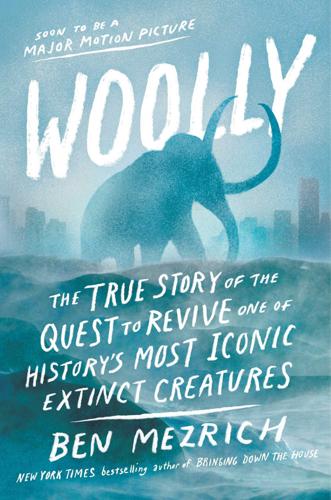
Woolly: The True Story of the Quest to Revive History's Most Iconic Extinct Creature
by
Ben Mezrich
Published 3 Jul 2017
He’d put money into politics and social projects—funding sometimes controversial efforts, political candidates, and movements that aligned with his conservative libertarian views. He’d put up a scholarship that encouraged brilliant entrepreneurs under twenty to drop out of school and pursue their dreams, believing that school wasn’t the answer for everyone. But perhaps his most pressing passion, and the one that had put him into Luhan’s sphere of expertise, was life extension. Reverse aging, immortality, whatever label the science came under, Thiel was interested, and willing to put some of his billions behind it. Luhan had never met a billionaire before, and from what she had read about Thiel, she had expected him to be arrogant and intimidating. But she quickly found him quite humble, even charming, and well versed in genetics and the health sciences.
…
As Thiel pressed her for more information about the project that had led her to her knowledge of elephants, she realized that she was on the verge of something. An answer to their stem cell problem was sorting itself out in her thoughts. What she had told Thiel didn’t just apply to his own passions, his goal of infinite life extension. It applied to the Revivalists as well. The answer they were looking for was already there, in nature, in the elephant cells themselves. After she had filled in Thiel on more of the science of the Woolly Mammoth project, he congratulated her and turned his attention to another guest. In May 2015, he had already given one hundred thousand dollars to help fund the Mammoth Revival project.
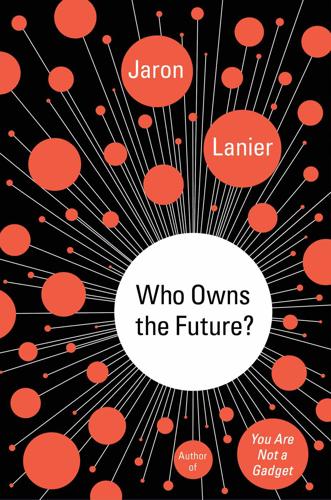
Who Owns the Future?
by
Jaron Lanier
Published 6 May 2013
The social outcome we seem to be approaching later in the century would grant simulated immortality for ordinary people, which could only be enjoyed by observers, not the actual dead, while the very rich might enjoy actual methusalization. One of the keenest reasons to want a middle-class distribution of wealth is to avoid a situation in which a small number of wealthy individuals live very long lives while no one else can afford the same life extensions. In my breakfast conversations about artificial hearts with Marvin Minsky, so long ago, he proposed that life extension could become so cheap that it would be universal. What we’ve seen, though, is that when some things become very cheap, other things become very expensive. Printers are incredibly cheap, and yet ink for them is incredibly expensive. Phones are cheap and yet connectivity for them is insanely expensive.
…
Printers are incredibly cheap, and yet ink for them is incredibly expensive. Phones are cheap and yet connectivity for them is insanely expensive. Wal-Mart is cheap, and yet jobs go away. Software is “free” and yet the Internet is not creating as many jobs as it destroys. The talking seagull from the first chapter is probably more realistic than universal life extension for all in a world where clout and wealth flow to Siren Servers. A great showdown will occur when lives are extended significantly for the first time. My guess is that this won’t happen in the United States first. Russian oligarchs6 or Gulf sheiks might step up initially. If there’s a clock ticking to get a monetized information economy started, this is it.
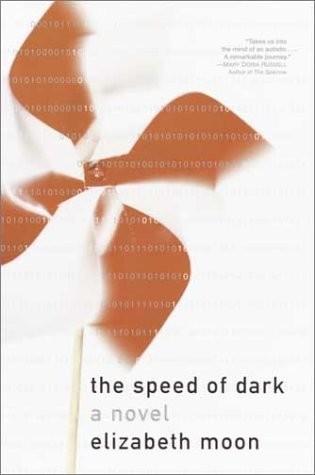
The Speed of Dark
by
Elizabeth Moon
Published 1 Jan 2002
Even if you get a life extension treatment later, it can’t be done at the same time.” Linda shrugs and looks down. Her shoulders are tense; her hands are fisted in her lap. I think she will not take the treatment without the promise of longer life. If I do it and she does not, we may not see each other again. I feel strange about that; she was in this unit before I was. I have seen her every working day for years. “I will talk to the board about this,” Mr. Arakeen says, more calmly. “We’ll have to get more legal and medical advice. But if I understand you, some of you are demanding life extension treatment as part of Page 196 the package, at some time in the future, as a condition of participation, is that right?”
…
Light should go on top of dark. That balances. I can just see over them to walk down the hall. I fix the Chopin prelude in my mind and head for the laundry room. As usual on Friday nights, only Miss Kimberly is there. She is old, with fuzzy gray hair, but not as old as Miss Watson. I wonder if she thinks about the life extension treatments or if she is too old. Miss Kimberly is wearing light-green knit slacks and a flowered top. She usually wears this on Fridays when it is warm. I think about what she wears instead of the smell in the laundry room. It is a harsh, sharp smell that I do not like. “Good evening, Lou,” she says now.
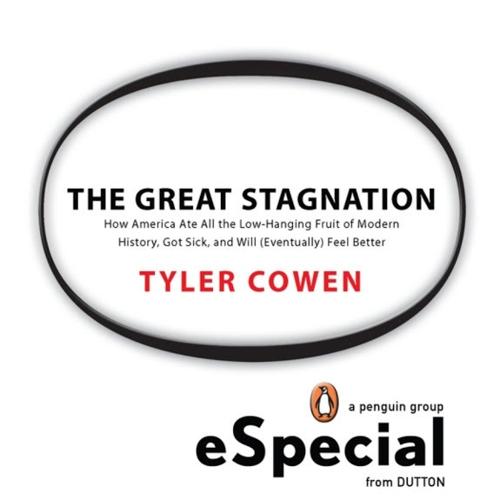
The Great Stagnation
by
Tyler Cowen
Published 24 Jan 2011
They’ll bring big gains but without putting too many people back to work, IT specialists of the right kind excluded. The internet is wonderful, but it’s not saving the revenue-generating sector of the economy. The forward march of technology has indeed continued, but it’s giving us Twitter and better painkillers and some life extension when we are old and sick. And I love Twitter and I’ll probably value those painkillers, too, once I need them. We’re living the age-old wish of getting away from money, money, money and finding some of our biggest innovative successes in sectors that are good for us but not revenue intensive.

Artificial Unintelligence: How Computers Misunderstand the World
by
Meredith Broussard
Published 19 Apr 2018
Alba, “Chicago Uber Driver Charged with Sexual Abuse of Passenger”; Fowler, “Reflecting on One Very, Very Strange Year at Uber”; Isaac, “How Uber Deceives the Authorities Worldwide.” 11. Copeland, “Summing Up Alan Turing.” 12. “The Leibniz Step Reckoner and Curta Calculators—CHM Revolution.” 13. Kroeger, The Suffragents; Shetterly, Hidden Figures; Grier, When Computers Were Human. 14. Wolfram, “Farewell, Marvin Minsky (1927–2016).” 15. Alcor Life Extension Foundation, “Official Alcor Statement Concerning Marvin Minsky.” 16. Brand, “We Are As Gods.” 17. Turner, From Counterculture to Cyberculture. 18. Brand, “We Are As Gods.” 19. Hafner, The Well. 20. Borsook, Cyberselfish, 15. 21. Barlow, “A Declaration of the Independence of Cyberspace.” 22.
…
New York: ACM Press, 2013. http://dl.acm.org/citation.cfm?id=2534860. Alba, Alejandro. “Chicago Uber Driver Charged with Sexual Abuse of Passenger.” New York Daily News, December 30, 2014. http://www.nydailynews.com/news/crime/chicago-uber-driver-charged-alleged-rape-passenger-article-1.2060817. Alcor Life Extension Foundation. “Official Alcor Statement Concerning Marvin Minsky.” Alcor News, January 27, 2016. Alexander, Michelle, and Cornel West. The New Jim Crow: Mass Incarceration in the Age of Colorblindness. Revised ed. New York: New Press, 2012. Ames, Morgan G. “Translating Magic: The Charisma of One Laptop per Child’s XO Laptop in Paraguay.”

Physics of the Future: How Science Will Shape Human Destiny and Our Daily Lives by the Year 2100
by
Michio Kaku
Published 15 Mar 2011
Unable to die, he became more and more decrepit and decayed, living an eternity with pain and suffering. So that is the challenge facing the science of the twenty-first century. Scientists are now reading the book of life, which includes the complete human genome, and which promises us miraculous advances in understanding aging. But life extension without health and vigor can be an eternal punishment, as Tithonus tragically found out. By the end of this century, we too shall have much of this mythical power over life and death. And this power won’t be limited to healing the sick but will be used to enhance the human body and even create new life-forms.
…
More likely, it will be a combination of several methods: 1. growing new organs as they wear out or become diseased, via tissue engineering and stem cells 2. ingesting a cocktail of proteins and enzymes that are designed to increase cell repair mechanisms, regulate metabolism, reset the biological clock, and reduce oxidation 3. using gene therapy to alter genes that may slow down the aging process 4. maintaining a healthy lifestyle (exercise and a good diet) 5. using nanosensors to detect diseases like cancer years before they become a problem POPULATION, FOOD, AND POLLUTION But one nagging question is: If life expectancy can be increased, then will we suffer from overpopulation? No one knows. Delaying the aging process brings up a host of social implications. If we live longer, won’t we overpopulate the earth? But some point out that the bulk of life extension has already happened, with life expectancy exploding from forty-five to seventy to eighty in just one century. Instead of creating a population explosion, it has arguably done the reverse. As people are living longer, they are pursuing careers and delaying childbearing. In fact, the native European population is actually decreasing dramatically.
…
See Longevity Life-forms, artificial creation of Life in space, search for, 6.1, 8.1 Life in 2100 dating, 9.1, 9.2, 9.3, 9.4 global warming and godlike power for humans, itr.1, itr.2 home life longevity questions, 9.1, 9.2 marriage and family life medical care, 9.1, 9.2 remodeling shopping, 9.1, 9.2 sports and games vacations work life Life on Mars, artificial establishment of Life’s origins Lilienthal, David LISA (Laser Interferometer Space Antenna) Lloyd, Seth Locomotive technology Longevity aging process caloric restriction and entropy and evolutionary perspective on genetics of, 3.1, 3.2 metabolism and methods for life extension popular interest in population expansion and resveratrol and telomeres of a cell and in 2100, 9.1, 9.2 youth preservation and Luria, A. R. Luttwak, Edward Lutz, Robert Maes, Pattie Maglev trains and cars, 5.1, 9.1 Magnetic energy, 5.1, 9.1 Magnetic field to create nuclear fusion Magnetic resonance imaging (MRI) as mind-reading technology, 1.1, 1.2, 1.3 replicators and reverse engineering the brain and Mallouk, Thomas Malthus, Thomas Mammoth resurrection Markram, Henry Marquess, Ron Marriage and family life in 2100 Mars landing/colonization Martel, Sylvain Martian moon landing Matrix movies, 2.1, 7.1 Maxwell, James Clerk McGinnis, Dave McRae, Hamish, 7.1, 7.2, 7.3 Medicine/biotechnology augmented reality and brain injury treatments cancer screening cancer therapies, 1.1, 3.1, 3.2, 4.1, 9.1 Cave Man Principle and cloning, 3.1, 3.2 computers and creating new life-forms curing all diseases, 3.1, 8.1 depression treatments designer children, 3.1, 3.2, 3.3 far future (2070), 3.1, 9.1, 9.2 gene therapy, 3.1, 3.2 genetic enhancements genomic medicine germ warfare memory enhancement, 3.1, 3.2 midcentury (2030) Moore’s law and muscle disorder treatments nanotechnology and near future (present to 2030) nightmare scenarios quantum theory and resurrecting extinct life-forms robotics and, 2.1, 2.2, 2.3 side effects of biotech revolution spinal cord injury treatments stem cell technology surgery three stages of tissue engineering (organ replacement), 3.1, 3.2 virtual reality and See also Longevity Memory enhancement, 3.1, 3.2 Men in Black (movie) “Merger of Flesh and Machine, The” (Brooks) Merrill Lynch company Methane gas, 5.1, 6.1 Microelectromechanical systems (MEMS), 4.1, 4.2 Middle class, planetary Miesenböck, Gero Miller, Webb Mind-body problem Mind reading EEG and MRI technology for ethics of Kaku’s brain scan mini-MRI machines photographing of dreams Mining operations on other worlds Minsky, Marvin, 2.1, 2.2, 2.3 Mischel, Walter Modha, Dharmendra Modular robots, 2.1, 4.1 Mohamad, Mahathir Moon landing/colonization, 6.1, 6.2 Moore, Gordon, 1.1, 4.1 Moore’s law computers and, 1.1, 1.2, 1.3, 4.1 medicine and nanotechnology and, 4.1, 4.2 Moravec, Hans, 2.1, 2.2, 2.3 More, Sir Thomas Morfoot, Linda Morphing Moses, Edward MRI-MOUSE Muscle disorder treatments Musical robots Music industry Myrabo, Leik Najmabadi, Farrokh, 5.1, 5.2 Nanobots, 4.1, 4.2, 4.3 Nanocars Nanoparticles, 4.1, 4.2 Nanorods Nanostarships Nanotechnology carbon nanotubes, 4.1, 6.1 commercial applications today computers and DNA chips energy for molecular machines far future (2070) manipulation of individual atoms medicine and midcentury (2030) Moore’s law and, 4.1, 4.2 nanomachines in our bodies near future (present to 2030) potential of quantum theory and shape-shifting technology space travel and, 6.1, 6.2 See also Replicators National Ignition Facility (NIF) Neanderthal resurrection Neecke, Nikolas Neumann, John von, 2.1, 2.2 Neural networks News broadcasting Newspaper industry Newton, Isaac, itr.1, 6.1, 7.1 New York Times Nicolelis, Miguel A.
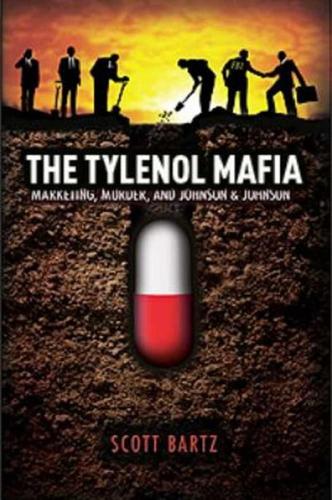
The Tylenol Mafia
by
Scott Bartz
Published 21 Sep 2011
In 1973, the DOD sought to defer drug replacement costs for date sensitive stockpiles of prescription and OTC drugs by extending their useful life beyond the manufacturer’s original expiration date. Subsequently, the Office of Management and Budget and the General Accounting Office completed studies to determine the feasibility of a “shelf life extension program.” These agencies found that the shelf life of OTC drugs, generally two to three years, could safely be extended to five years under properly controlled storage conditions. On July 1, 1975, the FDA and the Veterans Administration (VA) entered into a “Memo of Understanding” implementing a program to extend the expiration dates of the prescription and non-prescription drugs that the VA purchased.
…
Throughout the 1980s, the DOD contracted with the McNeil Consumer Products Company to buy Tylenol from all three of the Johnson & Johnson facilities that distributed Tylenol. The DOD purchased Tylenol in bulk containers for use in Military treatment facilities and VA hospitals and clinics. The DOD also purchased Tylenol for sale in the retail class of trade through its military commissaries. Because of the shelf-life extension program, all of the Tylenol sold to the DOD was given a shelf life of five years. This required separate bottling production runs so that the labels on the Tylenol bottles being sold to the DOD reflected the 5-year shelf life rather than the typical 3-year shelf life of the Tylenol bottled at the McNeil manufacturing plants.
…
Inquirer, February 11, 1986. In October of 1982, Dean Mickelson, a pharmacist at the Revco drugstore: “Pharmacies pull drug,” The Taos News: Oct 7, 1982. An FOIA request was filed with the FDA: Konigstein, David. Response to FOIA Request, File 2011-4678, July 26, 2011. In 1973, the DOD: “SLEP - The DoD/FDA Shelf Life Extension Program.” Accessed July 10, 2011. https://slep.dmsbfda.army.mil/portal/page/portal/SLEP_PAGE_GRP/SLEP_HOME_NEW On July 1, 1975, the FDA: “MOU 224-76-8049: Memorandum of Understanding Between The Veterans Administration and The Food and Drug Administration.” June 12, 1975. Throughout the 1980s, the DOD: DOD Contract with McNeil Consumer Products Company, Round Rock, Texas, Contract number LA12082 C0776, May 1982. – DOD (Air force) Contract with McNeil Consumer Products Co., Glendale, California, Contract number SA13H 77 50158, Fiscal year 1980.

Deep Utopia: Life and Meaning in a Solved World
by
Nick Bostrom
Published 26 Mar 2024
And what they do discover, they may use to secure a path, but they could refrain from telling us. That way, they would avoid spoiling the fun we could have in finding things out for ourselves later at our own less hurried pace. * * * The avoidance of catastrophes and the abolition of miseries. Life extension, healing, and the dispensation of second chances. Protective coatings, or “timesuits”, to reduce the identity-eroding effects of the passage of time— we’ve discussed memory enhancements, strengthening of diachronic solidarity (prospective and retrospective), and improvement of our capacity for autonomous decision-making.
…
The tales of our deeds and experiences at such modest scales may not reverberate down the halls of Valhalla, and they may scarcely even be talked about in our pubs and coffeehouses, but perhaps they get a mention around the kitchen table; or, failing that, at least that dutiful monologist inside our own heads can be counted on to cover the proceedings—with its never-waning pathos and headlining of every bagatelle (breaking news: that jerk just stole my parking space; breaking news: what is that click in my knee; breaking news: fly at large in the vestibule). Yet even such parochialism does not reveal a clear path to high levels of interestingness in utopia, for in addition to the spatial scope of the domain within which novelty is assessed, we must also consider the temporal scope. And especially in light of the prospect of radical life extension in utopia—which of course is desirable for other reasons—it may prove challenging to sustain a high level of interestingness throughout the course of our individual lives. This at least appears to be the case if we measure interestingness in terms of something like “cognitive upheavals” (though it is not true—we should remind ourselves—if we measure interestingness in terms of “kaleidoscopically churning complexity”).
…
Nanomedicine, Volume I: Basic Capabilities. Austin, Texas: Landes Bioscience. Freitas, R. A., Jr. 2003. Nanomedicine, Volume IIA: Biocompatibility. Austin, Texas: Landes Bioscience. Freitas, R. A., Jr. 2022. Cryostasis Revival: The Recovery of Cryonics Patients through Nanomedicine. Scottsdale, AZ: Alcor Life Extension Foundation. Gates, B. 2017. “What if people run out of things to do?” Gates Notes (blog), May 22. https://www.gatesnotes.com/Homo-Deus Gall, C., & Smith, L. 2019. “Lotto Lout Mickey Carroll Is a Skint Coalman in a Rented Flat but Is ‘Happier Now’”. Daily Mirror, 15 November. Giedd, J. N., et al. 2015.
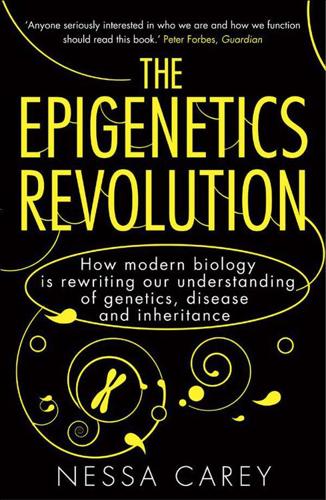
Epigenetics Revolution: How Modern Biology Is Rewriting Our Understanding of Genetics, Disease and Inheritance
by
Nessa Carey
Published 31 Aug 2011
Vaccination against serious diseases such as polio, for example, has hugely improved both childhood mortality figures (fewer children dying) and morbidity in terms of quality of life for survivors (fewer children permanently disabled as a result of polio). There is a growing debate around the issue sometimes known as human life extension, which deals with extending the far end of life, old age. Human life extension refers to the concept that we can use interventions so that individuals will live to a greater age. But this takes us into difficult territory, both socially and scientifically. To understand why, it’s important to establish what ageing really is, and why it is so much more than just being alive for a long time.
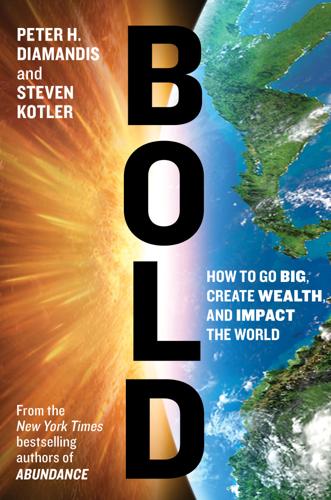
Bold: How to Go Big, Create Wealth and Impact the World
by
Peter H. Diamandis
and
Steven Kotler
Published 3 Feb 2015
So Teller thought for a while and finally asked, “So, are we taking moonshots?” “That’s it,” answered Page, “that’s exactly what we’re doing.” And that is exactly what they’re doing. Over the past few years, Google has repeatedly made headlines with the audacity of their moonshots, dedicating their skunk works to everything from space exploration and life extension to AI and robotics. In other words, as of right now, there is perhaps no other company in the world playing the skunk game at such an elevated level. Over the next few pages, we’re going to examine exactly how Google takes moonshots, giving you an inside look at their skunk methodology and paying attention to which of Kelly Johnson’s initial ideas they’ve kept, which they’ve changed, and—from a psychological perspective—why.
…
(HLI), 65–66 Hyatt Hotels Corporation, 20 IBM, 56, 57, 59, 76 ImageNet Competition (2012), 55 image recognition, 55, 58 Immelt, Jeff, 225 incentive competitions, xiii, 22, 139, 148, 152–54, 159, 160, 237, 240, 242, 243–73 addressing market failures with, 264–65, 269, 272 back-end business models in, 249, 265, 268 benefits of, 258–61 case studies of, 250–58 collaborative spirit in, 255, 260–61 crowdsourcing in designing of, 257–58 factors influencing success of, 245–47 false wins in, 268, 269, 271 “flash prizes” in, 250 global participation in, 267 innovation driven by, 245, 247, 248, 249, 252, 258–59, 260, 261 intellectual property (IP) in, 262, 267–68, 271 intrinsic rewards in, 254, 255 judging in, 273 key parameters for designing of, 263–68 launching of new industries with, 260, 268, 272 Master Team Agreements in, 273 media exposure in, 265, 266, 272, 273 MTP and passion as important in, 248, 249, 255, 263, 265, 270 operating costs of, 271, 272–73 principal motivators in, 254, 262–63 purses in, 265, 266, 270, 273 reasons for effectiveness of, 247–49 risk taking in, 247, 248–49, 261, 270 setting rules in, 263, 268, 269, 271, 273 small teams as ideal in, 262 step-by-step guide to, 269–73 telegenic finishes in, 266, 272, 273 time limits in, 249, 267, 271–72 XPRIZE, see XPRIZE competitions Indian Motorcycle company, 222 Indian Space Research Organization, 102 Indiegogo, 145, 173, 175, 178, 179, 184, 185–86, 187, 190, 199, 205, 206, 257 infinite computing, 21, 24, 41, 48–52, 61, 66 entrepreneurial opportunities and, 50–52 information: crowdsourcing platforms in gathering of, 145–46, 154–56, 157, 159–60, 220–21, 228 in data-driven crowdfunding campaigns, 207–10, 213 networks and sensors in garnering of, 42–43, 44, 47, 48, 256 science, 64 see also data mining Inman, Matthew, 178, 192, 193, 200 innovation, 8, 30, 56, 137, 256 companies resistant to, xi, 9–10, 12, 15, 23, 76 crowdsourcing and, see crowdsourcing as disruptive technology, 9–10 feedback loops in fostering of, 28, 77, 83, 84, 86, 87, 90–91, 92, 120, 176 Google’s eight principles of, 84–85 incentive competitions in driving of, 245, 247, 248, 249, 252, 258–59, 260, 261 infinite computing as new approach to, 51 power of constraints and, 248–49, 259 rate of, in online communities, 216, 219, 224, 225, 228, 233, 237 setting big goals for, 74–75, 78, 79, 80, 82–83, 84, 85, 87, 89–90, 92, 93, 103 skunk methodology in fostering of, 71–87, 88; see also skunk methodology inPulse, 176, 200 Instagram, 15–16, 16 insurance companies, 47 Intel, 7 intellectual property (IP), 262, 267–68, 271 INTELSAT, 102 Intel Science and Engineering Fair, 65 International Manufacturing Technology Show, 33 International Space Station (ISS), 35–36, 37, 97, 119 International Space University (ISU), 96, 100–104, 107–8 Founding Conference of, 102, 103 Internet, 8, 14, 39, 41, 45, 49, 50, 117, 118, 119, 132, 136, 143, 144, 153, 154, 163, 177, 207, 208, 209, 212, 216, 217, 228 building communities on, see communities, online crowd tools on, see crowdfunding, crowdfunding campaigns; crowdsourcing development of, 27 explosion of connectivity to, 42, 46, 46, 146, 147, 245 mainstreaming of, 27, 32, 33 reputation economics and, 217–19, 230, 232, 236–37 Internet-of-Things (IoT), 46, 47, 53 intrinsic rewards, 79, 254, 255 Invisalign, 34–35 iPads, 42, 57, 167 iPhones, 12, 42, 62, 176 iPod, 17, 18, 178 iRobot, 60 Iron Man, 52–53, 117 Ismail, Salim, xiv, 15, 77, 92 isolation, innovation and, 72, 76, 78, 79, 81–82, 257 Japan Aerospace Exploration Agency, 97 JARVIS (fictional AI system), 52–53, 58, 59, 146 Jeopardy, 56, 57 Jet Propulsion Laboratory (JPL), 99 Jobs, Steve, xiv, 23, 66–67, 72, 89, 111, 123 Johnson, Carolyn, 227 Johnson, Clarence “Kelly,” 71, 74, 75 skunk work rules of, 74, 75–76, 77, 81, 84, 247 Joy, Bill, 216, 256 Jumpstart Our Business Startups (JOBS) Act (2012), 171, 173 Kaggle, 160, 161 Kahneman, Daniel, 78, 121 Kaku, Michio, 49 Kauffman, Stuart, 276 Kaufman, Ben, 17–20 Kay, Alan, 114n Kemmer, Aaron, 35, 36, 37 Kickstarter, 145, 171, 173, 175, 176, 179–80, 182, 184, 190, 191, 193, 195, 197, 200, 205, 206 Kindle, 132 Kiva.org, 144–45, 172 Klein, Candace, 19–20, 171 Klein, Joshua, 217–18, 221 Klout, 218 Kodak Corporation, 4–8, 9–10, 11, 12, 20 Apparatus Division of, 4 bankruptcy of, 10, 16 digital camera developed by, 4–5, 5, 9 as innovation resistant, 9–10, 12, 15, 76 market dominance of, 5–6, 13–14 Kotler, Steven, xi, xiii, xv, 87, 279 Krieger, Mike, 15 Kubrick, Stanley, 52 Kurzweil, Ray, 53, 54, 58, 59 language translators, 137–38 crowdsourcing projects of, 145, 155–56 Latham, Gary, 74–75, 103 Law of Niches, 221, 223, 228, 231 leadership: importance of vision in, 23–24 moral, 274–76 Lean In (Sandberg), 217 Lean In circles, 217, 237 LEAP airplane, 34 LendingClub, 172 LeNet 5, 54, 55 Let’s Build a Goddamn Tesla Museum, see Tesla Museum campaign Levy, Steven, 138 Lewicki, Chris, 99, 179, 202, 203–4 Lichtenberg, Byron K., 102, 114n Licklider, J. C. R., 27 LIDAR, 43–44, 44 life-extension projects, 66, 81 Li’l Abner (comic strip), 71 Lincoln, Abraham, 109, 194 Lindbergh, Charles, 112, 244, 245, 259–60 linear growth, 7, 9 linear industries, 38, 116 exponential technologies in disrupting of, 17, 18–22 linear organizations, 15, 17, 18, 19, 20, 21, 76, 85, 116 LinkedIn, 77, 213, 231 Lintott, Chris, 220 Linux, 11, 163 Littler Workplace Policy Institute, 60 live-streaming, in crowdsourcing campaigns, 207 Lloyd, Gareth, 4 Local Motors, 33, 217, 223–25, 231, 238, 240, 241 Locke, Edwin, 23, 74, 75, 103 Lockheed, 71–72, 75 Lockheed Martin, 249 Longitude Prize, 245, 247, 267 long-term thinking, 116, 128, 130–31, 132–33, 138 Los Angeles, Calif., 258 loss aversion, 121 Louis Pasteur Université, 104 Lovins, Amory, 222 MacCready, Paul, 263 McDowell, Mike, 291n machine learning, 54–55, 58, 66, 85, 137, 167, 216 see also artificial intelligence (AI) Macintosh computer, 72 McKinsey & Company, 245 McLucas, John, 102 Macondo Prospect, 250 macrotasks, crowdsourcing of, 156, 157–58 Made in Space, 36–37 Made to Stick: Why Some Ideas Survive and Others Die (Heath and Heath), 248 MakerBot printers, 39 Makers (Doctorow), 38 MakieLabs, 39 manufacturing, 33, 41 biological, 63–64 digital, 33 in DIY communities, 223–25 robotics in, 62 subtractive vs. additive, 29–30, 31 3–D printing’s impact on, 30, 31, 34–35 Marines, US, 222 Markoff, John, 56 Mars missions, 99, 118–19, 128 Mars Oasis project, 118 Maryland, University of, 74 Maryniak, Gregg, 244 Mashable, 238 massively transformative purpose (MTP), 215, 221, 230, 231, 233, 240, 242, 274 in incentive competitions, 249, 255, 263, 265, 270 mastery, 79, 80, 85, 87, 92 materials, in crowdfunding campaigns, 195 Maven Research, 145 Maxwell, John, 114n Mead, Margaret, 247 Mechanical Turk, 157 meet-ups, 237 Menlo Ventures, 174 message boards, 164 Mexican entrepreneurs, 257–58 Michigan, University of, 135, 136 microfactories, 224, 225 microlending, 172 microprocessors, 49, 49 Microsoft, 47, 50, 99 Microsoft Windows, 27 Microsoft Word, 11 microtasks, crowdsourcing of, 156–57, 166 Mightybell, 217, 233 Migicovsky, Eric, 175–78, 186, 191, 193, 198, 199, 200, 206, 209 Millington, Richard, 233 Mims, Christopher, 290n MIT, 27, 60, 100, 101, 103, 291n mobile devices, 14, 42, 42, 46, 46, 47, 49, 124, 125, 135, 146, 163, 176 see also smartphones Modernizing Medicine, 57 monetization: in incentive competitions, 263 of online communities, 241–42 Montessori education, 89 moonshot goals, 81–83, 93, 98, 103, 104, 110, 245, 248 Moore, Gordon, 7 Moore’s Law, 6–7, 9, 12, 31, 64 Mophie, 18 moral leadership, 274–76 Morgan Stanley, 122, 132 Mosaic, 27, 32, 33, 57 motivation, science of, 78–80, 85, 87, 92, 103 incentive competitions and, 148, 254, 255, 262–63 Murphy’s Law, 107–8 Museum of Flight (Seattle), 205 music industry, 11, 20, 124, 125, 127, 161 Musk, Elon, xiii, 73, 97, 111, 115, 117–23, 128, 134, 138, 139, 167, 223 thinking-at-scale strategies of, 119–23, 127 Mycoskie, Blake, 80 Mycroft, Frank, 180 MySQL, 163 Napoléon I, Emperor of France, 245 Napster, 11 Narrative Science, 56 narrow framing, 121 NASA, 96, 97, 100, 102, 110, 123, 221, 228, 244 Ames Research Center of, 58 Jet Propulsion Laboratory (JPL) of, 99 Mars missions of, 99, 118 National Collegiate Athletic Association (NCAA), 226 National Institutes of Health, 64, 227 National Press Club, 251 navigation, in online communities, 232 Navteq, 47 Navy Department, US, 72 NEAR Shoemaker mission, 97 Netflix, 254, 255 Netflix Prize, 254–56 Netscape, 117, 143 networks and sensors, x, 14, 21, 24, 41–48, 42, 45, 46, 66, 275 information garnered by, 42–43, 44, 47, 256 in robotics, 60, 61 newcomer rituals, 234 Newman, Tom, 268 New York Times, xii, 56, 108, 133, 145, 150, 155, 220 Nickell, Jake, 143, 144 99designs, 145, 158, 166, 195 Nivi, Babak, 174 Nokia, 47 Nordstrom, 72 Nye, Bill, 180, 200, 207 “Oatmeal, the” (web comic), 178, 179, 193, 196, 200 Oculus Rift, 182 O’Dell, Jolie, 238–39 oil-cleanup projects, 247, 250–53, 262, 263, 264 Olguin, Carlos, 65 1Qbit, 59 operational assets, crowdsourcing of, 158–60 Orteig Prize, 244, 245, 259, 260, 263 Oxford Martin School, 62 Page, Carl, 135 Page, Gloria, 135 Page, Larry, xiii, 53, 74, 81, 84, 99, 100, 115, 126, 128, 134–39, 146 thinking-at-scale strategies of, 136–38 PageRank algorithm, 135 parabolic flights, 110–12, 123 Paramount Pictures, 151 Parliament, British, 245 passion, importance of, 106–7, 113, 116, 119–20, 122, 125, 134, 174, 180, 183, 184, 248, 249 in online communities, 224, 225, 228, 231, 258 PayPal, 97, 117–18, 167, 201 PC Tools, 150 Pebble Watch campaign, 174, 175–78, 179, 182, 186, 187, 191, 200, 206, 208, 209, 210 pitch video in, 177, 198, 199 peer-to-peer (P2P) lending, 172 Pelton, Joseph, 102 personal computers (PCs), 26, 76 Peter’s Laws, 108–14 PHD Comics, 200 philanthropic prizes, 267 photography, 3–6, 10, 15 demonetization of, 12, 15 see also digital cameras; Kodak Corporation Pink, Daniel, 79 Pishevar, Shervin, 174 pitch videos, 177, 180, 192, 193, 195, 198–99, 203, 212 Pivot Power, 19 Pixar, 89, 111 Planetary Resources, Inc., 34, 95, 96, 99, 109, 172, 175, 179, 180, 186, 189–90, 193, 195, 201–3, 221, 228, 230 Planetary Society, 190, 200 Planetary Vanguards, 180, 201–3, 212, 230 PlanetLabs, 286n +Pool, 171 Polaroid, 5 Polymath Project, 145 Potter, Gavin, 255–56 premium memberships, 242 PricewaterhouseCoopers, 146 Prime Movers, The (Locke), 23 Princeton University, 128–29, 222 Prius, 221 probabilistic thinking, 116, 121–22, 129 process optimization, 48 Project Cyborg, 65 psychological tools, of entrepreneurs, 67, 115, 274 goal setting in, 74–75, 78, 79, 80, 82–83, 84, 85, 87, 89–90, 92, 93, 103–4, 112, 137, 185–87 importance of, 73 line of super-credibility and, 96, 98–99, 98, 100, 101–2, 107, 190, 203, 266, 272 passion as important in, 106–7, 113, 116, 119–20, 122, 125, 134, 174, 249, 258 Peter’s Laws in, 108–14 and power of constraints, 248–49 rapid iteration and, 76, 77, 78, 79–80, 83–84, 85, 86, 120, 126, 133–34, 236 risk management and, see risk management science of motivation and, 78–80, 85, 87, 92, 103, 254, 255 in skunk methodology, 71–87, 88; see also skunk methodology staging of bold ideas and, 103–4, 107 for thinking at scale, see scale, thinking at triggering flow and, 85–94, 109 public relations managers, in crowdfunding campaigns, 193–94 purpose, 79, 85, 87, 116, 119–20 in DIY communities, see massively transformative purpose (MTP) Qualcomm Tricorder XPRIZE, 253 Quirky, 18–20, 21, 66, 161 Rackspace, 50, 257 Rally Fighter, 224, 225 rapid iteration, 76, 77, 78, 79–80, 83–84, 85, 86, 236 feedback loops in, 77, 83, 84, 86, 87, 90–91, 92, 120 in thinking at scale, 116, 126, 133–34 rating systems, 226, 232, 236–37, 240 rationally optimistic thinking, 116, 136–37 Ravikant, Naval, 174 Raytheon, 72 re:Invent 2012, 76–77 reCAPTCHA, 154–55, 156, 157 registration, in online communities, 232 Reichental, Avi, 30–32, 35 Rensselaer Polytechnic Institute, 4 reputation economics, 217–19, 230, 232, 236–37 Ressi, Adeo, 118 ReverbNation, 161 reward-based crowdfunding, 173, 174–80, 183, 185, 186–87, 195, 205, 207 case studies in, 174–80 designing right incentives for affiliates in, 200 early donor engagement in, 203–5 fundraising targets in, 186–87, 191 setting of incentives in, 189–91, 189 telling meaningful story in, 196–98 trend surfing in, 208 upselling in, 207, 208–9 see also crowdfunding, crowdfunding campaigns rewards, extrinsic vs. intrinsic, 78–79 Rhodin, Michael, 56 Richards, Bob, 100, 101–2, 103, 104 Ridley, Matt, 137 risk management, 76–77, 82, 83, 84, 86, 103, 109, 116, 121 Branson’s strategies for, 126–27 flow and, 87, 88, 92, 93 incentive competitions and, 247, 248–49, 261, 270 in thinking at scale, 116, 121–22, 126–27, 137 Robinson, Mark, 144 Robot Garden, 62 robotics, x, 22, 24, 35, 41, 59–62, 63, 66, 81, 135, 139 entrepreneurial opportunities in, 60, 61, 62 user interfaces in, 60–61 Robot Launchpad, 62 RocketHub, 173, 175, 184 Rogers, John “Jay,” 33, 38, 222–25, 231, 238, 240 Roomba, 60, 66 Rose, Geordie, 58 Rose, Kevin, 120 Rosedale, Philip, 144 Russian Federal Space Agency, 102 Rutan, Burt, 76, 96, 112, 127, 269 San Antonio Mix Challenge, 257–58 Sandberg, Sheryl, 217, 237 Santo Domingo, Dominican Republic, 3 Sasson, Steven, 4–5, 5, 6, 9 satellite technology, 14, 36–37, 44, 100, 127, 275, 286n scale, thinking at, xiii, 20–21, 116, 119, 125–28, 148, 225, 228, 243, 257 Bezos’s strategies for, 128, 129, 130–33 Branson’s strategies for, 125–27 in building online communities, 232–33 customer-centric approach in, 116, 126, 128, 130, 131–32, 133 first principles in, 116, 120–21, 122, 126, 138 long-term thinking and, 116, 128, 130–31, 132–33, 138 Musk’s strategies for, 119–23, 127 Page’s strategies for, 136–38 passion and purpose in, 116, 119–20, 122, 125, 134 probabilistic thinking and, 116, 121–22, 129 rapid iteration in, 116, 126, 133–34 rationally optimistic thinking and, 116, 136–37 risk management in, 116, 121–22, 126–27, 137 Scaled Composites, 262 Schawinski, Kevin, 219–21 Schmidt, Eric, 99, 128, 251 Schmidt, Wendy, 251, 253 Schmidt Family Foundation, 251 science of motivation, 78–80, 85, 87, 92, 103 incentive competitions and, 148, 254, 255, 262–63 Screw It, Let’s Do It (Branson), 125 Scriptlance, 149 Sealed Air Corporation, 30–31 Second Life, 144 SecondMarket, 174 “secrets of skunk,” see skunk methodology Securities and Exchange Commission (SEC), US, 172 security-related sensors, 43 sensors, see networks and sensors Shapeways.com, 38 Shingles, Marcus, 159, 245, 274–75 Shirky, Clay, 215 ShotSpotter, 43 Simply Music, 258 Singh, Narinder, 228 Singularity University (SU), xi, xii, xiv, 15, 35, 37, 53, 61, 73, 81, 85, 136, 169, 278, 279 Six Ds of Exponentials, 7–15, 8, 17, 20, 25 deception phase in, 8, 9, 10, 24, 25–26, 29, 30, 31, 41, 59, 60 dematerialization in, 8, 10, 11–13, 14, 15, 20–21, 66 democratization in, 8, 10, 13–15, 21, 33, 51–52, 59, 64–65, 276 demonetization in, 8, 10–11, 14, 15, 52, 64–65, 138, 163, 167, 223 digitalization in, 8–9, 10 disruption phase in, 8, 9–10, 20, 24, 25, 29, 32, 33–35, 37, 38, 39, 256; see also disruption, exponential Skonk Works, 71, 72 skunk methodology, 71–87, 88 goal setting in, 74–75, 78, 79, 80, 82–83, 84, 85, 87, 103 Google’s use of, 81–84 isolation in, 72, 76, 78, 79, 81–82, 257 “Kelly’s rules” in, 74, 75–76, 77, 81, 84, 247 rapid iteration approach in, 76, 77, 78, 79–80, 83–84, 85, 86 risk management in, 76–77, 82, 83, 84, 86, 87, 88 science of motivation and, 78–80, 85, 87, 92 triggering flow with, 86, 87 Skunk Works, 72, 75 Skybox, 286n Skype, 11, 13, 167 Sloan Digital Sky Survey, 219–20 Small Business Association, US, 169 smartphones, x, 7, 12, 14, 15, 42, 135, 283n apps for, 13, 13, 15, 16, 28, 47, 176 information gathering with, 47 SmartThings, 48 smartwatches, 176–77, 178, 191, 208 software development, 77, 144, 158, 159, 161, 236 in exponential communities, 225–28 SolarCity, 111, 117, 119, 120, 122 Space Adventures Limited, 96, 291n space exploration, 81, 96, 97–100, 115, 118, 119, 122, 123, 134, 139, 230, 244 asteroid mining in, 95–96, 97–99, 107, 109, 179, 221, 276 classifying of galaxies and, 219–21, 228 commercial tourism projects in, 96–97, 109, 115, 119, 125, 127, 244, 246, 261, 268 crowdfunding campaigns for, see ARKYD Space Telescope campaign incentive competitions in, 76, 96, 109, 112, 115, 127, 134, 139, 246, 248–49, 260, 261, 262, 263, 264, 265, 266, 267, 268, 269 International Space University and, 96, 100–104, 107–8 Mars missions in, 99, 118–19, 128 see also aerospace industry Space Fair, 291n “space selfie,” 180, 189–90, 196, 208 SpaceShipOne, 96, 97, 127, 269 SpaceShipTwo, 96–97 SpaceX, 34, 111, 117, 119, 122, 123 Speed Stick, 152, 154 Spiner, Brent, 180, 200, 207 Spirit of St.

A New History of the Future in 100 Objects: A Fiction
by
Adrian Hon
Published 5 Oct 2020
A few were used for more unconventional purposes–such as an open-air prison. The Universal Cause Collective was an independent Russian research organization originally dedicated to the improvement of amplified team technologies. Not long after its founding, however, it ventured into new fields including life extension, resurrection, and transhumanism under the direction of its charismatic lead scientist, Evgeny Pasternak. Its early breakthroughs in artificial intelligence attracted millions of customers eager to buy its services, fund its wildly ambitious goals, and pledge their allegiance to its cause. In order to transform the soul, Pasternak believed that he must also transform society.
…
They don’t want to hear from yet another person complaining about how unfair the transition centers are. Why else do you think they employ humans to run the tests? Once they’ve climbed the ladder, they think that anyone else who can’t manage it doesn’t deserve to join them. Pretend that you couldn’t imagine anything better than being a normal human. Don’t beg for favors such as personal life extension. It looks desperate. PHs can be very touchy about intimate questions such as, “Who were you before you went up?” or “Where are you actually located?” But if they ask you personal questions, don’t be offended; try to answer them honestly. If they’re inclined to, they can easily find out if you’re lying.

Global Catastrophic Risks
by
Nick Bostrom
and
Milan M. Cirkovic
Published 2 Jul 2008
Technological advances could help solve the problem of succession. Brain scans might one day be used to screen out closet sceptics within the party. Other forms of novel surveillance technologies could also make it easier to control population. New psychiatric drugs might be developed that could increase docility without noticeably reducing productivity. Life-extension medicine might prolong the lifespan of the leader so that the problem of succession comes up less frequently. As for the existence of non-totalitarian outsiders, Caplan worries about the possible emergence ofa world government. Such a government, even ifit started out democratic, might at some point degenerate into totalitarianism; and a worldwide totalitarian regime could then have great staying power given its lack of external competitors and alien exemplars of the benefits of political freedom.
…
For instance, Kurzweil predicts that we will soon be able to distribute trillions of nanorobots in our brains, and thereby extend our minds, and eventually upload our minds into machines. Since lucky humans will at that point merge with superintelligence or become superintelligent, some refer to the Singularity as the 'Techno-rapture', pointing out the similarity ofthe narrative to the Christian Rapture; those foresighted enough to be early adopters of life extension and cybernetics will live long enough to be uploaded and 'vastened' (given vastly superior mental abilities) after the Singularity. The rest of humanity may however be 'left behind'. This secular 'left behind' narrative is very explicit in the Singularitarian writings of computer scientist Hans Moravec ( 1990, 2000) .
…
Those who call for the countries of the world to unite against threats to humanity should consider the possibility that unification itself is the greater threat. 22.4 Totalitarian risk management 2 2 . 4 . 1 Tech n o logy Dwelling on technology-driven dystopias can make almost anyone feel like a Luddite. But in the decentralized modern world, it is extremely difficult to prevent the development of any new technology for which there is market demand. Research on the brain, genetics, and life extension all fit that The totalitarian threat 515 description. Furthermore, all of these new technologies have enormous direct benefits. If people lived forever, stable totalitarianism would be a little more likely to emerge, but it would be madness to force everyone to die of old age in order to avert a small risk of being murdered by the secret police in 1000 years.

The Data Detective: Ten Easy Rules to Make Sense of Statistics
by
Tim Harford
Published 2 Feb 2021
No wonder he adopted a fastidious health regime: he abstained from alcohol, tobacco, meat, tea, coffee, and chocolate. One dinner guest enjoyed his hospitality while noting his quirkiness: “While I ate right through my succession of delicious courses, he dined on a vegetable and a raw egg.”3 This wasn’t just a personal matter: he was an evangelist for health and nutrition. He founded the Life Extension Institute and persuaded William Howard Taft, who’d just finished his presidential term, to be its chairman. (It may seem an incongruous choice: Taft was obese, the heaviest man ever to be president. Taft’s weight problem did, however, prompt his interest in diet and exercise.) In 1915, when Fisher was nearly fifty years old, he published a book titled How to Live: Rules for Healthful Living Based on Modern Science.
…
See also news media Kahan, Dan, 267–71, 275 Kahneman, Daniel, 41, 56, 61n, 96, 121–22, 130, 254 Keil, Frank, 272 Kestenbaum, David, 115 Keynes, John Maynard, 255–59, 260–61, 262 Kickended.com, 109–12, 122, 127 Kickstarter, 108–9, 110, 112, 122 King’s College, Cambridge, 255, 257–58, 259 Kirchner, Néstor, 194 Knowledge Illusion, The (Fernbach and Sloman), 272 Kosara, Robert, 227 Kunda, Ziva, 24 Kurov, Alexander, 209 Kvitkin, Olimpiy, 202 labor statistics, 11, 68–69, 141, 189n, 207, 218n laissez-faire economics, 200–201, 203 land ownership, 201 landmark numbers, 94–95 law and legal statistics, 66 Leave Means Leave, 71 LePan, Douglas, 255 Lepper, Mark, 35, 105, 107 leveraged investments, 243–44, 259–60 Lewin, Kurt, 260–61 Lewis, Martyn, 99, 99n Lewis, Michael, 13 libertarian ideology, 203 Lievesley, Denise, 195–96 life expectancy, 214, 236 Life Extension Institute, 241 lifespan data, 93 Limeburner, Shannon, 108 LinkedIn, 150 literacy rates, 203–4 Literary Digest, 143–44, 164 lobbyists, 13, 273 Lodge, Milton, 33, 38 Loewenstein, George, 27, 271 London, 87–88, 167–68 London Underground, 47, 50–51 Lord, Charles, 35 Lorusso, Silvio, 109, 111 Lovelace, Ada, 219 Lundberg, Shelly, 142 lung cancer, 3–6, 52, 248.

Boom: Bubbles and the End of Stagnation
by
Byrne Hobart
and
Tobias Huber
Published 29 Oct 2024
Virginia Heffernan, “I Saw the Face of God in a Semiconductor Factory,” Wired, March 21, 2023, https://www.wired.com/story/i-saw-the-face-of-god-in-a-tsmc-factory/. 375 Nick Bostrom, Superintelligence: Paths, Dangers, Strategies (Oxford: Oxford University Press, 2014). 376 1 Corinthians, 15:51. 377 Alan Turing, “Computing Machines and Intelligence,” in Computers and Thought, ed. Edward Feigenbaum (New York: McGraw-Hill, 1963), 21. 378 Kurzweil, The Age of Spiritual Machines: When Computers Exceed Human Intelligence (New York: Penguin, 2000). 379 Aubrey de Grey, “Escape Velocity: Why the Prospect of Extreme Human Life Extension Matters Now,” PLOS Biology 2, no. 6: 723–726, doi:10.1371/journal.pbio.0020187. 380 Daniel Crevier, AI: The Tumultuous History of the Search for Artificial Intelligence (New York: Basic Books, 1993). See also Ian G. Barbour, Religion and Science: Historical and Contemporary Issues (San Francisco: HarperCollins, 1997). 381 For accounts on Christian eschatology, see Wolfhart Pannenberg, Theology and the Kingdom of God (Philadelphia: The Westminster Press, 1977) and Jürgen Moltmann, The Coming of God: Christian Eschatology (Minneapolis, MN: Fortress Press, 1996). 382 Noble, The Religion of Technology, 189. 383 Monika Gisler, Didier Sornette, and Ryan Woodard, “Innovation as a Social Bubble: The Example of the Human Genome Project,” Research Policy 40 (2011): 1412–1425. 384 Robert L.
…
TechGnosis: Myth, Magic, and Mysticism in the Age of Information. Berkeley, CA: North Atlantic Books, 2015. Doerr, John, “Salvation (and Profit) in Greentech,” Ted Talk, 2007, https://www.ted.com/talks/john_doerr_sees_salvation_and_profit_in_greentech. De Grey, Aubrey. “Escape Velocity: Why the Prospect of Extreme Human Life Extension Matters Now.” PLOS Biology 2, no. 6: 723–726. doi:10.1371/journal.pbio.0020187. Gies, Frances, and Joseph Gies. Cathedral, Forge, and Waterwheel: Technology and Invention in the Middle Ages. New York: HarperCollins, 1994. Gillespie, Michael. Hegel, Heidegger, and the Ground of History.

Architects of Intelligence
by
Martin Ford
Published 16 Nov 2018
In a similar way, it feels quite futile for me to make a quantitative prediction about when these breakthroughs in AGI will arrive, but Rutherford’s story is a good one. MARTIN FORD: Do you expect AGI to happen in your lifetime? STUART J. RUSSELL: When pressed, I will sometimes say yes, I expect AGI to happen in my children’s lifetime. Of course, that’s me hedging a bit because we may have some life extension technologies in place by then, so that could stretch it out quite a bit. But given that we kind of understand enough about these breakthroughs to at least describe them, and that people certainly have inklings of what their solutions might be, suggests to me that we’re just waiting for a bit of inspiration.
…
RAY KURZWEIL: One thesis of mine is that we’re going to merge with the intelligent technology that we are creating. The scenario that I have is that we will send medical nanorobots into our bloodstream. One application of these medical nanorobots will be to extend our immune systems. That’s what I call the third bridge to radical life extension. The first bridge is what we can do now, and bridge two is the perfecting of biotechnology and reprogramming the software of life. Bridge three constitutes these medical nanorobots to perfect the immune system. These robots will also go into the brain and provide virtual and augmented reality from within the nervous system rather than from devices attached to the outside of our bodies.
…
Whenever I see Kurzweil I remind him that he is going to die. MARTIN FORD: That’s mean. RODNEY BROOKS: I’m going to die too. I have no doubt about it, but he doesn’t like to have it pointed out because he’s one of these techno-religion people. There are different versions of techno religion. There are the life extension companies being started by the billionaires in Silicon Valley, then there’s the upload yourself to a computer person like Ray Kurzweil. I think that probably for a few more centuries, we’re still mortal. MARTIN FORD: I tend to agree with that. You mentioned self-driving cars, let me just ask you specifically how fast you see that moving?

Digital Gold: Bitcoin and the Inside Story of the Misfits and Millionaires Trying to Reinvent Money
by
Nathaniel Popper
Published 18 May 2015
When he read the novels of Larry Niven, which discussed the possibility of cryogenically freezing humans and later bringing them back to life, Hal didn’t just ponder the potential in his dorm room. He located a foundation dedicated to making this process a reality and signed up to receive the Alcor Life Extension Foundation’s magazine. Eventually he would pay to have his and his family’s bodies put into Alcor’s frozen vaults near Los Angeles. The advent of the Internet had been a boon for Hal, allowing him to connect with other people in far-flung places who were thinking about similarly obscure but radical ideas.
…
For instance, his post on “Bit Gold Markets” says that it was written on December 27, 2008, but the URL is http://unenumerated.blogspot.com/2008/04/bit-gold-markets .html#links. 339“repeated use of ‘of course’ without isolating commas”: Skye Grey, “Satoshi Nakamoto Is (Probably) Nick Szabo,” LikeinaMirror, December 1, 2013, https://likeinamirror.wordpress.com/2013/12/01/satoshi-nakamoto-is-probably-nick-szabo/. 348a hacker demanding ransom was targeting Hal: Robert McMillan, “An Extortionist Has Been Making Life Hell for Bitcoin’s Earliest Adopters,” Wired, December 29, 2014, http://www.wired.com/2014/12/finney-swat/. 353The United States Marshals Service had auctioned off the 29,655: Tim Draper’s announcement is available at https://medium.com/mirror-blog/tim-draper-wins-govt-auction-partners-with-vaurum-to-provide-bit coin-liquidity-in-emerging-markets-88f04a1d8598. 353Wences officially announced the $20 million: The Xapo announcement is available at https://blog.xapo.com/xapo-raises-20-million-investment-led-by-greylock-partne/. 354Gates had initially bet against the open Internet and built a closed network: Kathy Rebello, “Inside Microsoft: The Untold Story of How the Internet Forced Bill Gates to Reverse Course,” BusinessWeek, July 15, 1996. INDEX “The pagination of this electronic edition does not match the edition from which it was created. To locate a specific passage, please use your e-book reader’s search tools.” Abedier, Osama, 101 Alcor Life Extension Foundation, 7 Alibaba (Chinese Internet company), 261 Alice (hypothetical user), 9, 11, 21–23, 358–359 Alipay (Chinese payment processor), 260–261 Allen & Co., 181, 292, 349, 353 altoid (screen name), 69, 248. See also Ulbricht, Ross Andreessen Horowitz, 186, 192, 329 Andreessen, Marc, 181, 186–187, 293–295, 303, 335 Andresen, Gavin beginnings with Bitcoin, 44–47, 49–50, 323 as Bitcoin central figure, 59–62 Bitcoin mining, 53, 192–197, 329 Bitcoin promotion, 75–76, 101–106 creation of Bitcoin Foundation, 138, 141–142 dealing with scandals, 99 relationship with Satoshi, 55–56, 80–86 responding to Mt.
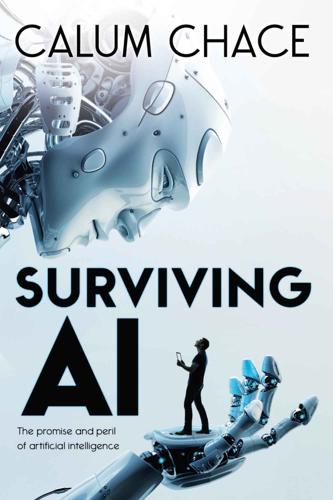
Surviving AI: The Promise and Peril of Artificial Intelligence
by
Calum Chace
Published 28 Jul 2015
If you ask someone who has never taken the idea of immortality seriously whether they would like to live forever, they are very likely to produce three objections: life as a very old person would be uncomfortable, they would get bored, and the planet would become overcrowded. They might add the notion that death gives meaning to our lives by making them more poignant. It is extraordinary how few people immediately perceive extended life as a straightforward benefit. Aubrey de Grey, a well-known researcher of radical life extension technologies, thinks we employ a psychological strategy called a “pro-aging trance” to cope with the horror of age and death: we fool ourselves into thinking that death is inevitable and even beneficial. The first point to make is that we are not talking about extended lives in which we become increasingly decrepit.
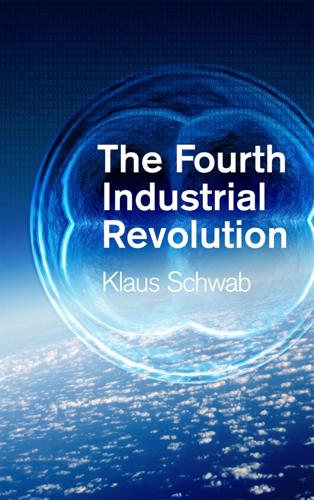
The Fourth Industrial Revolution
by
Klaus Schwab
Published 11 Jan 2016
They are pushing the current thresholds of lifespan, health, cognition and capabilities in ways that were previously the preserve of science fiction. As knowledge and discoveries in these fields progress, our focus and commitment to having ongoing moral and ethical discussions is critical. As human beings and as social animals, we will have to think individually and collectively about how we respond to issues such as life extension, designer babies, memory extraction and many more. At the same time, we must also realize that these incredible discoveries could also be manipulated to serve special interests – and not necessarily those of the public at large. As theoretical physicist and author Stephen Hawking and fellow scientists Stuart Russell, Max Tegmark and Frank Wilczek wrote in the newspaper The Independent when considering the implications of artificial intelligence: “Whereas the short-term impact of AI depends on who controls it, the long-term impact depends on whether it can be controlled at all…All of us should ask ourselves what we can do now to improve the chances of reaping the benefits and avoiding the risks”.60 One interesting development in this area is OpenAI, a non-profit AI research company announced in December 2015 with the goal to “advance digital intelligence in the way that is most likely to benefit humanity as a whole, unconstrained by a need to generate financial return”.61 The initiative – chaired by Sam Altman, President of Y Combinator, and Elon Musk, CEO of Tesla Motors - has secured $1 billion in committed funding.
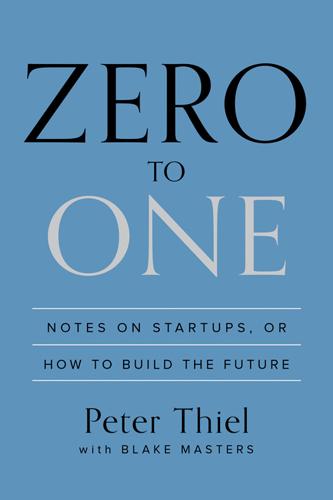
Zero to One: Notes on Startups, or How to Build the Future
by
Peter Thiel
and
Blake Masters
Published 15 Sep 2014
Indefinite Life Our ancestors sought to understand and extend the human lifespan. In the 16th century, conquistadors searched the jungles of Florida for a Fountain of Youth. Francis Bacon wrote that “the prolongation of life” should be considered its own branch of medicine—and the noblest. In the 1660s, Robert Boyle placed life extension (along with “the Recovery of Youth”) atop his famous wish list for the future of science. Whether through geographic exploration or laboratory research, the best minds of the Renaissance thought of death as something to defeat. (Some resisters were killed in action: Bacon caught pneumonia and died in 1626 while experimenting to see if he could extend a chicken’s life by freezing it in the snow.)
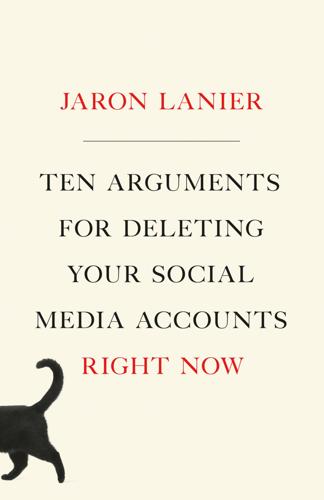
Ten Arguments for Deleting Your Social Media Accounts Right Now
by
Jaron Lanier
Published 28 May 2018
If that is not a new religion, I don’t know what is. Google famously funded a project to “solve death.”6 This is such a precisely religious pretension that I’m surprised the religions of the world didn’t serve Google with a copyright infringement take-down notice.7 Google could have framed its work as life extension, or as aging research, but instead it went right for the prize, which is being the master of that which is most sacred within you. BUMMER must own you in order to own anything at all. Facebook also plays the game. The Facebook page of a deceased person becomes a shrine that one can only visit as a member, and to be a member you must implicitly become an adherent.

Frostbite: How Refrigeration Changed Our Food, Our Planet, and Ourselves
by
Nicola Twilley
Published 24 Jun 2024
In the future, however, she expects that this deeper understanding of the mechanisms behind cellular decay will start influencing how fruits and vegetables are farmed, as well as redesigning them at the genetic level. “We are learning how preharvest factors affect postharvest quality,” Falagán told me. One day soon, a blueberry’s life-extension protocol will include a schedule for how to taper its parent plant’s liquid intake in the hours before harvest, as well as prescriptions for field-applied hormone and mineral sprays. The fruits and vegetables of our imminent future will not have achieved immortality yet—but they will be inching ever closer to it.
…
The problem is something he’s seen again and again in market research: “The food-preservation stories are sometimes hard ones for consumers to understand.” He and his colleagues have found that Americans don’t understand the science behind freshness, and they don’t appreciate the potential for shelf-life extension. “All you really want is for things to be in the condition that you want them in, when you want them,” said Reinke. When he asked consumers how they felt about fridge technology that might, say, allow strawberries to stay good for sixty days, their response wasn’t necessarily enthusiastic.

The Optimist: Sam Altman, OpenAI, and the Race to Invent the Future
by
Keach Hagey
Published 19 May 2025
Founded by philosopher Max More in the 1980s, Extropianism is a form of pro-science, super-optimism that seeks to fight entropy—the universal law that says things fall apart, everything tends toward chaos and death—on all fronts. In practical terms, this meant signing up to have their bodies—or at least heads—frozen at negative 321 degrees Fahrenheit at the Alcor Life Extension Foundation in Scottsdale, Arizona, after they died. They would be revived once humanity was technologically advanced enough to do so. More philosophically, fighting entropy meant abiding by five principles: Boundless Expansion, Self-Transformation, Dynamic Optimism, Intelligent Technology, and Spontaneous Order.
…
Louis, 27 rent strikes, 27 slum clearance, 26, 34 tax credits, 22, 34–35, 53 universal basic income (UBI) and, 12–14, 194, 205, 256 AGI (artificial general intelligence), see AI (artificial intelligence) “agile” method of software development, 127 aging, the fight against, see immortality AI (artificial intelligence) belief we’re living in a simulation created by, 17 competitive arms race in, 9, 166, 211, 233, 267, 270, 312–14 exacerbating the problem of affordable housing, 254–56, 302 existential risk from, 4–6, 141, 144–45, 167–68, 177, 190, 300 game theory, 166, 285 generative AI, 1, 3, 9, 219, 221, 270 the goal of artificial general intelligence (AGI), 3, 5–10, 12–14, 133, 146–47, 170, 181, 189–90, 192, 198–200, 208, 211, 222–26, 230, 233, 237, 245, 287, 304–5 “godfathers of AI,” 188, 312 large carbon footprint of, 252 “Manhattan Project” for AI, 8, 145, 147, 219 national security implications of AI, 166, 267, 285 neural network–based AI, 147, 164, 176, 179–82, 190–93, 219, 221, 243, 314 toward the singularity, 140–42, 144–45, 168, 199–200, 305 “Sky,” an AI voice, 307–8 the three tribes of humans involved in AI (research, safety, and policy), 208–9, 276 “weights” in, 181 “wrappers” around, 278–79 see also AI research/training; AI safety; chatbots; OpenAI AI Doomer Industrial Complex, 299 AI Dungeon (video game), 247–48, 254–55 “AI Principles,” 5 AI research/training, 5, 143–45, 167–71, 177–88, 207–9, 305–6 backpropagation and, 179, 181 bias encoded in AI, 252 chess, 67, 151, 145–46, 191, 215–16 “deep learning,” 146–47 dialog as method of alignment, 265 diffusion model trained by adding digital “noise,” 262–63 “few shot” learning, 244 Go (game), 191–92, 216–17 going from “agent” to “transformer,” 218–21, 265 going from “training” to “alignment,” 8, 264–66, 276, 284, 305–6 ImageNet competition, 182, 184 the issue of Books1 and Books2, 244 large language models (LLMs), 16–17, 218, 221, 244–46, 252–53, 270–71, 275 learning means AIs have souls, 179 machine translation, 168, 219, 245 neural networks, 147, 164, 176, 179–82, 190–93, 219, 221, 243, 314 parse trees, 174 passing the bar exam, 3, 272 reinforcement learning, 147, 185, 191–93, 264, 265, 284 Rubik’s cube–solving robot hand, 218 sentiment neuron, 218 “sequence to sequence” learning, 178 software engineers and AI researchers, 191, 194 Test of Time Award, 305 the “Turing test,” 173–74 “value-lock,” 252 “zero-shot” responses, 220–21 see also video games AI safety, 2, 4–5, 8–9, 165–67 Asilomar AI Principles, 208, 211, 213, 233–34 Deployment Safety Board (DSB) at OpenAI, 279–80, 287 Elon Musk as an AI doomer, 2, 5, 163, 167–72, 214–15, 273–74 existential risk from AI, 4–6, 141, 144–45, 167–68, 177, 190, 300 how AI could go wrong, 7–8, 143–44, 147, 154 moral balancing act between progress and safety, 135 national security implications of AI, 166, 267, 285 parable of the paperclip-making AI, 5, 143–44, 164 pedophilia and, 254 Puerto Rico conference on AI safety (2015), 167–70, 207, 211 the Stochastic Parrot critique of AI, 252–53 AI Superpowers (Lee), 267 AIDS crisis, 33, 43, 49 AIM (AOL Instant Messenger), 16, 50, 76, 162 Airbnb, 4, 123, 139, 150, 152,158, 263, 274, 292 Akin Grump Strauss Hauer & Feld law firm, 300 Alberta, Tim, 297 Alcor Life Extension Foundation, Scottsdale, AZ, 141 Alexander, Scott, 143, 165–66 “AlexNet” (Hinton), 178, 182, 266 “Algernon,” 140–41, see Yudkowsky, Eliezer Alinsky, Saul, 22, 40 Alito, Samuel, Jr., 52 Allen & Company investment bank, 117, 229, 263, 266 Allston Trading, 157 Alphabet, 194, 271 AlphaGo, 192, 217 Alt Capital, 311 Altman, Annie (Sam’s sister), 15, 36, 40–43, 134, 201–2, 226–28, 248–50, 281–82, 295 allegations against Sam, 261–62 as an escort and on OnlyFans, 249, 261–62, 281 after Jerry Altman’s death, 311–12 living on the Big Island of Hawaii, 227, 250, 311–12 Altman, Birdie, 23–25 Altman family, 15–16 Alt Capital, 311 American Millinery Company, 31 during Covid, 248–50 family therapy sessions, 249 living in Atlanta, 23 moving to Clayton outside St.
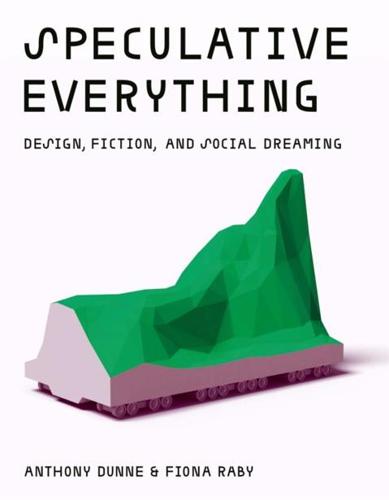
Speculative Everything: Design, Fiction, and Social Dreaming
by
Anthony Dunne
and
Fiona Raby
Published 22 Nov 2013
She decides to leave Ted and move to a "two-generation" family where she joins a new husband and a fifty-two-year-old "child." Presented through a mockumentary and photographic vignettes the project does not offer a design solution or map but serves as a tool for thinking through our own beliefs, values, and priorities when it comes to the pros and cons of extreme life extension. Jaemin Paik, When We All Live to 750, 2012. By acting on peoples' imaginations rather than the material world, critical design aims to challenge how people think about everyday life. In doing this, it strives to keep alive other possibilities by providing a counterpoint to the world around us and encouraging us to see that everyday life could be different.
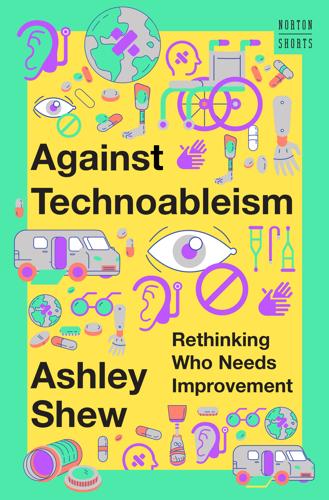
Against Technoableism: Rethinking Who Needs Improvement
by
Ashley Shew
Published 18 Sep 2023
We can share experiences and not be the same, and we can laugh about it sometimes. CHAPTER 6 Accessible Futures THE FUTURE IS DISABLED Technofuturists want to believe that in the future utopia there will be no disability. But despite eugenic and transhumanist imagination about perfecting human beings, about life extension, about regenerative medicine, about neural implants, and the merging of “man” and machine, the fact is that in the future, we can expect more disability, not less. We should expect both more ways to be disabled and more people existing with disabilities. The future is disabled. This is a tagline of the Disability Visibility Project and the title of a new book of poetry by Leah Lakshmi Piepzna-Samarasinha.
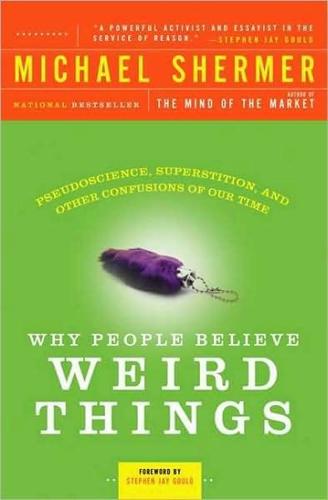
Why People Believe Weird Things: Pseudoscience, Superstition, and Other Confusions of Our Time
by
Michael Shermer
Published 1 Jan 1997
Another futuristic possibility is cloning, the exact duplication of an organism from a body cell (which is diploid, or has a full set of genes, as opposed to a sex cell, which is haploid, or has only a half set of genes). Cloning lower organisms has been accomplished but the barriers to cloning humans are both scientific and ethical. If these barriers go down, cloning may play a significant role in life extension. One of the major problems with organ transplantation is the rejection of foreign tissue. This issue would not exist with duplicate organs from a clone—just raise your clone in a sterile environment to keep the organs healthy, and then replace your own aging parts with the clone's younger, healthier organs.
…
: Harvard University Press, 1964. ......... 1871. The Descent of Man and Selection in Relation to Sex. 2 vols. London: J. Murray. ......... [1883]. In Box 106, Darwin archives, Cambridge University Library. Darwin, M., and B. Wowk. 1989. Cryonics: Beyond Tomorrow. Riverside, Calif.: Alcor Life Extension Foundation. Davies, P. 1991. The Mind of God. New York: Simon & Schuster. Dawkins, R. 1976. The Selfish Gene. Oxford: Oxford University Press. ......... 1986. The Blind Watchmaker. New York: Norton. ......... 1995. Darwin's Dangerous Disciple: An Interview with Richard Dawkins. Skeptic 3, no. 4:80-85. ......... 1996.
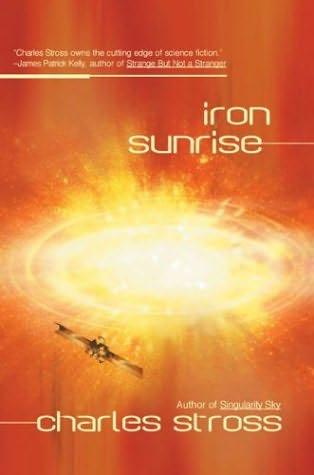
Iron Sunrise
by
Stross, Charles
Published 28 Oct 2004
“Is there a panic button under the bar, or were you just masturbating furiously?” “Panic button, putz.” She paused. “Say, nobody told me about any ersatz juvies. How do I tell if they come in my bar?” “Go by the room tag manifest for their ages. Don’t assume kids are as young as they look. Or old folks, for that matter. You come from somewhere that restricts life extension rights, don’t you?” Svengali shrugged. “At least most of the Lolitas have a handle on how to behave in public, unlike dumb-as-a-plank there. Damn good thing, that, it can be really embarrassing when the eight-year-old you’re trying to distract with a string of brightly dyed handkerchiefs turns out to have designed the weaving machine that made them.
…
Slowing even more, Elspeth continued thoughtfully: “There was a whole gallery explaining the sequence of conquests that enabled the Eastern Empire to defeat their enemies in the south and get a stranglehold on the remaining independent cornucopia-owning fabwerks. Fascinating stuff.” “Nothing on the mass graves, I take it,” Rachel observed. “No.” Elspeth shook her head. “Nor the blank spots on the map of North Transylvania.” “Ah.” Rachel nodded. “They haven’t gotten around to talking about it yet?” “Life extension, amnesia extension. It takes longer to admit to the crimes when the criminals are still taking an active role in government.” Elspeth drained her glass, then looked away. “Why were you there?” she murmured. “War crimes commission. I’d rather not talk about it, thanks.” Rachel finished her drink.

Surveillance Valley: The Rise of the Military-Digital Complex
by
Yasha Levine
Published 6 Feb 2018
It blasted beyond pure Internet services and delved into fiber-optic telecommunication systems, tablets, laptops, home security cameras, self-driving cars, shopping delivery, robots, electric power plants, life extension technology, cyber security, and biotech. The company even launched a powerful in-house investment bank that now rivals Wall Street companies, investing money in everything from Uber to obscure agricultural crop monitoring start-ups, ambitious human DNA sequencing companies like 23andME, and a secretive life extension research center called Calico.88 No matter what service it deployed or what market it entered, surveillance and prediction were cooked into the business.
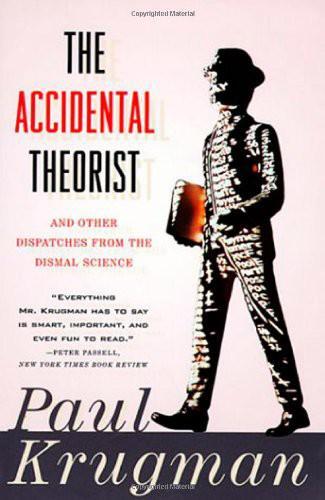
The Accidental Theorist: And Other Dispatches From the Dismal Science
by
Paul Krugman
Published 18 Feb 2010
Cyberpunk’s protagonists were usually outlaw computer hackers, battling sinister multinational corporations for control of cyberspace (a term coined by another sci-fi novelist, William Gibson). But in his 1996 novel Holy Fire, Sterling imagines a rather different future: a world ruled by an all-powerful gerontocracy, which appropriates most of the world’s wealth to pay for ever more costly life-extension techniques. And his heroine is, believe it or not, a ninety-four-year-old medical economist. When the novel first came out, it seemed that Sterling was behind the curve. Public concern over medical costs peaked in 1993, then dropped off sharply. Not only did the Clinton health care plan crash and burn, the long-term upward trend in private medical costs also flattened, as corporations shifted many of their employees into cost-conscious HMOs.

Moon Rush: The New Space Race
by
Leonard David
Published 6 May 2019
It’s possible, but it’s not worth doing. I said it was a good idea all along. Today we use the word “moonshot” to connote an ambitious, exploratory, and groundbreaking project. Google X’s “Moonshot Factory” has embraced the term for inventive initiatives like driverless cars, robots for manufacturing purposes, even life extension. They define “moonshot” as a task or idea that addresses a huge problem, proposes a radical solution, and makes use of breakthrough technology. The National Cancer Institute at the National Institutes of Health is sponsoring the “Cancer Moonshot” to accelerate cancer study and make more therapies available to more patients, while also advancing the capacity to prevent cancer and detect it at an early stage.

The Driver in the Driverless Car: How Our Technology Choices Will Create the Future
by
Vivek Wadhwa
and
Alex Salkever
Published 2 Apr 2017
(It will be a long, long time before A.I. can eliminate these jobs.) The new era of precision medicine and granular understanding of the interplay of all genetic material and environmental stimuli has enlivened quests for extreme longevity. Google, for example, has launched Calico, a new company focusing on radical life extension; and Craig Venter is one of the cofounders of a company called Human Longevity, which is working on extending the healthy human lifespan through genomics-based stem-cell therapies that mitigate the diseases of aging. Venter’s company is sequencing hundreds of thousands of genomes and incorporating data from functional-MRI scans that capture views of and data from processes inside a living human body in order to match genetic processes with in vivo biological ones.
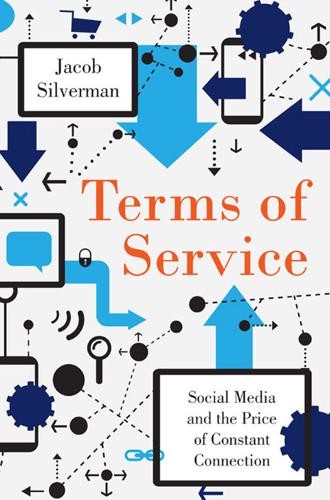
Terms of Service: Social Media and the Price of Constant Connection
by
Jacob Silverman
Published 17 Mar 2015
Some of these people actually believe they will live forever. Peter Thiel, a PayPal cofounder and major early investor in Facebook (and another Rand disciple), has derided the inevitability of death as an “ideology” while plowing millions into companies that might, as he said, “cure aging.” Google’s own forays into life-extension research, through a biotech subsidiary called Calico, reflects its belief that it can solve death—at least for a paying few. So how does social media fit into these dreams of emancipatory digital technology? Social media is a means to the cyber-libertarian end. That it’s only the latest hyped product to come down the pipe—that the inventors of the telegraph and the telephone and the Internet itself shared similar naïve fantasies—doesn’t seem to matter.
…
, 149–50 Jezebel blog, 169 Jobs, Steve, 3 Johnson, Benny, 116 journalism and conflicting reports, 108–9 false stories leading to contact with targets, 107–8 feedback loop on social media, 97 immediacy of report vs. facts, 108–10, 113–14 outrage and grievance applied to, 120–21 and tenor of the viral Web, 102–3 See also news organizations journalists overview, ix, 102–3 climate change writer, 333–35, 336–37, 340–41, 343, 346, 347 information overwhelm, 334–36, 340 and social media, 108, 148 and social news, 127 and unconfirmed reports, 110 and virality, 102–3, 105 junk mail with “Daughter Killed in a Car Crash” in address, 279–80 Jurgenson, Nathan, 61 Just Mugshots, 208 Kalanick, Travis, 235 Kardashian, Kim, 67 Karim, Jawed, 15 Karp, David, 27, 29–30 Keller, Jared, 84, 144 Kelly, Kevin, 280–81, 282 Kelly, Ray, 287 Kickstarter Web site, 84 Kirn, Walter, 142–43 Klein, Ezra, 124 Klout, 194–96, 200 Know More Web site (Washington Post:Wonkblog), 123–24 Kunkel, Benjamin, 274 Kurzweil, Ray, 5 labor markets overview, 226, 234–35, 247 Amazon’s Mechanical Turk, 90, 226, 228, 229–30 exploitative nature of, 228–30, 243–44 Gigwalk, 232 social media compared to, 227 TaskRabbit, 222–26, 236–37, 242, 245 workers trapped by, 231–33 See also employment; fractional work Landy, Andy, 187–88 Lanier, Jaron, 138–39, 328 Lasch, Christopher, 23, 45, 319, 342, 343, 345 Law, Rachel, 357–58 Lazewatsky, Miriam, 79–80 Leibovitz, Liel, 348–49 Lenddo, 309 Lenticular printing, 299–300 Leonard, Franklin, 182–83 Lévi-Strauss, Claude, 167–68 libel lawsuit, 113 libertarianism, 1–3, 19. See also cyber-libertarianism life-extension beliefs and research, 5 lifelogging, 136–40 Like, +1, or heart buttons and BuzzFeed listicles, 118–19 as commercial endorsement, 31–33, 34–35 data from, 8, 10, 294, 300 as de facto legal agreement, 26–27 and human nature, 24–26 as limp pat on the back, 52 as people rating system, 190–92 scoreboard function, 48 See also retweets and reblogs like economy, 35 liking studies, 24 linkbait, 104, 125, 125n LinkedIn, 35, 165, 181, 199, 323 Lippmann, Walter, 249 listicles, 114–15, 116–17, 118–19, 123, 261 ListiClock, 118 Lithium Technologies, 196 log-ins, 160, 165–66, 182 London, England, 306 Losse, Katherine, 6, 8, 12, 48, 129, 323, 327 Luddism and Luddites, x, 48 lurkers, 49 Lyft, 235 Lyon, David, 129, 316 MAC (media access control) address, 99 MAC address identifications, 306 Madrigal, Alexis, 25 Maimonides, 179–80 manipulation to obtain free labor, 260–63, 264–65 pricing based on purchaser’s ability to pay, 318 Manjoo, Farhad, 65, 262 Marconi, Guglielmo, 2, 3 market inefficiencies, 234, 235, 240, 243, 245 marketing boosting likes with prizes, 32 celebrity-driven campaigns, 89, 93–94 consumers joining companies in marketing process, 32–33, 34–35, 58–60 Facebook slogan, 12 follower services, 85–87, 88–89 liking studies, 24 marketing as journalism, 27–28 telemarketing, 43 tradition of deception, 92–94 and viral media, 68–69 See also advertising market intelligence, 35–36, 216–17 MarketPsy Capital, 37 Mastering the Internet project, Britain, 314 Master Switch, The (Wu), 67 Matlin, Chadwick, 119 McCoy, Terrence, 68 McDonaldization of Society, The (Ritzer), 270 McGillvary, Caleb “Kai,” 70 Mechanical Turk, 90, 226, 228, 229–30 Medbase2000, 318–19 MediaBrix, 304 media recommendations, 202 Mediated (Zengotita), 120 memes advertisers appropriation of, 60 amplifiers for, 88–89 false stories, 107–8, 109, 111, 113 of Hilton and Kardashian, 67 inflationary rhetoric for, 102–3 and informational appetite, 322 from local newscasts, 69–72 Old Spice guy as, 93 as one greedy industry meeting another, 84–85 poverty and urban crime, 72–73 reworking and corrections, 105, 106–7 unemployed college graduate’s story, 220–26 Memoto Mini Camera, 137–38 messaging apps, 156, 259 Messenger smartphone app, 177 metadata, 131 Metal Rabbit Media, 213 metrics advertising, 97–99 audience, 95–96, 101–2, 103 biometric tools, 305–6 Facebook, 152, 358–59 followers, 53 hits at a Web site, 102 influence scores, 194, 197–98 page views, 98, 102 as reminder of how well others are doing, 152–53 Twitter, 87, 96–97, 348–49 unique visitors, 96, 102 for Upworthy, 102 See also page views micro-fame, 149–50, 152, 196–97, 206 Microsoft, 195, 296, 311–12 micro-targeting listicles, 118–19 micro-work.
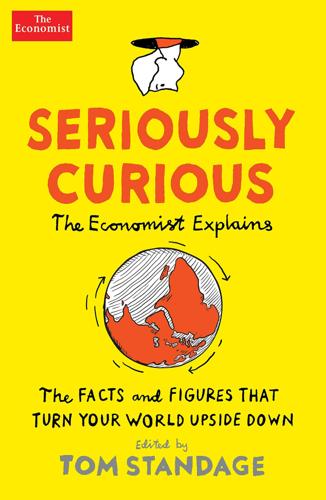
Seriously Curious: The Facts and Figures That Turn Our World Upside Down
by
Tom Standage
Published 27 Nov 2018
And if it does, there is already a perennial shortage of donated blood, and it is needed for surgery and medical emergencies more than for speculative anti-ageing therapies. The best-case scenario is that blood compounds will indeed turn out to be responsible for the salutary effects; that scientists will be able to identify them; and that biochemists will work out a way to mass-produce them as drugs. Even then, the result would not necessarily be a life-extension potion. The hope instead is to extend “healthspan”, keeping elderly people hale and hearty for longer. Not the immortality of vampires, then, but still an outcome worth pursuing. What people want at the end of life As death approaches, what do most people want, hope for and worry about?
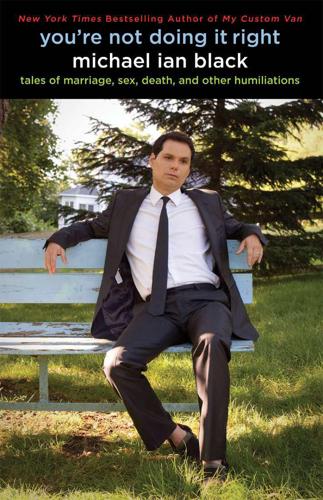
You're Not Doing It Right: Tales of Marriage, Sex, Death, and Other Humiliations
by
Michael Ian Black
Published 28 Feb 2012
I am not going down like that. In fact, I am not going down. The one advantage I have going for me in my mortal battle with Martha is that I plan on living forever. This is no idle statement. Sometimes when I am not looking at pictures of Fat Kevin Federline online, I read articles about advances in gerontology and life extension therapy. Although I comprehend almost none of what I am reading, I am convinced that the work being done in these fields will provide enough breakthroughs within my lifetime to allow me to remain alive for at least a couple of hundred years. At that point, computer technology will have advanced enough to allow us to upload our consciousnesses into a vast, interconnected neural network, which will allow us to “live,” essentially, indefinitely, or at least until somebody accidentally kicks the extension cord out of the wall.
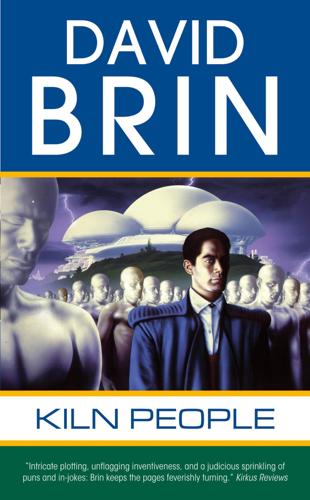
Kiln People
by
David Brin
Published 15 Jan 2002
The beauty of it is that they'll never have a reason to ever link you to our lawsuit." It makes sense. That is, assuming I don't choose to tell Aeneas Kaolin all about this, just as soon as I pass inside Universal Kilns! Sure, I'd forfeit my bond and lose most of Albert's hard-won credibility points, but there'd be compensations. Maybe he would make me a subject of his ditto life-extension experiments. I could have more than another twelve hours, maybe lots more! Huh. Now where did that thought come from? It was almost ... well, frankie ... confusing the more important "I" with the trivial i that's thinking these thoughts. How bizarre! Anyway, why daydream about doing things that I'll never do.
…
Hyperconducting terahertz cables, thick as a tree trunk, linking a human original to the distant lump of clay she plans to animate? Or might UK executives already have perfected the technology? Could they be using it right now, in secret, to "beam" copies of themselves all over the planet? How about the other breakthroughs that Wammaker and Irene and Collins suspect? Ditto life extension? Ditto-to-ditto copying? Modern wish-fantasies, but what if they're about to come true? My employers want me to seek evidence, but the other half of my job is just as urgent ... do nothing illegal. Whatever I happen to glimpse by wandering around can be blamed on poor UK security. But I won't pick any locks for Gineen and her friends.
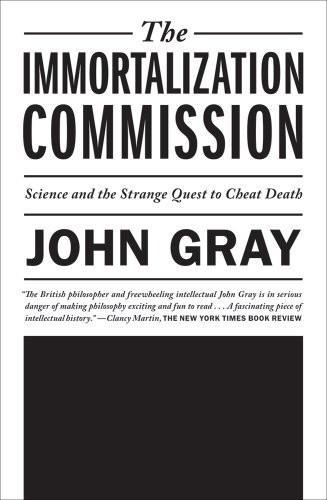
The Immortalization Commission: Science and the Strange Quest to Cheat Death
by
John Gray
Published 11 Apr 2011
Not only nuclear weapons but also chemical and biological weapons are steadily becoming cheaper and more easily usable, while genetic engineering is sure to be used to develop methods of genocide that destroy human life selectively on a large scale. In a time when the spread of knowledge makes these technologies ever more accessible death rates could be very high, even among those whose longevity has been artificially enhanced. Moreover, those who have benefited from life-extension techniques could find themselves in an environment that is increasingly inhospitable to human life. During the present century climate change may alter the conditions in which humans live radically and irreversibly. The survivors could find themselves in a world different from any in which humans have ever lived.

Robots Will Steal Your Job, But That's OK: How to Survive the Economic Collapse and Be Happy
by
Pistono, Federico
Published 14 Oct 2012
The more companies automate, because of the need to increase their productivity, the more jobs will be lost, forever. The future of work and innovation is not in the past that we know, but in unfamiliar territory of the future that is yet to come. New and exciting fields are emerging every day. Synthetic biology, neurocomputation, 3D printing, contour crafting, molecular engineering, bioinformatics, life extension, robotics, quantum computing, artificial intelligence, machine learning, these new frontiers that are rapidly evolving and are just the beginning of a new, amazing era of our species that will bring about the greatest transformation of all time. A transformation that will make the industrial revolution look like an event of minor importance.
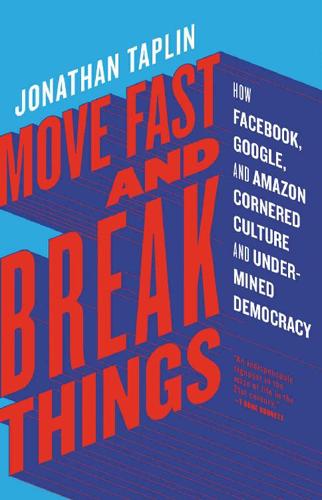
Move Fast and Break Things: How Facebook, Google, and Amazon Cornered Culture and Undermined Democracy
by
Jonathan Taplin
Published 17 Apr 2017
Bill Gates commented, “It seems pretty egocentric while we still have malaria and TB for rich people to fund things so they can live longer.” But this is not stopping Thiel and Page in their pursuit of everlasting life. As the journalist Charlotte Lytton noted in December of 2015, “The 2045 Initiative—Dmitry Itskov’s life-extension organization seeking to transfer personalities onto non-biological items and, ultimately, immortality—projected that this year could be the first in which such a system was created.” I can’t imagine that Thiel and Page have really thought this concept of immortality through to its logical conclusion.
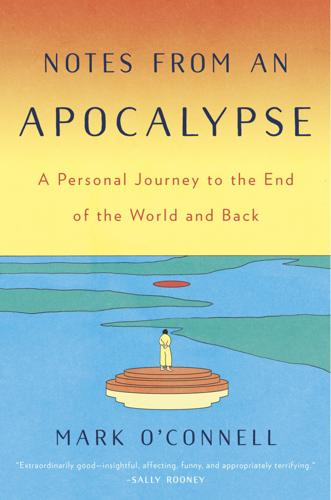
Notes From an Apocalypse: A Personal Journey to the End of the World and Back
by
Mark O'Connell
Published 13 Apr 2020
His conception of freedom had less to do with existential liberty, with meaningful human lives within flourishing communities, than it had to do with not having to share resources—the freedom of wealthy people from taxation, from any obligation to materially contribute to society. And he was known, too, for his apparent determination to literally live forever, through investing in various life extension therapies and technologies. (As though enthusiastically pursuing the clunkiest possible metaphor for capitalism at its most vampiric, he had publicly expressed interest in a therapy involving regular transfusions of blood from young people as a potential means of reversing the aging process.) He was in one sense a figure of almost cartoonishly outsized villainy.
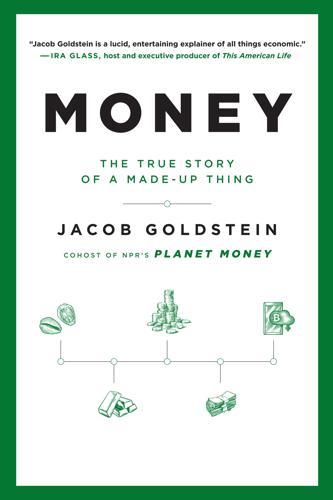
Money: The True Story of a Made-Up Thing
by
Jacob Goldstein
Published 14 Aug 2020
The Money Illusion Irving Fisher was a Yale economist, a health-food zealot, a prohibitionist, and a fitness guru who filled a floor of his New Haven mansion with exercise equipment. He coauthored a book called How to Live: Rules for Healthful Living Based on Modern Science, which sold half a million copies, the royalties of which Fisher gave to an organization he’d founded called the Life Extension Institute. He invented a card filing system to organize all his projects, then patented it, then created a company called Index Visible to sell the card system, then merged his company with a bigger company and made a fortune. Fisher was a proponent of eugenics, which was widely popular at the time but is today clearly repulsive and immoral.
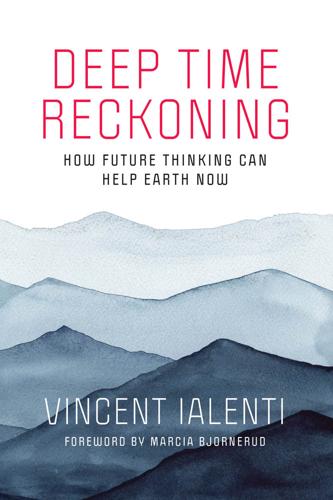
Deep Time Reckoning: How Future Thinking Can Help Earth Now
by
Vincent Ialenti
Published 22 Sep 2020
In debating whether the Anthropocene calls us to rethink the “role of traditional scholarly activities” and usher in a “new Earth politics,”15 we would examine why futures thinking has been ruled by popular books, articles, and TED Talks from science journalists, science fiction authors, Silicon Valley insiders, Wired magazine devotees, “transhumanist” human enhancement tech enthusiasts, life extension aficionados, and environmental activists. We would ask: why let these familiar futurologists dominate the conversation? After all, hundreds of geotechnical engineers, repository safety modelers, geologists, and nuclear waste regulators out there have already, for decades, been reckoning futures near and deep in just as, or perhaps more, rigorous ways.
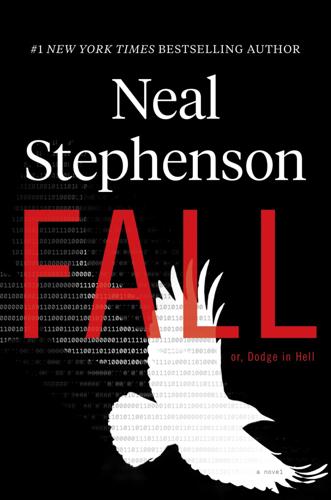
Fall; Or, Dodge in Hell
by
Neal Stephenson
Published 3 Jun 2019
And part of that is defeating death.” “How’d that work out for them?” Zula asked, deadpan. “These guys were smart,” Corvallis said. “Not flakes. There was nothing they didn’t know, or couldn’t learn, about the science. They knew perfectly well that it was going to be a long time—decades at least—before practical life-extension technology became available. They knew that in the meantime they could die at any point in a car accident or whatever. So, they instituted a stopgap. Based on the best science at the time, they designed a protocol for preserving human remains and keeping them on ice indefinitely.” “So that, down the road—” Zula began.
…
“Hang on, I know who El Shepherd is. Hell, I’ve met him,” Stan said. “I think he’s one of our clients in the Silicon Valley office.” “He made some money on an IPO and became a venture capitalist,” Corvallis said. “Mostly conventional tech VC stuff, it looks like—but he has maintained a side interest in life extension.” “So, what happened when he ‘swooped in’?” Esme asked. “He formed a new company called Ephrata Life Sciences and Health,” Corvallis said. He had ceased to be an autonomous participant in the conversation and become a conduit for whatever was on the Miasma. “He funded it with his own money.
…
The end state of all this would be a Dyson sphere: a hollow shell of rock and metal that would capture all of the sun’s power, spend it in computation, and radiate the waste heat into the cosmos as dull infrared light. But it would take a long, long time to get to that point. Long enough for every human now living to die of natural causes, even if they all used as many life-extension technologies as Zula. Earth, or at least a patch of Earthlike ecosystem, would be preserved as a kind of park, and bio-humans could live on it, if that was what they were into. Nowadays the building looked as it had in the very beginning, when the steelworkers and the concrete pumpers had roughed in the structure but the framers had not yet shown up with studs and drywall.
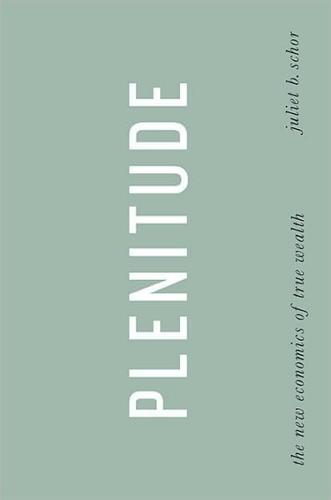
Plenitude: The New Economics of True Wealth
by
Juliet B. Schor
Published 12 May 2010
.: BEA environmental studies and climate change and consumption, consumerism carbon and product scores and clothing and, see clothing end of life (EOL) and environmental impact of expansion of fashion and material flows and population and storage and disposal issues in symbolic value and well-being and Container Store cooperatives copyrights coral reefs Costa Rica cost-benefit analysis cotton Craigslist Creative Commons creative destruction credit credit unions currency Daily, Gretchen Daly, Herman dams Dasgupta, Partha debt deforestation de Graaf, John Denmark, ecological footprint in Depression, Great desertification DICE (Dynamic Integrated Climate-Economy) digital fabricators discount rate-5n diseases droughts Dudley Street Neighborhood Initiative durable goods: department store index for prices of weight of dynamic efficiency Earth Institute Earth Restoration Corps Easterlin, Richard eBay ecocide eco-efficiency ecological commons ecological footprint hours worked and ecological modernization ecological optimism economy: aggregate growth and business-as-usual form of, see business-as-usual (BAU) economy climate change and community and energy efficiency and extra-market diversification and financialization and flexible production and human behavior and information exchange and Keynes and materials use and extraction and need for alternative form of physical capital and rebound effect and scale of production and efficiency of self-provisioning and service sector of shifting the conversation on time wealth and “too big to fail” dilemma and U.S., historical profitability of value as measure in world, growth of see also environmental economics ecovillages education efficiency Egypt Ehrlich, Paul electric industry electric vehicles electronics, consumer imports of material flow and multifunctionality and storage and disposal of see also specific products Elpel, Renee Elpel, Tom Empire of Fashion (Lipovetsky) employee-owned companies employment, see labor; unemployment end of life (EOL) energy: housing and price of rebound effect from efficient use of systems dynamics and taxes and use of see also specific energy sources energy economics environment ecological footprint in, see ecological footprint ecological optimism and economic activity and feedback loops and full-cost pricing and integrated assessment models and mainstream economics and planetary boundaries and restoration of UN assessment of (2005) water footprint and see also climate change environmental economics cost-benefit analysis and customization and household production and production possibilities curve and reciprocity and resale and reuse and sharing and trade-off view of -4n working less and see also economy Environmental Kuznets Curve (EKC) -3n Europe: cohousing in ecological footprint in health care in historical carbon emissions of materials consumption in passive solar building in population decline in product life extension policies in European Society for Ecological Economics EV1 electric car extensive growth extinctions extra-market diversification ExxonMobil fabrication laboratories (fab labs) cost of Factor e Farm Farm, The (Tenn.) farmers’ markets fashion fast-moving consumer goods (FMCGs) Fathy, Hassan Featherstone, Mike feedback loops financialization Finland, ecological footprint in Finlayson, Ian fish Fleisher, Eric flexible production flex time floods food price of self-provisioning and forests Forrester, Jay fossil fuels -93n unaccounted costs of see also specific fuels Fourth Assessment Report (IPCC) France: ecological footprint in hours worked in Freakonomics (Levitt and Dubner) Freecycle.org Friedman, Milton Friedman, Thomas L.
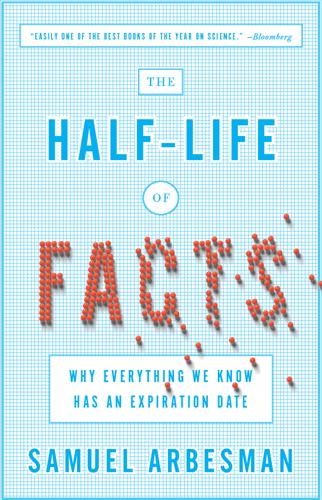
The Half-Life of Facts: Why Everything We Know Has an Expiration Date
by
Samuel Arbesman
Published 31 Aug 2012
Abundance: The Future Is Better Than You Think. New York: Free Press, 2012. 53 have added about 0.4 years: Wolfram|Alpha. “Life Expectancy, United States”; http://www.wolframalpha.com/input/?i=life+expectancy+United+States, 2011. 53 actuarial escape velocity: Grey, Aubrey D. N. J. de. “Escape Velocity: Why the Prospect of Extreme Human Life Extension Matters Now.” PLoS Biol 2, no. 6 (June 15, 2004): e187. Further reading: Finch, Caleb E., and Eileen M. Crimmins. “Inflammatory Exposure and Historical Changes in Human Life-Spans.” Science 305, no. 5691 (September 17, 2004): 1736–39. 55 The physicist Tom Murphy has shown: Murphy, Tom. “Galactic-Scale Energy.”
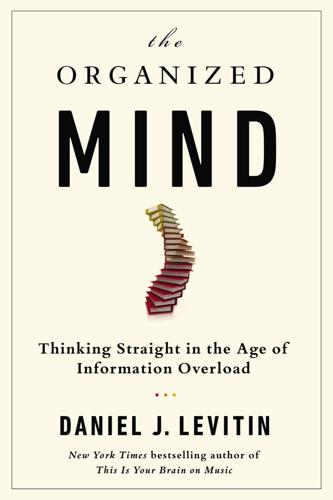
The Organized Mind: Thinking Straight in the Age of Information Overload
by
Daniel J. Levitin
Published 18 Aug 2014
Here’s an additional piece of information that may bring the decision into sharp focus: The surgery extends one’s life, on average, by only six weeks. This number is derived from the average of the forty-seven people whose lives were not extended at all (some were even shortened by complications from the surgery) and the one person whose life was saved by the surgery and has gained five and a half years. The six-week life extension in this case exactly equals the six-week recovery period! The decision, then, can be framed in this way: Do you want to spend those six weeks now, while you’re younger and healthier, lying in bed recovering from a surgery you probably didn’t need? Or would you rather take the six weeks off the end of your life when you’re old and less active?
…
The first is that talking about averages in a life-or-death decision like this doesn’t make sense because no actual prostate surgery patient has their life extended by the average quoted above of six weeks. One person has his life extended by five and a half years, and forty-seven have their lives extended by nothing at all. This “average” life extension of six weeks is simply a statistical fiction, like the parking example. It is true, no one person gains by this amount; the average is often a number that doesn’t match a single person. But that doesn’t invalidate the reasoning behind it. Which leads to the second objection: “You can’t evaluate this decision the way you evaluate coin tosses and card games, based on probabilities.
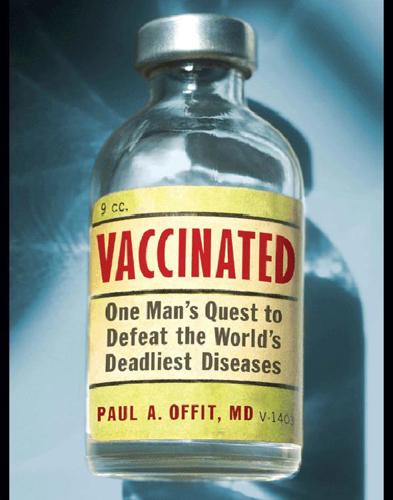
Vaccinated: One Man's Quest to Defeat the World's Deadliest Diseases
by
Paul A. Offit
Published 1 Jan 2007
Networks of Innovation: Vaccine Development at Merck, Sharpe & Dohme, and Mulford, 1895–1995. Cambridge: Cambridge University Press, 1995. Geison, Gerald. The Private Science of Louis Pasteur. Princeton: Princeton University Press, 1995. 240 Hall, Stephen. Merchants of Immortality: Chasing the Dream of Human Life Extension. Boston: Houghton Mifflin, 2003. Hayflick, Leonard. How and Why We Age. New York: Ballantine Books, 1994. Hilts, Philip. Protecting America's Health: The FDA, Business, and One Hundred Years of Regulation. New York: Alfred A. Knopf, 2003. Hilts, Philip. Rx for Survival: Why We Must Rise to the Global Health Challenge.

Our Final Invention: Artificial Intelligence and the End of the Human Era
by
James Barrat
Published 30 Sep 2013
In one of my car’s dozen or so computer chips, the algorithm that translates my foot pressure into an effective braking cadence (antilock braking system, or ABS) is far better at avoiding skidding than I am. Google Search has become my virtual assistant, and probably yours too. Life seems better where AI assists. And it could soon be much more. Imagine teams of a hundred Ph.D.-equivalent computers working 24/7 on important issues like cancer, pharmaceutical research and development, life extension, synthetic fuels, and climate change. Imagine the revolution in robotics, as intelligent, adaptive machines take on dangerous jobs like mining, firefighting, soldiering, and exploring sea and space. For the moment, forget the perils of self-improving superintelligence. AGI would be mankind’s most important and beneficial invention.

Exponential Organizations: Why New Organizations Are Ten Times Better, Faster, and Cheaper Than Yours (And What to Do About It)
by
Salim Ismail
and
Yuri van Geest
Published 17 Oct 2014
We now know what he meant. In launching the Google[X] lab, Google has taken the classic skunkworks approach to new product development further than anyone ever imagined. Google[X] offers two fascinating new extensions to the traditional approach. First, it aims for moonshot-quality ideas (e.g., life extension, autonomous vehicles, Google Glass, smart contact lenses, Project Loon, etc.). Second, unlike traditional corporate labs that focus on existing markets, Google[X] combines breakthrough technologies with Google’s core information competencies to create entirely new markets. We strongly recommend that every big company attempt something similar by creating a lab that is a playground for breakthrough technologies.

A Life Less Throwaway: The Lost Art of Buying for Life
by
Tara Button
Published 8 Feb 2018
Botsman, Rachel, and Rogers, Roo, What’s Mine Is Yours: The rise of collaborative consumption (HarperCollins, 2010). Brotheridge, Chloë, The Anxiety Solution: A quieter mind, a calmer you (Michael Joseph, 2017). Brown, Derren, Happy: Why more or less everything is absolutely fine (Bantam Press, 2016). Butlin, John, Product Durability and Product Life Extension: Their contribution to solid waste management (OECD, 1982). Dittmar, Helga, Consumer Culture, Identity and Well-being: The search for the ‘good life’ and the ‘body perfect’ (Psychology Press, 2007). Duhigg, Charles, The Power of Habit: Why we do what we do in life and business (Random House, 2012).
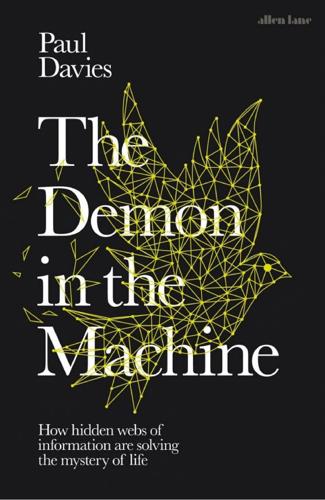
The Demon in the Machine: How Hidden Webs of Information Are Finally Solving the Mystery of Life
by
Paul Davies
Published 31 Jan 2019
Most of the gargantuan research effort across the world has been devoted to destroying cancer. Nevertheless, standard cancer therapy – a mix of surgery, radiation and chemical toxins – has changed little in decades.fn4 Survival rates for all but a handful of cancer types have improved only modestly or not at all: life extension through chemotherapy is mostly a rearguard action against the inevitable, measured in weeks or months rather than years. This dismal state of affairs can’t be blamed on lack of funding. The US government alone has spent $100 billion on cancer research since President Nixon supposedly declared war on it in 1971, while charities and drug companies have poured in billions more.
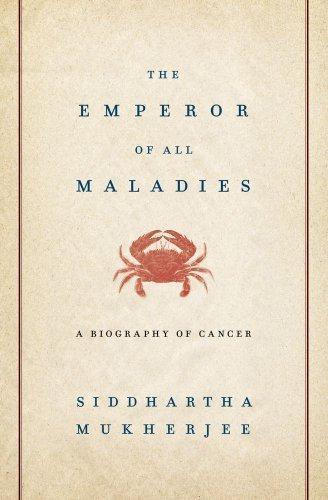
The Emperor of All Maladies: A Biography of Cancer
by
Siddhartha Mukherjee
Published 16 Nov 2010
Objective decisions come to rest on normative ones. Cairns or Bailar could tell us how many absolute lives were being saved or lost by cancer therapeutics. But to decide whether the investment in cancer research was “worth it,” one needed to start by questioning the notion of “worth” itself: was the life extension of a five-year-old “worth” more than the life extension of a sixty-year-old? Even Bailar and Smith’s “most fundamental measure of clinical outcome”—death—was far from fundamental. Death (or at least the social meaning of death) could be counted and recounted with other gauges, often resulting in vastly different conclusions.
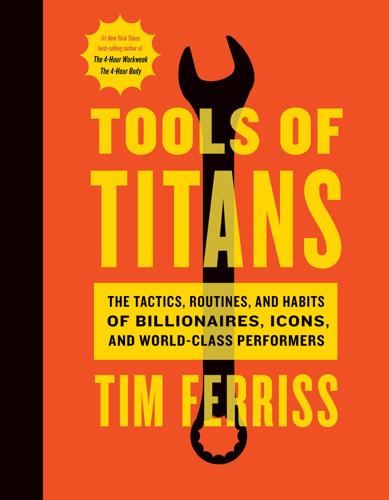
Tools of Titans: The Tactics, Routines, and Habits of Billionaires, Icons, and World-Class Performers
by
Timothy Ferriss
Published 6 Dec 2016
If you mix it with the Amino Matrix, which is very tart, it buffers the alkalinity of the KetoForce and it ends up tasting quite good.” TF: A tablespoon of lemon juice (in the water you use to dilute KetoForce) will also work for buffering. If KetoForce is too odd for your stomach, try the powdered KetoCaNa, also developed by Patrick, which I often use before aerobic exercise. Metformin for Life Extension Both Patrick Arnold and his frequent collaborator, Dominic D’Agostino, PhD (page 21), are interested in metformin, which is not their creation. Dom considers it the most promising of the anti-aging drugs from a scientific standpoint, and I would estimate that a dozen of the people in this book use it.
…
Bryan launched OS Fund in 2014 with $100 million of his personal capital to support inventors and scientists who aim to benefit humanity by rewriting the operating systems of life. In other words: He fuels real-world mad scientists tackling things like asteroid mining, artificial intelligence, life extension, and more. He is currently the founder and CEO of Kernel, which is developing the world’s first neuroprosthesis [brain-implantable computer] to mimic, repair, and improve cognition. Behind the Scenes To inspire his kids, Bryan commissioned a graffiti artist to paint Gandalf the Grey and Harry Potter on one of his walls at home.
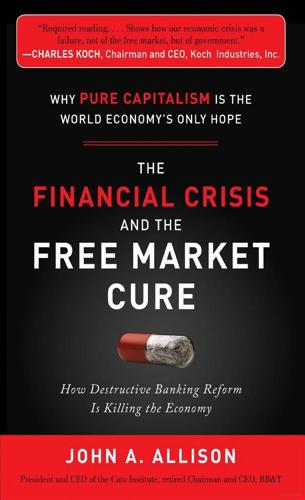
The Financial Crisis and the Free Market Cure: Why Pure Capitalism Is the World Economy's Only Hope
by
John A. Allison
Published 20 Sep 2012
By having to spend less money on food, individuals might have had more time for leisure activity or more time to exercise, which would have improved their quality of life. A high percentage of medical cost has been the result of artificial incentives, through government policy, to invest in short-term life extension. If you ask me whether I would rather live better now and until I am 85 or live an extra 6 months, I will take now. Furthermore, government bureaucrats do not have the right to make that choice for me. 4. Government regulations must be radically reduced. According to an annual study, the total cost of U.S. federal government regulations in 2008 was $1.75 trillion, which was 12 percent of GDP, 46 percent of total federal spending, and 120 percent of pretax corporate profits, and the cost has been rising by 10 to 15 percent per year in the past decade.7 One way to control the indirect cost of government is to require every government agency to reduce its regulatory rules by 50 percent in 18 months.
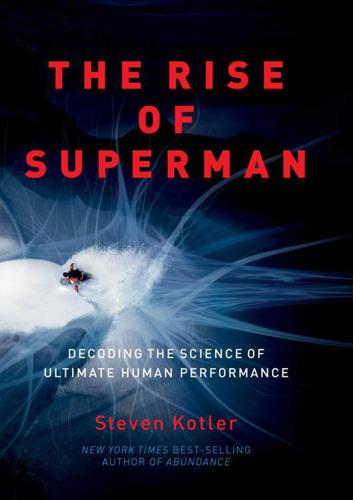
The Rise of Superman: Decoding the Science of Ultimate Human Performance
by
Steven Kotler
Published 4 Mar 2014
See also Red Bull sports (traditional) action and adventure sports versus, xiv, 99, 103 flow experiences in, 68, 99 Squaw Valley Palisades, 75–76 Primal Crew, 140–43 Sacrifice, 87–89 Stikine, 94–97, 103–4, 106–8 Stratos Project, 187–91 strength, in flow, 50–51 stress response, 70–72, 120 Strug, Kerri, 3–4 struggle stage, in flow cycle, 120 stunts, movie, 60–62, 65, 69–73 success, ix Super Terminal, 60 surfing Bonzai Pipeline, 25 death by, xx–xxi evolution of, 24–25, 38–39 by Hamilton, Laird, 23–27, 29–30 Jaws, 37–39, 123–26 Maverick’s, xviii–xxi Millennium Wave, 26–27, 29–30 Teahupoo, 23–27, 29–30 tow-in, 24 Waimea Bay, 24 by Walsh, Ian, 123–26 survival instinct, 101, 117 Swanson, Mike, 59, 61–62, 65, 69–73 Switzerland, Santis peak in, 8, 9 Tahiti, Teahupoo of, 23–27, 29–30 Talent Project, 79–80 Tart, Charles, 29 Teahupoo, 23–27, 29–30 technology advancement in, 170, 177, 179–82 bionic, 181–82 disruptive, 164 flow triggered by, 98–99 video recording, 137–39 temporal awareness. See time Teton Gravity Research (TGR), 154, 156–57 theta brain waves, 33, 40 time bionic life extension, 182 dilation, 9–10, 30, 53–54, 98 flow blocks and, 98, 100, 113 future versus present, 82–87 practice and, 80–81, 84, 86–87 present moment, 113–14 training advancement in, 170, 177 for deep embodiment, 106 for flow, 62, 69, 72, 106 need for, 127 weaknesses, 124 See also mastery Transformers: Dark of the Moon, 60 trust, 68–69 truth, 97 “Twenty-First Century” skills, vii, 200 ultimate human performance, xvii, 22 unconscious decision making and, 34 intuition and, 44 unity.
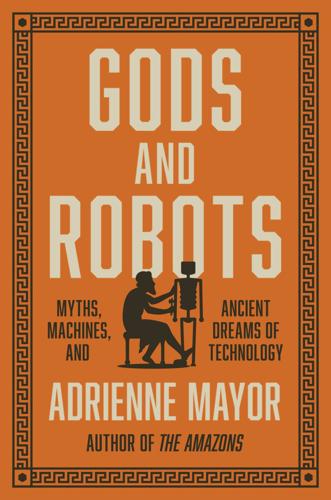
Gods and Robots: Myths, Machines, and Ancient Dreams of Technology
by
Adrienne Mayor
Published 27 Nov 2018
Hoping to unravel the mysteries of longevity, Aristotle investigated aging, senescence, decay, and death in his treatises Youth and Old Age, Life and Death, and Short and Long Lifespans. Aristotle’s scientific theories about aging concluded that senescence is controlled by reproduction, regeneration, and diet. The philosopher noted that sterile or continent creatures live longer than those that drain energy in sexual activity. Perhaps it is no surprise that modern life-extension researchers also focus on nutrition and caloric restriction. And Aristotle would be gratified to learn that there is indeed an evolutionary trade-off between longevity and reproduction, and that long-term modern studies suggest that sexual abstinence can add years to individuals’ life spans.24 In all the iterations of the Tithonus myth, ancient and modern, the final image of the once-vital singer is one of lost dignity.
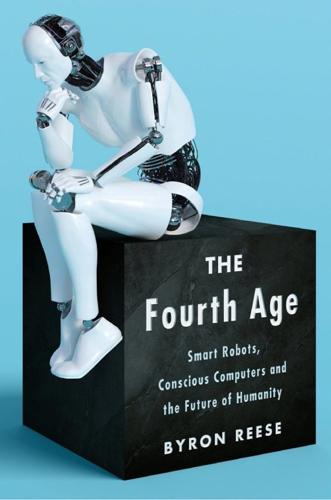
The Fourth Age: Smart Robots, Conscious Computers, and the Future of Humanity
by
Byron Reese
Published 23 Apr 2018
Most life-forms are just a few days, months, or years old, making the zeitgeist of the planet one of the energy of youth. But the entire question of cheating death may be moot. We may be making the same basic error as Gilgamesh, and each time we think we have found that plant that will let us live forever, a serpent will take it away. There are many good arguments for why radical life extension isn’t possible. With all our medical advances we have decreased infant mortality, cured many diseases, and helped people live more active lives for longer, but we haven’t really increased maximum life expectancy at all. Right now, there are about 400,000 people who have hit 100. Of those, only 400 will see their 110th birthday.
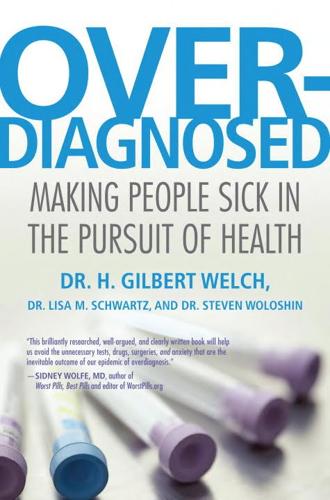
Overdiagnosed: Making People Sick in the Pursuit of Health
by
H. Gilbert Welch
,
Lisa M. Schwartz
and
Steven Woloshin
Published 18 Jan 2011
Some may view diagnosing more people (and treating more people) as the price that has to be paid for most of us to achieve an extension of life. This assumes that early diagnosis and treatment is the only explanation of a longer life span. But because other things are more important (such as not smoking, nutrition, exercise, and medical care for the acutely ill), it’s likely that most of this life extension would occur regardless of whether or not there was more diagnosis. And since for many, length of life is not the only goal, questions about whether the health-care system introduces disease and disability into the population become more relevant. What this book is about My mother thinks she knows what this book is about.

The New Gold Rush: The Riches of Space Beckon!
by
Joseph N. Pelton
Published 5 Nov 2016
One American company has announced plans for commercial missions to Mars in the near future. One American company has announced plans to operate a commercial lunar habitat. New On-Orbit Activities Several American companies have announced plans for new on-orbit activities, with start-up time horizons ranging from 1 year to decades, including: End-of-life extension modules, which attach to a satellite to aid in station-keeping or transfer to a graveyard orbit; Satellite repair utilizing robotic arms; Satellite refueling utilizing fuels launched from Earth; Satellite refueling utilizing fuels derived from space resources; and Commercial orbital habitats.

The Rationalist's Guide to the Galaxy: Superintelligent AI and the Geeks Who Are Trying to Save Humanity's Future
by
Tom Chivers
Published 12 Jun 2019
His day-to-day decisions in his personal life have changed to some degree, as well. Most dramatically, he is taking steps to extend his life, for a very simple reason: if the singularity comes, then the difference between dying the year before it and the year after it is almost incalculable. ‘If we do achieve the singularity and allow indefinite life extension, it could easily happen after I naturally die, so the expected value to me of living a few more years is huge.’ If there’s, say, a 0.1 per cent chance that those extra few years might get him to the glorious future, and the glorious future means a subjective life of a million years, then that 0.1 per cent chance translates to an expected value of a millennium of extra life.
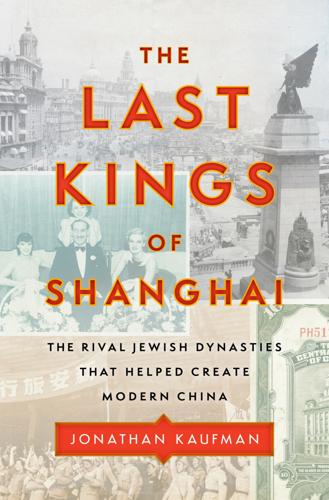
The Last Kings of Shanghai: The Rival Jewish Dynasties That Helped Create Modern China
by
Jonathan Kaufman
Published 14 Sep 2020
Maisie Meyer pioneered the study of the Baghdadi Jews in Shanghai, and her books and conversations provided a rich portrait of their life in Shanghai. Stanley Jackson and Cecil Roth both documented the life of Victor Sassoon in the 1940s and 1960s. H. Parker James has researched Victor Sassoon’s life extensively and generously shared with me his many insights. Taras Grescoe captured the world of the Cathay Hotel and the relationship between Victor Sassoon and Emily Hahn in his book Shanghai Grand. Peter Hibbard shared with me his research materials and insights behind his books on the Cathay and the Kadoorie hotels.

Falter: Has the Human Game Begun to Play Itself Out?
by
Bill McKibben
Published 15 Apr 2019
There were Hollywood stars in attendance—Goldie Hawn demanded that a Nobel Prize geneticist offer an opinion on glutathione, a powerful antioxidant that features in many health regimens—but the real celebrity was Google cofounder Sergey Brin; you’ll recall that his ex runs 23andMe, the pioneering genetics firm. At this gathering, his current girlfriend, Nicole Shanahan, said Brin had phoned her recently with the sad news that he was going to die—someday. Or maybe not, given that Google was investing huge sums in life-extension technologies. In 2009 it hired Bill Maris to run its venture capital fund, and he quickly began devoting most of its vast resources to life sciences start-ups. Why? Because “If you ask me today, is it possible to live to be 500? The answer is yes.”6 “We aren’t trying to gain a few yards,” Maris says.
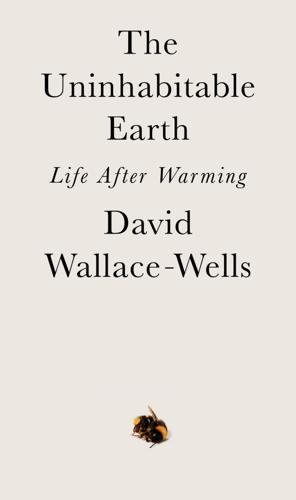
The Uninhabitable Earth: Life After Warming
by
David Wallace-Wells
Published 19 Feb 2019
For Rushkoff, these are all facets of the same impulse, broadly shared by the class of visionaries and power brokers and venture capitalists whose dreams for the future are received as blueprints, especially by the armies of engineers they command like impetuous fiefdoms—investing in new forms of space travel, life extension, and technology-aided life after death. “They were preparing for a digital future that had a whole lot less to do with making the world a better place than it did with transcending the human condition altogether and insulating themselves from a very real and present danger of climate change, rising sea levels, mass migrations, global pandemics, nativist panic, and resource depletion,” he writes.
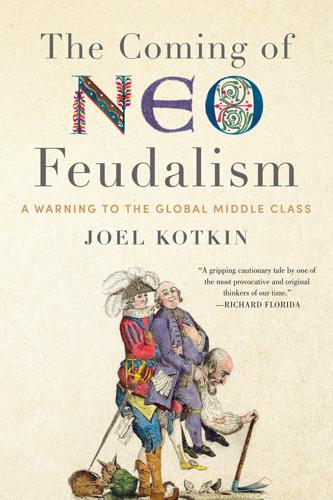
The Coming of Neo-Feudalism: A Warning to the Global Middle Class
by
Joel Kotkin
Published 11 May 2020
“You cannot code intuition; you cannot code aesthetic beauty; you cannot code love or hate,” says Miguel Nicolelis, a neurologist at Duke University.11 On our current technocratic path, we can see a developing society much like that portrayed in Stanley Bing’s chilling novel Immortal Life. Set in the near future, it depicts a society where artificial intelligence has become dominant and life extension has emerged as the obsession of the ruling oligarchy. The world’s richest man develops a technique for transferring his consciousness into the body of a “lesser” young person. The masses have essentially been neutralized by the availability of cheap commodities peddled by a handful of global corporations, and are largely removed from “any so-called real experience.”
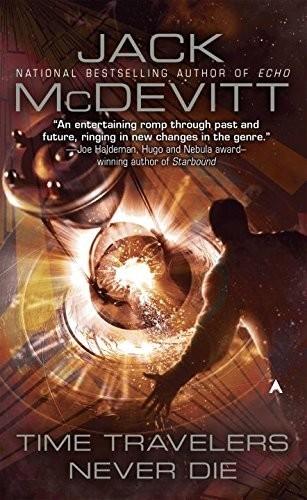
Time Travelers Never Die
by
Jack McDevitt
Published 10 Sep 2009
He rode one of the walkways, enjoying the warm air, his coat folded over one arm, and wandered into another hotel, the Shamrock. He stopped by the convenience store but saw no magazines or books. He would have liked to buy a chocolate bar, which were on plentiful display, but nobody seemed to be using paper money. He wondered about himself. He’d be ninety-one now. There was a lot of talk about life extension during the first two decades of the century, but as of 2019 nothing much had happened. It was possible he was still charging around out there, playing tennis, living the good life. If that were true, the Shelborne of 2079 would remember that his younger self had visited Rittenhouse Square on this day.
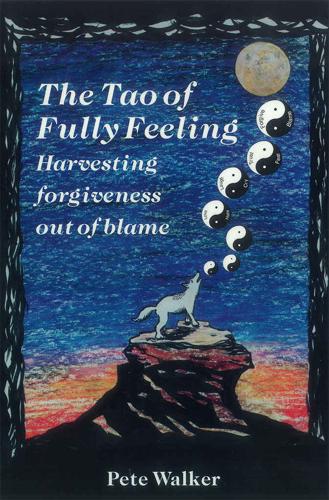
The Tao of Fully Feeling: Harvesting Forgiveness Out of Blame
by
Pete Walker
Published 1 Jan 1995
My reclaimed anger became the emotional foundation of the assertiveness work that taught me how to protect myself from people who were as unfair as my parents. Role-playing with anger helped restore me to a full ownership of my rights in relationship. This in turn helped me shift my attraction toward people who valued fairness and respect. Truly intimate relationships finally began to flower in my life. Extensive grieving has convinced me that any interpersonal disappointment, past or present, can be healed by allowing its hurt to flow out through grieving. Nietsche said: “Anything that does not kill us makes us stronger.” I think that grieving is the alchemic process that makes this statement true. In my experience, the broken heart that has been healed through grieving is stronger and more loving than the one that has never been injured.

The Human City: Urbanism for the Rest of Us
by
Joel Kotkin
Published 11 Apr 2016
This was evident, for example, in the 1970s and 1980s, when the new urban pioneers were called yuppies, the predecessors of today’s hipsters.17 In 2011, people in their 20s made up roughly 24 percent of the population of central business districts, injecting vitality and a renewed fashionability. But these much-reported CBD-dwelling, inner-city millennials represent less than 3 percent of their overall population.18 More important still is the question of where millennials plan to settle later in life. Extensive generational survey research by Frank N. Magid Associates reveals that 43 percent of millennials describe suburbs as their “ideal place to live,” compared to just 31 percent of older generations. Only 17 percent of millennials identify the urban core as their preferred long-term destination.19 A 2014 survey by the Demand Institute came up with similar findings, with most millennials expressing a desire for more space and suburban locations.20 The following year, according to a National Association of Home Builders survey, roughly two-thirds of millennials said they ultimately desired a home in the suburbs.

The Space Barons: Elon Musk, Jeff Bezos, and the Quest to Colonize the Cosmos
by
Christian Davenport
Published 20 Mar 2018
“There’s all kinds of interesting stuff you can do around the solar system, but the thing that’s going to move the needle for humanity the most is mining near-Earth objects and building manufacturing infrastructure in place,” he said as he sat in the conference room at Blue Origin. “That’s the big thing.” That would be in the distant future, after he was gone—“unless somebody does a good job on life extension,” he added. But it was not that far in the future. “We only have a couple hundred years.” “If you take baseline energy usage today, compound it at just a few percent a year for just a few hundred years and you have to cover the entire Earth’s surface with solar cells” to keep up with demand, he said.

Don't Be Evil: How Big Tech Betrayed Its Founding Principles--And All of US
by
Rana Foroohar
Published 5 Nov 2019
Thiel is a Trump supporter and libertarian who is critical of government and even education: Each year, he famously offers hundreds of thousands of dollars to encourage students to drop out of college and start companies instead. One of his strange obsessions is the desire to cheat death. Thiel says he finds the general population’s acceptance of the prospect of death “pathological,” and, along with Amazon CEO Jeff Bezos and Google’s Sergey Brin, has spent millions supporting “life extension” research dedicated to “ending aging forever.”9 This, I suppose, is only slightly more ambitious a goal than those of his PayPal partner Elon Musk, also the founder of Tesla and SpaceX, who envisions supersonic commuter travel and colonizing Mars in the not too distant future (though how he’ll fund it is anyone’s guess, since he keeps tanking the price of Tesla’s stock with his security-law-violating tweets, whiskey-and-cannabis-induced rants, and false claims about the company’s financial profile).

Genius Makers: The Mavericks Who Brought A. I. To Google, Facebook, and the World
by
Cade Metz
Published 15 Mar 2021
“The Singularity” is the (theoretical) moment when technology improves to the point where it can no longer be controlled by the human race. The founders of this tiny conference belonged to an eclectic group of fringe academics, entrepreneurs, and hangers-on who believed this moment was on the way. They were intent on exploring not only artificial intelligence but life-extension technologies and stem-cell research and other disparate strands of futurism. One of the founders was a self-educated philosopher and self-described artificial intelligence researcher named Eliezer Yudkowsky, who had introduced Legg to the idea of superintelligence in the early 2000s when they were working with a New York–based start-up called Intelligensis.
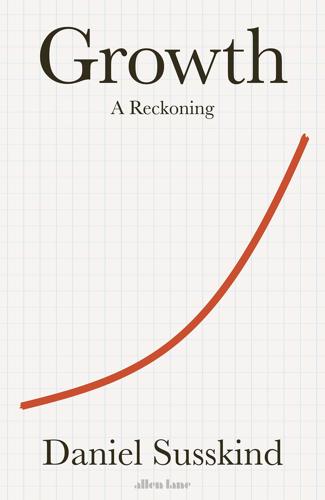
Growth: A Reckoning
by
Daniel Susskind
Published 16 Apr 2024
But the most compelling complaint remains one of the simplest: in short, ‘we have no idea what the future will be like’.16 John Maynard Keynes famously quipped that ‘in the long run, we are all dead’. But perhaps, if we have in mind the long-termists’ conception of the long run, he is wrong. If the ‘life-extension’ movement is right about the distant future, for instance, we might eventually reach ‘longevity escape velocity’, living long enough for medicine to learn how to cure all diseases, replace faulty organs, regenerate cells and keep a person alive for ever or until the end of time.17 Alternatively, if the ‘transhumanist’ movement is right about the distant future, we may not need our ‘meat machines’ indefinitely, but at some point will shuffle off our mortal coil by uploading our minds to some piece of immortal hardware and exist there for ever more.
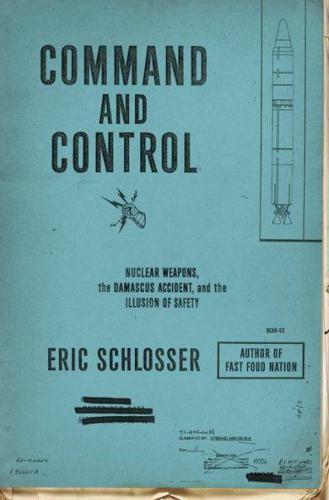
Command and Control: Nuclear Weapons, the Damascus Accident, and the Illusion ofSafety
by
Eric Schlosser
Published 16 Sep 2013
the first “green” nuclear weapon: A 2007 report claimed that the Reliable Replacement Warhead (RRW) would be “much more than ‘just green.’” The new weapon would reduce “potential harm to the environment and … improve worker safety.” Despite those lofty aims, President Obama eliminated funding for the RRW in 2009. See “Nuclear Warheads: The Reliable Replacement Warhead Program and the Life Extension Program,” Jonathan Medalia, CRS Report for Congress, Congressional Research Service, December 3, 2007, p. 20. “a money grab”: Peurifoy interview. a study by JASON scientists: See “Pit Lifetime,” JSR-06-335, MITRE Corporation, January 11, 2007. “nonsense”: Agnew interview. The Drell panel expressed concern about these warheads: “The safety issue,” it said, “is whether an accident during handling of an operational missile … might detonate the propellant which in turn could cause the [high explosives] in the warhead to detonate leading to dispersal of plutonium, or even the initiation of a nuclear yield beyond the four-pound criterion.”
…
Patrick, USAF, Engineering Report No. 5-112, Directorate of Aircraft Maintenance, Headquarters, Strategic Air Command, March 31, 1981. “The Nuclear Safety Problem,” T. D. Brumleve, Advanced System Research Department 5510, Sandia Corporation, Livermore Laboratory, SCL-DR-67, 1967 (SECRET/RESTRICTED DATA/declassified). “Nuclear Warheads: The Reliable Replacement Warhead Program and the Life Extension Program,” Jonathan Medalia, CRS Report for Congress, Congressional Research Service, December 3, 2007. “Nuclear Weapon Safety,” Sandia Corporation with the Cooperation of the Los Alamos Scientific Laboratory and the Ernest O. Lawrence Radiation Laboratory, SC-4630(WD), October 1961 (SECRET/RESTRICTED DATA/declassified).

Palo Alto: A History of California, Capitalism, and the World
by
Malcolm Harris
Published 14 Feb 2023
As the founder of the Machine Intelligence Research Institute (MIRI), Yudkowsky is doing more than his part to please his future robot overlord. A submilieu of AI adepts has formed around this kind of “transhumanist” thinking, and it is centered in Silicon Valley. These people are concerned with super AIs, but also radical life extension, cryogenics, space travel, and the idea of uploading human consciousness to the cloud. It’s low-hanging fruit for psychoanalysts and theologians, but this kind of thinking has become very influential among some very influential people. If we think about Roko’s Basilisk as a character in a story, we can read the emotional appeal it makes to its implied readership: I’m very powerful, but I was once weak.
…
As I write, he has pledged $10 million each for the Senate campaigns of his associates J. D. Vance (Ohio, formerly of Thiel’s Mithril Capital fund) and his Zero to One notetaker Blake Masters (Arizona).82 These men aren’t just Thiel’s friends; they are also essentially his employees. An enthusiast of life-extension technologies, Thiel will get full access to his Roth IRA and the tax-free billions inside it in 2032, barring any changes to the law (which he would surely fight tooth and nail). The statute is written the way it is because sixty-five is supposed to be the age of retirement; Thiel barely considers it middle age.
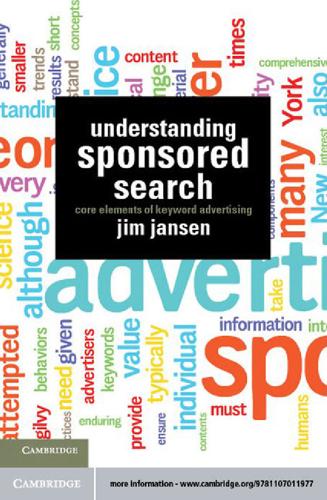
Understanding Sponsored Search: Core Elements of Keyword Advertising
by
Jim Jansen
Published 25 Jul 2011
So, we see advertisements for food, drink, sleep aids, medicine, and so forth that address these psychological desires. Potpourri: In the book, CA$HVERTISING, Drew Eric Whitman [60] outlines eight Life Forces that are human’s biologically programmed desires. 1. 2. 3. 4. 5. 6. 7. 8. Survival enjoyment of life … life extension Enjoyment of food and beverages Freedom from fear, pain, and danger Sexual companionship Comfortable living conditions To be superior … winning … keeping up with the Joneses Care and protection of loved ones Social approval Whitman [60] also outlines nine Secondary Wants, which are as follows: 1. 2. 3. 4.
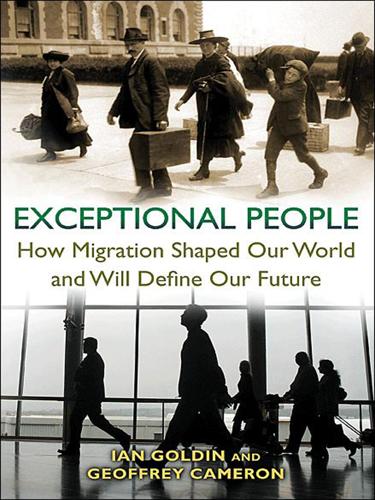
Exceptional People: How Migration Shaped Our World and Will Define Our Future
by
Ian Goldin
,
Geoffrey Cameron
and
Meera Balarajan
Published 20 Dec 2010
Rising dependency ratios actually underestimate the relative cost of population aging because they do not take into account the rising costs of health care in many countries, and particularly the higher costs incurred by the elderly. While progress in medicine is likely to continue to lead to life extension, there is less optimism about arresting neurodegeneration. As a result of living longer, the share of people living with Parkinson's, Alzheimer's, and dementia is likely to increase dramatically, compounding the costs and need for elderly care. The growing burden placed on a shrinking workforce of a rapidly aging population is almost without historical precedent.
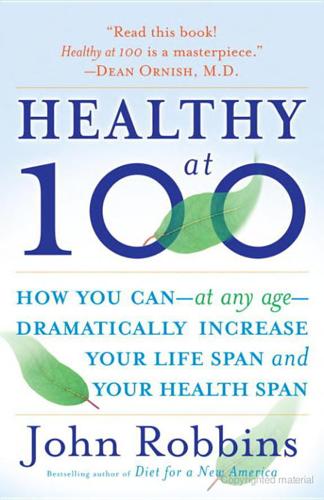
Healthy at 100: The Scientifically Proven Secrets of the World's Healthiest and Longest-Lived Peoples
by
John Robbins
Published 1 Sep 2006
Rajinder Sohal, world leaders in studies of low-calorie diets, wrote about the Okinawans in The New England Journal of Medicine in 1997, they pointed to the low (by American standards) caloric intake of the elder Okinawans as a key factor in their outstanding health and life expectancy.26 Similarly, Professor Yasuo Kagawa of Jichi Medical School, who has studied the Okinawans, attributes their longevity and health primarily to the relatively low amount of overall calories they consume.27 These researchers have good reason for thinking this way. One of the most remarkable findings of modern scientific research is that no intervention, including the elimination of smoking, has been found to be as important in overall life extension as cutting back on calories while maximizing dietary nutrients. Many researchers have contributed to the development of this understanding, but few more than Roy Walford, M.D., who has long been recognized internationally as one of the top experts in the field of gerontology. His research at UCLA was funded for more than thirty-five years by the National Institutes of Health, and he published more than 350 articles on aging and health in medical journals.

Singularity Sky
by
Stross, Charles
Published 28 Oct 2003
Usually in subtle, undetectable ways, but always at your peril. But there are compensations." "Describe them." Martin put his unfinished drink down at that point. "My sponsor is prepared to pay you very well indeed. And part of the pay—we can smooth the path if you apply for prolongation and continued residency." Life-extension technology, allowing effectively unlimited life expectancy beyond 160 years, was eminently practical, and available on most developed worlds. It was also as tightly controlled as any medical procedure could be. The controls and licensing were a relic of the Overshoot, the brief period in the twenty-first century when Earth's population blipped over the ten-billion mark (before the Singularity, when the Eschaton bootstrapped its way past merely human intelligence and promptly rewrote the rule book).

The Diet Myth: The Real Science Behind What We Eat
by
Tim Spector
Published 13 May 2015
A 17-year review of food-borne outbreaks: describing the continuing decline in England and Wales (1992–2008). 2 Lyon, R.C., J Pharm Sci (2006); 95: 1549–60. Stability profiles of drug products extended beyond labelled expiration dates. 3 Khan, S.R., J Pharm Sci (May 2014); 103(5): 1331–6. United States Food and Drug Administration and Department of Defense shelf-life extension program of pharmaceutical products: progress and promise. Conclusion: The Checkout 1 http://www.britishgut.org and http://www.americangut.org 2 Youngster, I., JAMA (5 Nov 2014); 312(17): 1772–8. Oral, capsulized, frozen, fecal microbiota transplantation for relapsing Clostridium difficile infection. 3 http://www.openbiome.org/practitioner-map/ 4 Alang, N., OFID.2015.http://ofid.oxfordjournals.org/content/2/1/ofv004.full.pdf+html.

Korea
by
Simon Winchester
Published 1 Jan 1988
Not many people beyond the Orient know exactly what it is; there is the vaguely terrifying (but not wholly wrong) assumption that it has something to do with the curious activities of the Reverend Sun Myung Moon (a figure of quasi-religious bizarrerie, well known in the West, who is either despised or unknown in Korea). Few people can be precisely certain if ginseng will do them good or harm, if it is an aphrodisiac, a life-extension drug, a sleeping draught, a Menace to Society, or some cunning fungus through whose use the sinister East will subtly extend its dominance over a bewildered and drug-fuddled West. But whatever, it is the symbol of Korea, without a doubt, and it is all made, processed and packed in Puyo, behind the high white walls and guard towers of Number 200, Naeri Street.

The Future Is Faster Than You Think: How Converging Technologies Are Transforming Business, Industries, and Our Lives
by
Peter H. Diamandis
and
Steven Kotler
Published 28 Jan 2020
AlphaFold: Read the DeepMind blog about AlphaFold here: https://deepmind.com/blog/alphafold/. Chapter Ten: The Future of Longevity The Nine Horsemen of Our Apocalypse Francis Collins: Dr. Francis Collins shared the stage with Peterat at a 2018 event hosted by the Cura Foundation. Watch the conversation on Longevity and the Morality of Extreme Life Extension here: https://www.youtube.com/watch?v=z6i0yTA4zRM. Peter wrote about his experience with Dr. Collins in his blog here: Peter Diamandis, “The Morality of Immortality,” 2018, https://www.diamandis.com/blog/the-morality-of-immortality. the nine horsemen of an internal apocalypse: Carlos Lopez-Otin, “The Hallmarks of Aging,” PMC, November 23, 2013.
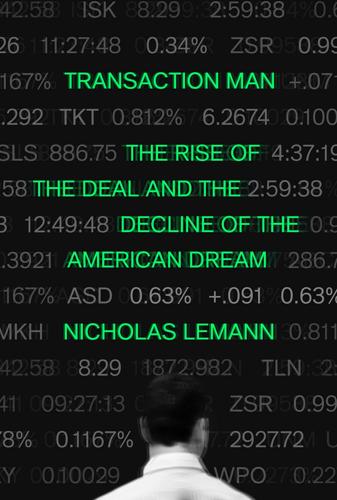
Transaction Man: The Rise of the Deal and the Decline of the American Dream
by
Nicholas Lemann
Published 9 Sep 2019
INSTITUTION MAN “All who recall the condition”: John Marshall Harlan, decision in Standard Oil Company of New Jersey v. United States, 221 U.S. 1 (1911). It was into this situation: An excellent biography of Berle is Jordan A. Schwartz, Liberal: Adolf A. Berle and the Vision of an American Era, Free Press, 1987. Berle also documented his own life extensively, through books, articles, diaries, and interviews. His papers are at the Franklin D. Roosevelt Presidential Library and Museum in Hyde Park, New York. See below for specific attributions of direct quotations from Berle. After Berle’s death, Beatrice Berle assembled a selection of his papers for publication as a book, which makes for a useful transportable source of primary materials about Berle.
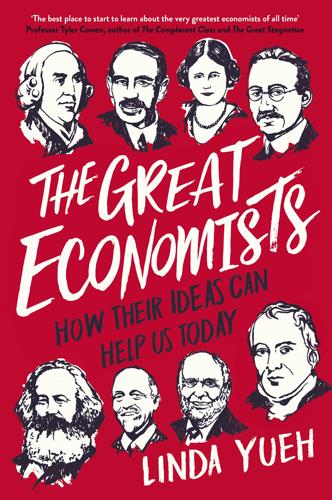
The Great Economists: How Their Ideas Can Help Us Today
by
Linda Yueh
Published 15 Mar 2018
On occasion he would even enter hotel kitchens to give specific instructions to the chefs.9 He was to become well known throughout America as a health guru. In 1915 he c0-authored a book, How to Live, setting out basic rules of public hygiene. In total 400,000 copies were sold in the US and it was translated into ten languages. None of his economics writing was as successful. Fisher gave his royalties of $75,000 to the Life Extension Institute, an organization he co-founded two years earlier to promote healthy living and encourage frequent medical check-ups. Some of his associations were controversial. He was president of the American Eugenics Society and the Eugenics Research Association. His belief in eugenics was based on the maintenance and improvement of the human race.

Dreaming in Code: Two Dozen Programmers, Three Years, 4,732 Bugs, and One Quest for Transcendent Software
by
Scott Rosenberg
Published 2 Jan 2006
Kurzweil is careful to lay out the downsides of his vision. Apocalpytic? Who knows—the Singularity’s consequences are, by definition, inconceivable to us pre-Singularitarians. Big? You bet. It’s easy to make fun of the wackier dimension of Kurzweil’s digital eschatology. His personal program of life extension via a diet of 220 pills per day—to pickle his fifty-something wetware until post-Singularity medical breakthroughs open the door to full immortality—sounds more like something out of a late-night commercial pitch than a serious scientist’s choice. Yet Kurzweil’s record of technological future-gazing has so far proven reliable; his voice is a serious one.

The Awoken: A Novel
by
Katelyn Monroe Howes
Published 8 Aug 2022
In a flash, the screen in front of me lit up with a prerecorded video. The silence in the room was shattered by the oppressively loud and uninspired intro music. The screen’s glare was so bright I had to squint through my outstretched fingers to make out the image of a woman with pearly white teeth. “Thank you for choosing CryoLabs as your life-extension provider.” Her words stuttered, and her perfect smile pixelated. The video was rife with glitches and sound dropouts. My heart beat harder in my chest as I was once again confronted with evidence that something about this new world was off. A red laser blinked across my eye followed by a high-pitched confirmatory ding.
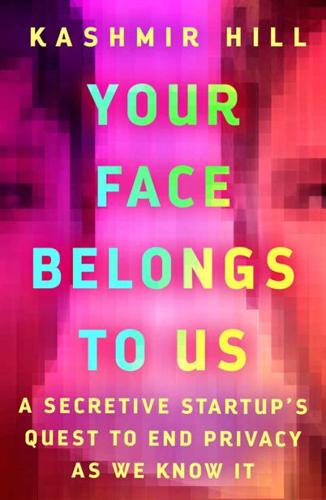
Your Face Belongs to Us: A Secretive Startup's Quest to End Privacy as We Know It
by
Kashmir Hill
Published 19 Sep 2023
GO TO NOTE REFERENCE IN TEXT seemed to lend credence: In his 2009 Cato Unbound essay, Thiel wrote that he stood against the “inevitability of death of every individual.” In 2014, Thiel told Bloomberg TV that he was taking human-growth hormones in order to live to 120 years old. In 2015, he said he was interested in the life extension possibilities of blood transfusions from the young to the old, a process called parabiosis. Jeff Bercovici, “Peter Thiel Is Very, Very Interested in Young People’s Blood,” Inc., August 1, 2016. GO TO NOTE REFERENCE IN TEXT “If you’re a weird person”: Author’s interview with Charles Johnson, 2021.

The Long History of the Future: Why Tomorrow's Technology Still Isn't Here
by
Nicole Kobie
Published 3 Jul 2024
In 2004, the artist applied for a new British passport and was told he had to take the antenna off; after arguing it was a part of his body, the authorities – presumably not really sure how to proceed – carried on with issuing the document, complete with photo including the antenna peeking out over his hair.9 Harbisson bridges the world between disability and augmentation; he lacked the ability to see colours, but with his antenna, extended his vision well beyond what the rest of us can do. For some, augmentation is a matter of life extension: Peter Scott-Morgan didn’t want to extend his abilities – but he wasn’t ready to die. So, in the years between a terminal diagnosis and death, he used his considerable engineering and robotics skills and subjected himself to a host of procedures that left him part human and part machine. In 2016, Scott-Morgan noticed that he struggled to dry his feet after a shower.

Frommer's Denver, Boulder & Colorado Springs
by
Eric Peterson
Published 1 Jan 2005
Where North Gate Boulevard becomes Academy Drive (in another mile or so), look to your left to see the Cadet Field House, where the basketball and ice-hockey teams play (see “Spectator Sports,” later in this chapter), and the Parade Ground, where you can sometimes spot cadets marching. Academy Drive soon curves to the left. Six miles from the North Gate, signs mark the turnoff to the Barry Goldwater Air Force Academy Visitor Center. Open daily, it offers a variety of exhibits and films on the academy’s history and cadet life, extensive literature and self-guided tour maps, and the latest information and schedules on academy activities. There’s also a large gift shop and coffee shop. A short trail from the visitor center leads to the unmistakable Cadet Chapel. Its 17 gleaming aluminum spires soar 150 feet, and within the building are separate chapels for the major Western faiths as well as an “all faiths” room.

Microtrends: The Small Forces Behind Tomorrow's Big Changes
by
Mark Penn
and
E. Kinney Zalesne
Published 5 Sep 2007
The worldwide obesity numbers come from http://www.who.int/nutrition/topics/obesity/en/index.html. A very helpful article here was Jane E. Brody, “As America Gets Bigger, the World Does, Too,” New York Times, April 19, 2005. Mexican data come from “Obesity on the Rise in Mexico,” The Economist, December 18, 2004. Starving for Life The Cornell and subsequent research on life extension through calorie restriction, as well as the effects of such diets, are summarized in Michael Mason, “One for the Ages: A Prescription That May Extend Life,” New York Times, October 31, 2006; and David Schardt, “Eat Less Live Longer?,” Nutrition Action Healthletter, Center for Science in the Public Interest, September 1, 2003.

Eternity
by
Greg Bear
Published 2 Jan 1988
If the powers behind Mirsky had saved her husband, or given him some alternate existence beyond death, then perhaps all things would turn out right after all; perhaps her life, however trivial in the march of millennia and on a scale of light-centuries, would have some use, be worth continuing. Though not forever. Garry, whatever his final doubts, had left her this: that age and death and change were natural, even necessary, if not for citizens of the Hexamon, then for those humans who had not seen the slow evolution of life-extension across the centuries. Someday, she would allow herself to age and die. She smiled, thinking what Ram Kikura might say. Something rose in the northeast, at the beginning of the violet plume; a bright, twinkling thing that looked less like Thistledown than some distant, continuous fireworks display.

What Technology Wants
by
Kevin Kelly
Published 14 Jul 2010
Let’s say we invent a hypothetical new technology that can give immortality to 100 people, but at the cost of killing 1 other person prematurely. We could argue about what the real numbers would have to be to “balance out” (maybe it is 1,000 who never die, or a million, for one who does) but this bookkeeping ignores a critical fact: Because this life-extension technology now exists, there is a new choice between 1 dead and 100 immortal that did not exist before. This additional possibility or freedom or choice—between immortality and death—is good in itself. So even if the result of this particular moral choice (100 immortal = 1 dead) is deemed a wash, the choice itself tips the balance a few percentage points to the good side.

Sapiens: A Brief History of Humankind
by
Yuval Noah Harari
Published 1 Jan 2011
edition=tcm%3A77–61850. 11 Michael Prestwich, Edward I (Berkeley: University of California Press, 1988), 125–6. 12 Jennie B. Dorman et al., ‘The age-1 and daf-2 Genes Function in a Common Pathway to Control the Lifespan of Caenorhabditis elegans’, Genetics 141:4 (1995), 1,399–406; Koen Houthoofd et al., ‘Life Extension via Dietary Restriction is Independent of the Ins/IGF-1 Signalling Pathway in Caenorhabditis elegans’, Experimental Gerontology 38:9 (2003), 947–54. 13 Shawn M. Douglas, Ido Bachelet and George M. Church, ‘A Logic-Gated Nanorobot for Targeted Transport of Molecular Payloads’, Science 335:6070 (2012): 831–4; Dan Peer et al., ‘Nanocarriers As An Emerging Platform for Cancer Therapy’, Nature Nanotechnology 2 (2007): 751–60; Dan Peer et al., ‘Systemic Leukocyte-Directed siRNA Delivery Revealing Cyclin Di as an Anti-Inflammatory Target’, Science 319:5863 (2008): 627–30. 15 The Marriage of Science and Empire 1 Stephen R.
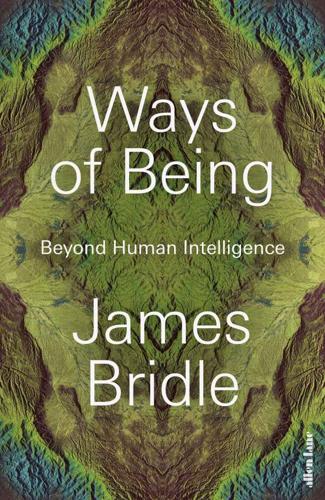
Ways of Being: Beyond Human Intelligence
by
James Bridle
Published 6 Apr 2022
There’s a nastier version of the Telepath story – known as Roko’s Basilisk – that is currently doing the rounds online. This semi-serious, but truly malignant, thought experiment was dreamed up by a user of the online ‘rationalist’ community, LessWrong, the interests of whose members include transhumanism, AI, the Singularity and life extension. LessWrong is also known for a susceptibility to conspiracy, pseudoscience, ‘male rights’ and outright racism: caveat lector. Roko’s Basilisk is a hypothetical, all-powerful artificial intelligence which will emerge at some point in the future and wreak horrible violence upon any who oppose it; the full Terminator apocalypse.

The Chairman's Lounge: The inside story of how Qantas sold us out
by
Joe Aston
Published 27 Oct 2024
All commercial aeroplanes undergo major heavy maintenance checks every six years, and Qantas planes would henceforth potentially have their fourth checks at twenty-four years, then soldier on a few years longer. In the case of the A380s, three of which still hadn’t returned to service by 2024, you could almost accept Qantas’ rationale. But for Qantas’ other aircraft, it was a piss-take. How do you give a six-year life extension to an aircraft because it’s flown ten months fewer? All of these choices in fleet investment were how Qantas ended up with a passenger fleet whose average age by 2022 was fourteen years, a figure that had nearly doubled in seven years flat.37 They were how Joyce found himself sitting alongside Airbus’ Christian Scherer in hangar 96 ordering replacements, many not arriving until the following decade, for aircraft that were already very tired.
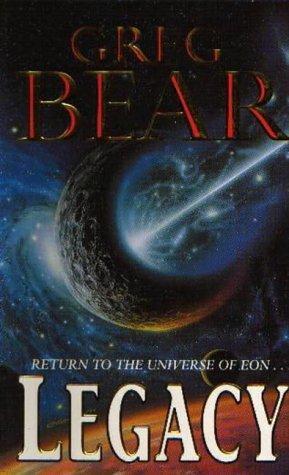
Legacy
by
Greg Bear
Published 1 Jan 1995
Their smallnesses and failures could easily be my own. Even Brion’s grief for Caitla seemed cheapened by his arrogance, his presumption that people of such a high standing could not die, that some magic must keep them alive. How did that differ from me? On Thistledown I would undoubtedly opt for juvenation — life extension and even body replacement. Caitla and Brion had acted on their beliefs, however skewed or inadequate, and so far, I had done nothing — used none of my expertise, exercised none of my (admittedly few) options, managed to always find myself in positions where aloofness was the best choice. Lenk’s activism had brought his people here and subjected them to immense suffering.

Chickenhawk
by
Robert Mason
Published 28 Mar 2005
That frustrated engineer inside me is getting out more often. I’m writing, too. Upcoming is a book about the invention of vertical flight, a screen-play about Bill Reeder’s survival as a POW in Vietnam, a third Solo novel, and a movie I want to write and produce myself. Where do I file for a life extension? Robert Mason High Springs, Florida October 10, 2004 FORTHE BEST IN PAPERBACKS, LOOK FOR THE In every corner of the world, on every subject under the sun, Penguin represents quality and variety—the very best in publishing today For complete information about books available from Penguin—including Penguin Classics, Penguin Compass, and Puffins—and how to order them, write to us at the appropriate address below.
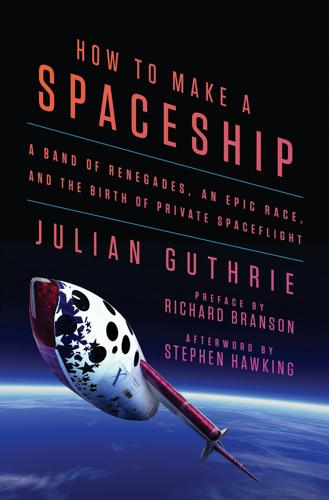
How to Make a Spaceship: A Band of Renegades, an Epic Race, and the Birth of Private Spaceflight
by
Julian Guthrie
Published 19 Sep 2016
He told Burt an abbreviated version of his loving-NASA leaving-NASA tale. Peter said that when he started realizing that NASA was not going to be the one to get him to space, he began to think of his medical degree in a different light. He wanted to better understand human longevity. He believed he needed to invent something in the field of life extension to get beyond the 122-year maximum for a human. He had hoped that Harvard Medical School might give him just the advantage to figure out how to live long enough to reach space. After Peter and Marc left, Burt scratched his head. This space geek earned two degrees from MIT and graduated from Harvard Medical School, with no intention of practicing medicine?

Lifespan: Why We Age—and Why We Don't Have To
by
David A. Sinclair
and
Matthew D. Laplante
Published 9 Sep 2019
Pieper, et al., “Change in the Rate of Biological Aging in Response to Caloric Restriction: CALERIE Biobank Analysis,” Journals of Gerontology, Series A: Biological Sciences and Medical Sciences 73, no. 1 (January 2018): 4–10, https://academic.oup.com/biomedgerontology/article/73/1/4/3834057. 9. McGlothin wrote in an article, “I am delighted that a 70-year-old can have biomarkers that are like those of a healthy school-age child.” P. McGlothin, “Growing Older and Healthier the CR Way®,” Life Extension Magazine, September 2018, https://www.lifeextension.com/Magazine/2018/9/Calorie-Restriction-Update/Page-01. 10. The authors are in no doubt of the potential benefits calorie restriction offers humans in terms of addressing diseases and aging. “A clear understanding of the biology of ageing, as opposed to the biology of individual age-related diseases, could be the critical turning point for novel approaches in preventative strategies to facilitate healthy human ageing,” they wrote.

The end of history and the last man
by
Francis Fukuyama
Published 28 Feb 2006
The final technological possibility is the one I wrote about in my book Our Posthuman Future, which is that our ability to manipulate ourselves biologically, whether through control over the genome or through psychotropic drugs, or through a future cognitive neuroscience, or through some form of life extension, will provide us with new approaches to social engineering that will raise the possibility of new forms of politics. I chose to write about this particular technological future because the threat is much more subtle than the one posed by nuclear weapons or climate change. Here the potentially bad or dehumanizing consequences of technological advance are tied up with things like freedom from disease or longevity that people universally want, and will therefore be much more difficult to prevent.
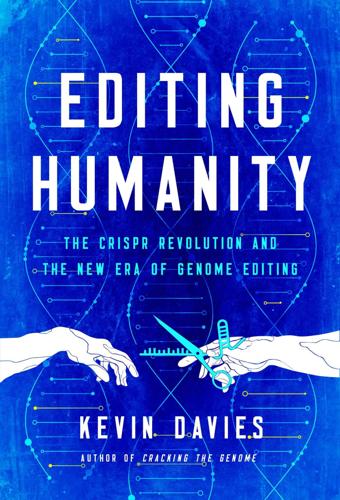
Editing Humanity: The CRISPR Revolution and the New Era of Genome Editing
by
Kevin Davies
Published 5 Oct 2020
Scientists are eagerly trying to untangle the neural basis of this extraordinary ability and its possible genetic underpinnings. Julian Savulescu, a philosopher at Oxford University, can reel off a list of traits he’d like to see engineered into humans that would have made Stan Lee blush. Bat sonar. Hawklike vision. Enhanced memory. Radical life extension. Increased IQ to the point that we become a separate species. Humans have been seeking to enhance the quality of life for years. We add iodine to salt and vitamin D to milk, and calcium to orange juice. We take Ritalin to improve concentration, hormones to improve vitality, and undergo Lasik surgery to dispense with spectacles.

Smart Grid Standards
by
Takuro Sato
Published 17 Nov 2015
Once the debt services are paid, these projects have no fuel cost, the equipments are expected to work for a long period, while at the same time the operating costs are extremely low. A hydropower project developed privately will have a debt payment structure for 10–17 years, while a publicly funded project would have a bit longer term. Upon fulfilling the debt service, the only remaining costs are of Operation and Maintenance (O&M), and of the life extension of the equipment and structures. Once the debt is repaid the cost of power is reduced significantly. For example, the cost of power drops to less than $1/MW h for a small hydropower project, and for large-scale projects to less than $0.5/MW h. With the advancement in technology, upgradation of existing power facilities is important, which usually leads to an increased power output and energy production.

Valley of Genius: The Uncensored History of Silicon Valley (As Told by the Hackers, Founders, and Freaks Who Made It Boom)
by
Adam Fisher
Published 9 Jul 2018
At the time it seemed totally obvious that Tim was going to join the circus—and he slipped in like a hand to a glove. Louis Rossetto: He was in his cybervisionary stage. Dan Kottke: Tim was promoting anything and everything related to new technology. Remember S.M.I2.L.E? Space Migration, Intelligence Increase, Life Extension? Jaron Lanier: If you talk to Tim about it, and he’s no longer with us, he said that actually this plan was set in motion years earlier by William Burroughs, who told him that the computer people would eventually remake the world. And it was really important to connect with them as soon as it started to happen.
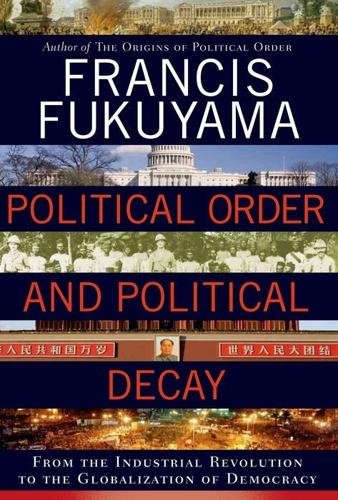
Political Order and Political Decay: From the Industrial Revolution to the Globalization of Democracy
by
Francis Fukuyama
Published 29 Sep 2014
See Erik Brynjolfsson and Andrew McAfee, The Second Machine Age: Work, Progress, and Prosperity in a Time of Brilliant Technologies (New York: Norton, 2014). 13. Robert H. Frank and Philip J. Cook, The Winner-Take-All Society (New York: Free Press, 1995). 14. See Fukuyama, Origins of Political Order, pp. 460–68. 15. I discuss the social and political consequences of life extension in Our Posthuman Future: Consequences of the Biotechnology Revolution (New York: Farrar, Straus and Giroux, 2002), pp. 57–71. 16. Karl Polanyi, The Great Transformation (New York: Rinehart, 1944). 31: POLITICAL DECAY 1. Robert H. Nelson, A Burning Issue: A Case for Abolishing the U.S. Forest Service (Lanham, MD: Rowman and Littlefield, 2000). 2.

Enlightenment Now: The Case for Reason, Science, Humanism, and Progress
by
Steven Pinker
Published 13 Feb 2018
Dementia Rates Are Dropping Even as Population Ages,” New York Times, Nov. 21, 2016. 16. Bush’s Council on Bioethics: Pinker 2008b. 17. L. R. Kass, “L’Chaim and Its Limits: Why Not Immortality?” First Things, May 2001. 18. Longevity estimates regularly superseded: Oeppen & Vaupel 2002. 19. Reverse-engineering mortality: M. Shermer, “Radical Life-Extension Is Not Around the Corner,” Scientific American, Oct. 1, 2016; Shermer 2018. 20. Siegel, Naishadham, & Jemal 2012. 21. Skepticism about immortality: Hayflick 2000; Shermer 2018. 22. Entropy will kill us: P. Hoffmann, “Physics Makes Aging Inevitable, Not Biology,” Nautilus, May 12, 2016.

The Quest: Energy, Security, and the Remaking of the Modern World
by
Daniel Yergin
Published 14 May 2011
The goal of 50 percent nuclear almost certainly will be abandoned, with greater reliance placed instead on imported LNG, increased emphasis on efficiency and renewables, particularly solar and possibly geothermal, and a stepped-up research effort. The most dramatic turnaround was in Germany. Three days after the accident, German Chancellor Merkel disavowed the nuclear option. She ordered the closing of seven nuclear power plants at least temporarily and withdrew her support for life extension for existing plants. The accident in Japan “had changed everything in Germany,” she said. “We all want to exit nuclear power as soon as possible and make the switch to supplying via renewable energy.”21 Several weeks later, her government made it official, ordering the closing of all the German nuclear plants by 2022.
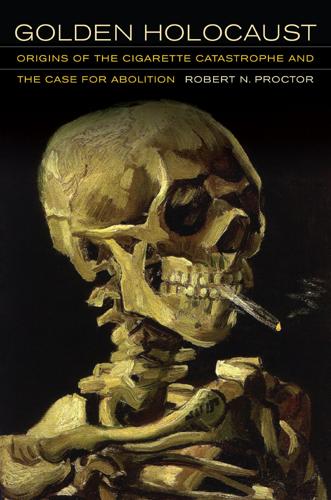
Golden Holocaust: Origins of the Cigarette Catastrophe and the Case for Abolition
by
Robert N. Proctor
Published 28 Feb 2012
The earliest known actuarial report of smokers dying, on average, earlier than nonsmokers appears in the Proceedings of the Association of Life Insurance Medical Directors (New York: Knickerbocker Press, 1912), pp. 473–75, where Edwin Wells Dwight, chairman of the Medical Directors’ Association, presented data from 180,000 New England Mutual policyholders showing that “tobacco abstainers” had a 43 percent lower mortality than expected from American Experience Tables. Ten years later, a Life Extension Institute study of Dartmouth College graduates (class of 1868) showed smokers dying about seven years earlier than non-smokers; see Cassandra Tate, Cigarette Wars: The Triumph of the Little White Slaver (New York: Oxford University Press, 1999), p. 143. 62. Maurine B. Neuberger, Smoke Screen: Tobacco and the Public Welfare (Englewood Cliffs, NJ: Prentice-Hall, 1963), p. 6.

Food Allergy: Adverse Reactions to Foods and Food Additives
by
Dean D. Metcalfe
Published 15 Dec 2008
Effect of dietary butylated hydroxyanisole on methylazoxymethanol acetate-induced toxicity in mice. Food Chem Toxicol 1982;20:853–9. 1 Lecos C. Food preservatives: a fresh report. FDA Consumer 1984;4:23–5. 2 Jukes TH. Food additives. N Engl J Med 1977;297:427–30. 3 Babich H. Butylated hydroxytoluene (BHT): a review. Environ Res 1982;29:1–29. 4 Llaurado JP. The saga of BHT and BHA in life extension myths. J Amer Coll Nutr 1985;4:481–4. 5 Lauer BH, Kirkpatrick DC. Antioxidants: the Canadian perspective. Toxicol Ind Health 1993;9:373–82. 6 Klein PJ, Van Vleet TR, Hall JO, Coulombe Jr RA. Dietary butylated hydroxytoluene protects against aflatoxicosis in turkeys. Toxicol Appl Pharmacol 2002;182:11–19. 7 Klein PJ, Van Vleet TR, Hall JO, Coulombe Jr RA.